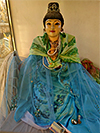|
Thai name for the demon Mara, the god of desire and death, and the personification of evil, who tried to withhold Prince Siddhartha from becoming Enlightened. In Thai iconography, he is often depicted riding an elephant, and during the Buddha's maravijaya, he is usually portrayed drowning in the torrents of water gushing from the hair of Mae Phra Thoranee (fig.). See also mriti and amrita. WATCH VIDEO. 回 Name of a monkey of the genus Macaca. READ ON. 回 See duang nuad yao kho malaai. 回 Thai name for an evergreen tree and its fruit, with the scientific name Garcinia schomburgkiana and of the family Guttiferae. Its long, oval shaped, edible fruit is green and has a very sour tatse. It is rich in Vitamin C. Besides its fruit also some of its young, lance-shaped leaves and their buds can be used as nutritious food ingredients, e.g. to make nahm phrik. Its root and leaves are used in herbal medicine for a variety of ailments. It has been traditionally used as a cough treatment, a diabetes medication, and a laxative. It has been reported as rich sources of xanthones, which are normally found in higher plants. Garcinia is of the same genus as the mangosteen (Garcinia mangostana). 回 Sanskrit. Another name for Kama or Kamadeva, the Hindu god of love. The word madana literally means ‘delighting’, but also ‘passion’, ‘intoxicating’ and ‘inebriating’, and the English word mad derives from it. He is also known as Manmatha, i.e. ‘Churner [of the mind]’. His consort or shakti is known as Rati. 回 1. Thai-Pali. The son of Hanuman (fig.) and the mermaid queen Suphanamatcha (fig.) in the epic Ramayana, thus having the body of a monkey with a fish tail. Later, Rama cut off his tail so that he was no longer part fish. Also spelled Matchanu. See also TRAVEL PICTURE. 回 2. Thai-Pali. Name of the submarine HTMS Madhanu, as well as the generic name for this particular type of Japanese-built submarine, of which a total of four were used by the Royal Thai Navy between 19 July 1938 and 30 November 1951, the date on which all U-boats were decommissioned (fig.), after the Navy's Submarine Group had already been dissolved on 16 July, following a group of naval officers' involvement in the failed coup of 29 June 1951. This type of submarine was 51 meters long, 4.1 meters wide, and armed with four 450 millimeter torpedo tubes (fig.). Whereas the HTMS Madhanu is named after the son of Hanuman and the mermaid queen Suphanamatcha from the Thai story Ramayana (fig.), the other three U-boats were named HTMS Wirun, after Wirunchambang, a giant or yak with a navy blue complexion (fig.); HTMS Sin Samut, after a character from the story Phra Aphaimanih; and HTMS Phlaay Chumphon, after a character from the story Khun Chang Khun Paen. Following their eventual dismantlement, parts of the submarines were brought to the Naval Museum (fig.) in Samut Prakan, where they are still preserved today. Also spelled Matchanu. See also Chumphon. 回 Thai name for a kind of fig tree of which there are several species, several being similar to the cluster fig tree. The family includes the madeua kliang or madeua uthumphon, madeua kwahng, madeua ching, madeua plong, madeua chumphon and madeua hom. 回 madeua kliang (มะเดื่อเกลี้ยง) Thai name for the ficus racemosa or ficus glomerata, a type of cluster fig tree belonging to the family of Moraceae, with the Thai name madeua. It grows near watersides where it thrives well. Its fruit grows in dense clusters on the main, usually thicker branches, and directly on its trunk. The 2.2-5 cm pear-shaped receptacles, called figs, are initially yellow-green and turn dark red-brown when ripening (fig.). This independent deciduous tree grows up to 24 meters and has a rather open crown and large spreading branches. It sheds its leaves in January. The fig is in fact a compartment enclosing hundreds of small flowers which are pollinated by blastophaga wasps, very small wasps that crawl through the mouth of the fig which opens as the fig starts to ripen, in search of a suitable place to lay their eggs. In turn, the figs provide a safe haven and nourishment for the next generation of wasps. In Sanskrit called udumbara and sometimes referred to as goolar fig, a word derived from its Hindi name. The tree is native to Australasia, South-East Asia and the Indian Subcontinent. Also called madeua uthumphon (มะเดื่ออุทุมพร). 回 Thai name for a large independent deciduous or semi- evergreen tree with the scientific name Ficus callosa, that grows up to 30 meters and belongs to the family of Madeua. The yellow-green 1.8-2.8 cm figs grow solitary or paired in leaf axils or slightly behind the leaves. The tree has a rounded crown and a long straight trunk that becomes slightly buttressed with age. 回 Thai name for a small independent evergreen or semi-deciduous fig tree with the scientific name Ficus hispida, that grows up to 12 meters and belongs to the family of Madeua. Its 2.5-4 cm figs grow clustered on long stems hanging from the trunk and the main branches. 回 A name for Krishna or Vishnu. 回 A name for Lakshmi, a consort of Vishnu. 回 Sanskrit. A name for Varuni, goddess of wine and consort of Varuna. See also Sura. 回 Thai. ‘Shy mother’. Nickname for the maiyarahb. Also transcribed mae aai or mae ahy. It is also the name of an amphur in Chiang Mai Province, in the vicinity of the border with Myanmar. 回 Thai. Buddhist nun, i.e. a female lay renunciant in Thai Theravada Buddhism who observes the Eight Precepts (atthasīla) and lives a celibate, disciplined life dedicated to spiritual practice. Typically dressed in plain white robes with a shaved head, a mae chi resides in temples or meditation centers but does not receive full ordination as a bhikkuni, i.e. a fully ordained nun. They have lay status and do not belong to the Sangha. Yet, although not formally recognized within the monastic Sangha, mae chi play an important role in religious life through meditation, Dharma study, and community service. Their status reflects institutional limitations on female ordination, though recent decades have seen growing advocacy and alternative paths for female monastics in Thailand. Also naang chi (fig.). See also bhikkuni, chi phraam, and sihnlajarinee. 回 Thai. ‘Royal Mother from the Sky’ or ‘Heavenly Royal Mother’, a nickname given to Princess Sri Nagarindra (fig.) by the hill tribe people of Chiang Rai, where she had her home, i.e. Doi Tung Royal Villa (fig.). The name derives from the fact that the Queen Mother often traveled by helicopter and thus arrived ‘from the sky’. WATCH VIDEO (1), (2) and (3). 回 Name of a National Park in the northern part of Chiang Mai Province. READ ON. 回
The small capital of a
jangwat of the same name in Northwest Thailand (map), at 924 kms
from
Bangkok.
READ ON Thai. An old stretch of rail track, that runs between Wong Wian Yai in Thonburi and Samut Songkhram on the Gulf of Thailand. Originally constructed as a private line to take sea produce from the fishing ports of Samut Sakon (Mahachai) and Samut Songkram to the markets of Bangkok, it later became part of the State Railway of Thailand, though it was never physically connected to the rest of the network. This little known railway line has great charm and passes through still unspoiled countryside, and terminates in the middle of the fresh food market in Samut Sakhon, where vendors sell their groceries along and between the rails, only stepping aside and removing the awnings when the next train is due. From there, one has to take a ferry across the Tha Jihn (Tha Chin) river, where trains connect to Samut Songkhram on the Mae Khlong river, from a parallel station on the west bank. A similar rail track market as described above is found in the centre of Samut Songkhram (fig.). 回 Mae Khong (แม่โขง, ແມ່ນອງ, មេគង្គ) 1. Thai-Lao-Khmer. Popular and shortened name of Thailand's longest waterway, which is also the 12th longest river in the world, and in full known to as Mae Nahm Khong. It rises in the Himalayas and forms the border between Thailand and Laos (fig.), and Laos and Myanmar (Burma), at the Golden Triangle. It is formed by the melt waters of the Tibetan Himalayas joined by several other rivers. It is 4,590 kms long and passes through 7 countries (or six, if Tibet is seen as part of China), namely: Tibet, China, Myanmar, Thailand, Laos, Cambodia, and Vietnam, where it forms one of the world's largest deltas, before flowing into the South China Sea at five different locations. This delta is in Vietnamese known as Cuu Long, which translates as ‘Nine Dragons’ (map - fig.). In Tibet, the river is known as Dza Chu (ཟླ་ཆུ།), which translates as ‘River of Rocks’; in China, it is besides Mei Gong He (湄公河) officially called Lancang Jiang (澜沧江), which literally means ‘Vast Swelling Water River’, but which is usually translated as ‘Turbulent River’; but in southern China and the northern part of Laos, it may also be referred to as Lan Xang or Lahn Sahng (หลานซาง), a term related to Lan Chang, though from the Golden Triangle onward it is in Laos also known as Mae Nahm Khong (ແມ່ນ້ຳຂອງ); whereas in Cambodia, it is called Tonlé Khong (ទន្លេគង្គ) or Tonlé Mae Khong (ទន្លេមេគង្គ). The Mae Khong basin is the habitat of the Giant Catfish (fig.), the world’s largest known freshwater fish, and in the Mae Khong delta, wooden boats transporting live fish are a common sight (fig.). Also spelt Mekhong. See also Yunnan. WATCH VIDEO and VIDEO (EN). 回 2. Name of a Thai brand of rice whisky. 回 1. Thai. Name of a river that is formed in the tambon Ban Tai (บ้านใต้) in Kanchanaburi, by the confluence of the rivers Kwae Yai and Kwae Noi (fig.), literally the ‘Greater Tributary’ and the ‘Small or Lesser Tributary’. From Kanchanaburi, it (fig.) flows through Ratchaburi to empty into the Gulf of Thailand in Samut Songkhram, of which the provincial emblem bears the picture of a large drum (klong) floating on the water (fig.), which is both a reference to the old name of the city, i.e. Meuang Klong, as well as to the river that flows through it. See MAP. 回 2. Thai. Name of a tambon, i.e. a ‘subdistrict’, in the city and province of Samut Songkhram. It was the hometown of the famous Siamese Twin In and Chan (fig.), and is today best known for the Talaat Rom Hoop Railway Market (fig.). 回 Thai. Name of the King of Lan Na, who reigned from 1551 to 1564 AD. He became a tributary king to the Burmese King Bayinnaung of Toungoo, after the latter captured Chiang Mai during the War over the White Elephants, which is also known as the Burmese-Siamese War of 1563-1564. Since Mae Ku died of illness while being a captive vassal king to Burma, he was integrated as one of 37 nats that belong to the official pantheon of spirits worshipped in Myanmar, and known as Yun Bayin, literally ‘King of the Yun’, with Yun being the Burmese term that refers to the Northern Thai people otherwise known as Tai Yuan, of whom some also live in Yunnan and in Laos. King Mae Ku is officially known as King Mekuti Sutthiwong (เมกุฏิสุทธิวงศ์). See also LIST OF THAI KINGS and LIST OF BURMESE NATS. 回 Another name for the Thai goddess of rice Poh Sop. Also spelled Mae Khwan Khaw. 回 Thai term to refer to the various fighting techniques in muay thai, i.e. Thai boxing. Generally, strikes are known as kaanrook (การรุก), whereas defence poses are called kaanrab (การรับ). Punches are called mat (หมัด), but if performed with the elbow they are called tee/tih sok (ตีศอก), with the knee tee/tih khao (ตีเข่า), and when using the feet the strikes are classified as theeb/thihb (ถีบ). See also POSTAGE STAMPS and WATCH VIDEO. 回 Thai. ‘Mother Naak’. Another name for Naang Naak, who is fully also known as Mae Naak Phra Khanong. 回 Mae Naak Phra Khanong (แม่นากพระโขนง) Thai. ‘Mother Naak [of] Phra Khanong [district]’. The full name of Mae Naak, i.e. Naang Naak, after the district in Bangkok (fig.) where her story, supposedly based on events that took place during the reign of King Rama IV, is set. 回 Full Thai name for the Mae Khong River. 回 Thai. Generic name for certain adult invertebrates, including most insects, but also jellyfish and certain species of crab, scorpions, etc. Two kinds are distinguished: i.e. those of which the head and abdomen form one single section, and those with a clearly divided head and abdomen. Maeng typically have 8 or 10 legs, no antennae and no wings. Although terms are often used interchangeably, other kinds of insects are most often called malaeng, whereas pupae or insects in the larval stage usually carry yet another name. 回 1. Thai. Short name for the Giant Water Bug, which is fully known as maegda moh. 回 2. Thai slang for a pimp. 回 3. Short for maengda talae, the horseshoe crab. 回 Thai. Name for the Giant Water Bug. READ ON. 回 maegda moh Thai name for the horseshoe crab. 回 Thai for ‘jellyfish’, also referred to as ‘sea jelly’ or simply ‘jelly’, of which there are around 2,000 varieties, in appearance often transparent or translucent and with stinging tentacles, used for protection and to catch prey. READ ON. 回 Thai. Name for a kind of Cockchafer, i.e. a scarab beetle of the genus Holotrichia, that belong to the order Coleoptera and the superfamily Scarabaeoidea. There exist several subspecies, including Holotrichia longipennis and Holotrichia problematica. In Thai the different varieties are called maeng kinoon daeng noi (แมงกินูนแดงน้อย), maeng kinoon daeng (แมงกินูนแดง), maeng kinoon daeng yai (แมงกินูนแดงใหญ่), maeng kinoon thong (แมงกินูนทอง), maeng kinoon dam (แมงกินูนดำ), etc. Depending on the species, they are light to reddish brown, to near black, and about 22 to 25 millimeters in length. They dig into the soil and live near or in the roots of trees and plants, oftentimes causing damage to crops such as ginger. During the day they stay in the earth to avoid the heat, while during the night they come out of the burrows to feed, flying high up in trees in search of young leaves. In some parts of Isaan, they are fried and eaten as a snack. Alternatively called maeng jihnoon (แมงจีนูน) and maeng ihnoon (แมงอีนูน). 回 Thai. ‘Drunken insect’. Thai term for winged termites (fig.). They are the offspring of real termites and are sent out in large swarms (fig.) by the nest, to establish new colonies, typically at sundown during the rainy season. Their Thai designation refers to the fact that they seem to be completely disorientated and once they have dropped onto the floor, they act even more so, going around in circles, as if they are drunk. Although the majority of them will die, it takes only one male and one female to become the king and queen of a new colony. These winged termites aid in the development of hed pluak, literally ‘termite mushrooms’, an edible species of wild mushroom naturally found near termite mounds, as they sprout from the burrows created by the winged termites when leave the old nest. 回 Thai generic name for any kind of spider. Maeng is a generic name for insects with 8 or more legs, and without antennae nor wings, whereas moom means ‘corner’. Maengmoom could thus be translated as ‘eight-legged corner insect’. Many species spin webs to capture insects as food (fig.), though some hunt for prey, such as Huntsman Spiders (fig.), which are able to move up to 40 body lengths per second and have rotatable legs that enable them to collapse them down and become really flat so they can easily hide in crevices, such as tree bark. Notwithstanding, all spiders are able to produce silken threads from glands in their abdomen, often in order to make a nest (fig.). Thailand also has some cave spiders (fig.), i.e. spiders that dwell solely in caves. The world's largest spider by leg-span is the Giant Huntsman Spider (Heteropoda maxima), a cave dwelling spider of the genus Heteropoda (fig.) found in Laos, and laying claim to a leg-span of 30 centimeters. Other large spiders include certain species of wolf spider, of which some may additionally be funnel-web spiders, known in Thai as maengmoom yai kruay (แมงมุมใยกรวย), whilst others may resemble nursery-web spiders. Besides this, there are several species of tarantula (fig.), some of which are eaten in some parts of Southeast Asia (fig.). See also WILDLIFE PICTURE (1) and (2). 回 maengmoom kradoht (แมงมุมกระโดด) Thai. ‘Jumping spider’. Generic name for any spider in the family Salticidae. READ ON. 回 maengmoom lang naam (แมงมุมหลังหนาม) Thai. ‘Spiny-backed spider’. Generic name for a genus of spider. READ ON. 回 maengmoom mae maay nahm tahn (แมงมุมแม่หม้ายน้ำตาล) Thai. ‘Brown Widow Spider’. Name for a very venomous spider, with the scientific designation Latrodectus geometricus. Though it was previously only rarely found in a few places outside Africa and the Americas, it recently started to occur also in Thailand. According to the Thai Nature Education Centre this species was introduced in the wild accidentally through some arachnophiles, i.e. fans of spiders, who imported it from abroad. Once escaped, it reproduced rapidly, as females lay between 200 to 400 eggs at a time, and has now spread to about 20 Thai provinces. This bulbous spider, with rather long fore and hind legs, has a body size of about one centimeter. Its neurotoxic venom is purportedly twice as potent as that of the black widow, though usually stays confined to the bite area. If bitten, medical attention is needed. 回 maengmoom sih thong laai phah batik (แมงมุมสีทองลายผ้าบาติค) Thai designation for the Batik Golden Web Spider. 回 maengmoom yai thong laai khanaan (แมงมุมใยทองลายขนาน) Thai designation for the Golden Orb-web Spider. 回 Thai. ‘Giant spider’. Another name for beung. 回 Thai for ‘scorpion’. READ ON. 回 Thai for Whip Scorpion, a literal translation of the English designation. 回 Thai name for a species of rather large Water Scavenger Beetle, with the scientific designation Hydrous cavistanum. It belongs to the order Coleoptera and to the family Hydrophilidae (fig.). In Thai, it is also known by the name malaeng niang (แมลงเหนี่ยง). It is black in colour, almond-shaped, and has a strongly keeled abdomen. In addition to scavenging, adults may be predatory or vergetarian. This species of beetle is fried and eaten as a snack in some parts of Thailand, especially in Isaan. 回 Thai name for the goddess of wind and air, who serves as the female counterpart to Vayu, the Vedic god of the wind and air. WATCH VIDEO. 回 Mae Phra Phloeng (แม่พระเพลิง) Thai name for the goddess of fire, who serves as the female counterpart to Agni, the Vedic god of fire. The fire goddess is also thought to be the deity of light, possessing the power to rescue humanity from utter darkness, and thus can bring Enlightenment. In iconography, Mae Phra Phloeng is typically depicted wearing a halo of flames. WATCH VIDEO. 回 Mae Phra Thoranee (แม่พระธรณี) Another name for the Thai goddess of rice Poh Sop. 回 1. Thai. Name of a town in Chiang Rai Province and Thailand’s official northernmost point. READ ON. 回 2. Thai. Name of a restaurant in Chiang Mai which has earned itself a Michelin Star preparing and serving the typical northern noodle dish khao soi (fig.). WATCH VIDEO. 回 Thai. Name a kind of spirit or thevada, that looks out for infants, i.e. a sort of guardian angel that looks after kids. There are seven different kinds of those guardian spirits, one for each day of the week, and children will receive their guardian angel according to the day on which they are born, similar as in the dao prajam wan, sat prajam wan, sih prajam wan, and Phra prajam wan systems. The seven Mae Seua are known individually by the names Wichitmahwan, who is represented with a red human-like body and the head of a lion (singh), and who correspondents to Sunday; Wannongkrahn, who is represented with an off-white (khao-nuan) human-like body and the head of a horse, and who correspondents to Monday; Yaksaborisut, who is represented with a pink (or sometimes black) human-like body and the head of a buffalo (fig.), and who correspondents to Tuesday; Samonthat, who is represented with a human-like body and the head of an elephant (fig.), similar to the Hindu deity Ganesha (fig.), and who correspondents to Wednesday; Galohtuk, who is represented with a pale yellow human-like body and the head of deer, and who correspondents to Thursday; Yaknongyao, who is represented with a light blue-greyish human-like body and the head of an ox (ko - fig.), and who correspondents to Friday; and lastly Ekalai, who is represented with either a blackish or an orangey-yellowish human-like body with black cloud-like stripes and the head of tiger (seua), and who correspondents to Saturday (fig.). 回 Name of a vibrant and unique marketplace renowned for its diverse selection of forest products. Situated along the Lampang-Lamphun Superhighway, it has become a popular stop for travelers en route to Mae Tah District in Lamphun Province. The market offers an intriguing variety of jungle foods, including delicacies such as frogs, buffalo placenta, pig intestines, and an array of insects like Giant Water Bugs (fig.), Asian Palm Weevil larvae (fig.), silkworm pupae (fig.), and larvae of various hornets, such as the Greater Banded Hornet and the Asian Giant Hornet (fig.). These exotic ingredients provide a glimpse into the local culinary traditions and the close relationship between the community and the surrounding forest. Known in Thai as Kaad Baan Tah Doi Kaeo (กาดบ้านทาดอยแก้ว), Kaad Mae Tah (กาดแม่ทา) and Talaat Mae Tah (ตลาดแม่ทา). WATCH VIDEO. 回 1. Thai name for Hmong. Also Miao. MORE ON THIS. 回 2. Language belonging to the family of Miao-Yao-Pateng, a subgroup of the Sino-Tibetan language group that includes Chinese, Burmese and Tibetan. Also Miao. MORE ON THIS. 回 Thai generic name for any kind of cat. See also Siamese Cat and POSTAGE STAMPS (1), (2) and (3). WATCH VIDEO. 回 Thai for Leopard Cat. Compare with seua dao. 回 Thai. ‘Beckoning Cat’. Thai name for the Japanese cat Maneki-neko (fig.). Compare with Nang Kwak. See also kwak. WATCH VIDEO. 回 Thai. Mascot or spirit guarding a ship or a boat. 回 Thai name for a tree (fig.), with the botanical name Baccaurea ramiflora, which is listed in the family Euphorbiaceae and yields small, round, yellowish-orange fruits, that are commonly known as Burmese grapes (fig.) and in some way similar in appearance to longkong (fig.) or langsat (a kind of longkong), but are more spread on the branch, i.e. less clustered, while its skin can more easily be removed. The flesh (fig.) has a sweet citrus-like flavour, a soft creamy texture, and is usually eaten including the seed, which is inextricably attached to the flesh. The tree fruits from April to May and is found all over Thailand. In Thai, also known as sae khreua sae (แซเครือแซ), pha yiw (ผะยิ้ว), hamkang (หัมกัง), and somfai (ส้มไฟ). 回 Thai name for a tree with the Latin name Averrhoa carambola and its fruit, the star fruit. 回 Sanskrit. Ancient language from Magadha. It is believed to be the language spoken by the Buddha. Also called Magahi. 回 Burmese. Name for a mythical sea creature in Myanmar considered to be a local form of the makara and resembling a crocodile (fig.) with a prehensile trunk-like snout. See also Nga Moe Yeik (fig.) and compare with the snout of Pensajuba (fig.). 回 See Tham Kaew Saraphat Neuk. 回 See Tham Kaew Saraphat Neuk. 回 Magistrates of the Netherworld The scribes of Yan Mo (fig.), who is also known as Yan Wang (fig.), the king of death and the counterpart of the Vedic god Yama. READ ON. 回 Common name for a butterfly with the scientific designation Euploea radamanthus. It belongs to the Danaid group within the brush-footed butterfly family. It is somewhat reminiscent of the Striped Blue Crow (fig.). It is native to Southeast Asia and often found gliding gracefully through forested areas and gardens. With a wingspan of around 90-100 mm, this species is recognized for its dark brown or black wings adorned with striking iridescent blue or white streaks, most prominent on the forewings and hindwings. The body, especially in males, gleams with a subtle blue or purple sheen, adding to its elegant appearance. This butterfly has a slow, deliberate flight, typical of many members of the Danainae subfamily. Its preferred habitat includes tropical and subtropical forests, where it seeks out nectar from flowering plants. The larvae feed on plants from the Apocynaceae family, such as milkweed and oleander, which contain toxins that render them unpalatable to predators. Euploea radamanthus is also part of a fascinating mimicry complex, engaging in Müllerian mimicry with other distasteful species to reinforce their shared warning signals to predators. The vivid wing patterns not only add to its beauty, but also serve as a defense mechanism in the wild. WATCH VIDEO en VIDEO (EN). 回 Thai for ‘dog’. This word has a rising tone and is not to be confused with the same word (mah), but with a high tone which means ‘horse’. Sometimes transcribed ma. See also sunak. 回 1. Sanskrit-Pali-Thai, Burmese. ‘Great’ or ‘mighty’. A prefix often placed before the name or title of important persons, things and places. See also prom. 回 2. Thai. A graduate in Buddhist theology who has passed at least the third grade exam, out of a total of nine. He must be a member of the clergy, though retains the title after leaving the priesthood. 回 Thai for an officer of a royal or princely household, a royal page. 回 Maha Atulawaiyan Kyaungdawgyi (မဟာ အတုလဝေယန် ကျောင်းတော်ကြီး) Burmese. ‘Great Supreme Monastery School’. Another name for Atumashi Kyaung (fig.). 回 Name of the king who became so powerful that he dominated the triloka (three worlds). Vishnu in his avatar of a dwarf (Vamana) eventually subdued him. 回 Burmese. Name of a Burmese general, who was commander-in-chief of the Royal Burmese Armed Forces from 1821 AD until 1825 AD. READ ON. 回 Sanskrit. ‘The Great Bharata’. Great epic from India dated around the 4th century BC. It contains chronicles of the Vedic times and is composed of eighteen books consisting of one hundred and ten thousand couplets relating the great battle of the Bharatas between the Kauravas and the Pandavas, two related families of a royal lineage. The Hindu god Krishna emerges as one of the protagonists of the poem in which he reveals the Bhagavad Gita. In Thai, the story is known as Mahapharata, thought there is also a Thai adaptation of the story called Mahabharata Yudh or Mahapharata Yuth (มหาภารตะยุทธ), with Yudh or Yuth being a Sanskrit word meaning ‘war’ (compare with Ayutthaya), but which is also an abbreviation of Yudhisthira, i.e. the Dhammaracha and the leader of the successful Pandava side in the Kurukshetra War. The Mahabharata Yudh is a shortened version of the Mahabharata, which varies from the original story and was translated and composed by Karunah Kusalahsai (กรุณา กุศลาสัย) and his wife Reuangurai Hinchiranan (เรืองอุไร หิญชีระนันทน์). Illustrations for the publication of the Mahabharata Yudh were made by Hem Wetchakon and one of those, depicting the archer Arjuna riding a chariot, appears on a Thai postage stamp issued in 2004 (fig.). 回 Sanskrit-Hindi. ‘Great Enlightenment’ or ‘Great Awakening’. Name of a temple with a pagoda at Bodh Gaya in Bihar state in India, built over the bodhimanda, i.e. the exact spot where the Buddha attained Bodh, that is ‘Perfect Knowledge’ or ‘Enlightenment’. The emperor Asohk erected a monument at this spot which was later destroyed and rebuilt as the Maha Bodhi pagoda, which is in the sikhara-style (fig.), i.e. a truncated pyramidal structure topped with an amalaka (fig.). Over time, the stupa has been rebuilt and restored several times and the current straight-sided pyramid stands arounf 55 metres tall. Many temples in Buddhist countries have been modelled after the Maha Bodhi pagoda, such as Wat Yahn in Chonburi (fig.) Wat Wang Wiwekaram in Sangkhlaburi (fig.), Wat Thammongkhon in Bangkok (fig.), and Wat Mahathat Wachiramongkhon in Krabi (fig.), all in Thailand; Maha Bodhi Phaya in Old Bagan (fig.) in Myanmar; Chua Huyen Khong in Hué (fig.) in Vietnam, etc. Also spelled Mahabodhi. 回 Maha Bodhi Phaya (မဟာဗောဓိဘုရား) Burmese-Sanskrit. ‘Temple of the Great Enlightenment’ or ‘Temple of the Great Awakening’. Name of a Buddhist temple in Old Bagan, named and modelled after the famous Maha Bodhi temple in Bodh Gaya, which commemorates the spot where the Buddha attained Bodh, i.e. ‘Perfect Knowledge’ or ‘Enlightenment’. It was built by King Htilominlo, i.e. Nadaungmya/Zeya Theinkha Uzana, in 1215 AD. The temple consists of a high pyramidal tower on a square base. A Buddha image is placed in the lower storey, as well as another Buddha image in the upper storey, while 465 Buddha images in different postures were placed in the niches all over the surface of the entire spire. At the back of the tower and connected to it, is a small hall with an arched door on either side, that gives a access to a corridor that runs from one door to the other. At the centre, the corridor ceiling has a large round opening, where once a bodhi tree (fig.) grew straight through the hole in the roof, that was specially created for this purpose. See MAP. 回 Maha Bodhi Ta Htaung (မဟာဗောဓိတထောင်) Burmese. ‘A Thousand Great Bodhi Trees’. Name of a Buddhist monastery and centre for meditation located in the village of Khatakan Taung, in Myanmar's Monywa Township, just around 7 kilometers eastward down the road from Thanboddhay Paya (fig.). The temple is known for its many surrounding gardens with hundreds of life-sized Buddha images (map - fig.), similar to the Lonepanyi Garden at Hpa-an, and sacred fig trees, a 69 meter tall pagoda known as Aung Sakkya, as well as the giant reclining and standing Buddha statues. The latter is known as Laykyun Setkyar (map - fig.) and including its base is 129.5 meters high, putting it purportedly in the top three list of largest Buddha statues in the world. The standing Buddha statue can be entered and has 31 floors on the inside, reachable only by staircase yet offering panoramic views over the area from its many open windows. See MAP. 回 Thai. The story of the last great incarnation of the Buddha, consisting of thirteen chapters (kan) and many episodes (lae). 回 1. Thai. Another name for Samut Sakon. 回 2. Thai. ‘Great accomplishment or triumph’. Name of a canal that connects Samut Songkhram with Bangkok and runs straight across the province of Samut Sakon where it crosses the Tachin River. 回 3. Thai. Name for the Thai deity of victory, usually referred to as Phra Mahachai. 回 See Mahajanaka. 回 1. Thai. Name of a monkey in the Ramakien. He has a dark blue complexion (fig.) and is the ruler of Chomphoo City. His queen is from a northern continent and is hence named Kaew Udon. Since they didn't have any children Phra Idsuan granted them a son with a black complexion, who was named Nilaphat (fig.). See also LIST OF RAMAKIEN CHARACTERS & NAMES. 回 2. Thai. Another name for the Veda Bodhisattva Phra Wet Photisat, who in Chinese is called Wei Tuo, and who is associated with Skanda, the Hindu god of war. 回 1. Thai. ‘Great righteous king’. Name of a bronze Buddha image in Phetchabun, that is cast in the Lopburi-style and is the focus of the annual Diving Buddha Image Festival. The Buddha image is the kuh bahn kuh meuang of Phetchabun, and today the province also has a giant Mahadhammaraja Buddha statue, the largest in the world, located in Phetchabura (เพชรบุระ) Buddhist Park, off the main highway into Phetchabun City, and which was officially inaugurated on 26 September 2011. Also spelled Maha Dhamma Racha, Mahadhammaraja or similar. See also list of Thai Kings and WATCH VIDEO. 回 2. Thai. ‘Great Righteous King’. Name of four successive kings of Sukhothai, of the House of Phra Ruwang, that ruled between 1347 and 1446 AD, starting with Phaya Li Thai, i.e. Mahadhammaracha Lithai or Maha Dhamma Racha I, who was succeeded by Phaya Leu Thai (พญาลือไท), followed by Phaya Sai Leu Thai (พญาไสลือไท), and finally Borommaphaan (บรมปาล). See also list of Thai Kings. 回 3. Thai. ‘Great Righteous King’. A title bestowed upon Maha Dhammarachathiraat (fig.), a king of Ayutthaya, of the House of Sukhothai, who ruled for 21 years, from 1569 to 1590 AD. See also list of Thai Kings. 回 Mahadhammaracha Lithai (มหาธรรมราชาลิไท) Thai. King of Sukhothai in the 14th century, who commissioned the casting of the Phraphutta Chinnarat image (fig.) from Wat Phra Sri Rattanamahathat. During his reign, from 1347 until his death in 1376, he moved the city of Phitsanulok, then known as Song Khwae, to its present-day location on the Nan river. Beside his kingship he also taught Buddhist cosmology. Also known as Maha Dhamma Racha I, Thammaracha I or Phaya Li Thai. See also list of Thai Kings. 回 Maha Dhammarachathiraat (มหาธรรมราชาธิราช) Thai. A noble from the House of Sukhothai during the Ayutthaya Period, who was made Lord of Phitsanulok and viceroy or uparacha of the northern provinces by King Maha Chakkraphat in gratitude for putting him on the throne, and whom conferred him with the title of Maha Dhamma Racha. From 29 September AD 1569 to 1584 was the vassal ruler of Siam under King Bayinnaung (fig.) of Burma, and from AD 1584 to 30 June 1590, the independent King of Siam. He married the later Queen Wisutikasat (fig.), the daughter of his predecessor's predecessor, King Maha Chakkraphat, whom he had helped elevate to the throne. He fathered three children, i.e. the Princes Naresuan (fig.) and Ekathotsarot (fig.), and the Princess Suphankanlaya (fig.). He is also known by the crown title Sanphet I, is sometimes referred to by his former name Khun Phirenthorathep (ขุนพิเรนเทพ/ขุนพิเรนทรเทพ), while Maha Dhammarachathiraat may also be transliterated Maha Dhamma Racha Thirat or Maha Thammarachathirat, or similar. See also list of Thai Kings and Sanphet. 回 Thai. Another transliteration for mahathat. 回 Maha Ganayon Kyaung (မဟာဂန္ဓာရုံကျောင်း) Burmese. Name of a Buddhist monastery (kyaung), founded in 1914 and located on the banks of Taungthaman Lake in Amarapura, south of Mandalay, in northern Myanmar. It is home to ca. 1,300 monks and novices, and is renowned as a centre of monastic and linguistic excellence, where besides Pali, the language of Theravada Buddhism, also English, Chinese, German, and Korean are being taught. Sometimes transliterated Maha Gandar Yone. See also maha. 回 Pali-Thai. Name of one of the ten jataka, i.e. life stories of the previous incarnations of the Buddha, which are known in Thai as chadok. In this story, the bodhisatta is born as Prince Mahajanaka, whom after being shipwrecked in the middle of the ocean, is rescued by Mekala. After that, he succeeded his father and became King of Mithila city. The most important scene of the story is when King Mahajanaka comes across two mango trees, one barren, the other heavy with fruit. However, when the King passes by the pair of trees again later, he finds that the tree heavy with fruit had been ripped apart and pulled down by some of his careless subjects, in order to try and reach for its mangoes. The King became distraught by the greed and self-destructiveness of his people, whom ‒even if they liked mangoes‒ in their ignorance had destroyed the good mango tree. Hence, King Mahajaka decided that only with the establishment of an institute of higher learning will his people know how to balance their acts and cravings. Some time later, he renounced his worldly wealth and became a monk. In 2000 AD, the story was modified into a cartoon version by King Bhumiphon. In Thai, pronounced Mahachanok. See also POSTAGE STAMPS (1), (2) and (3). 回 Sanskrit. ‘Great Time’ or the ‘Great Black One’. The personification of Kala in a terrible form, associated with the destructive aspects of Shiva, and personified as a destructive form of Shiva. READ ON. 回 Sanskrit. ‘Great Kali’. The awesome, terrible form of Parvati, with multiple arms, typically ten (fig.), and sometimes with several heads with protruding tongues (fig.). Around her waist she often wears a dress of severed arms and around her neck a garland of decapitated heads. Mahakali is said to be the cosmic form of the goddess, where she embodies the ultimate truth of the universe and holds the power of the other deities in her ten arms. Sometimes depicted standing over Shiva. See also Kali and phuang manao. 回 See Pom Maha Kaan. 回 Maha Kassapa (มหากัสสปะ) Pali-Thai. Name of a brahman of Magadha, who became a disciple of the Buddha and later the monk that succeeded him as leader of the Sangha. Usually represented in iconography and murals as an old man (fig.), generally accompanied by the young monk Ananda, the Buddha's cousin and his most important disciple. He compiled the Buddha's suttas with 500 other disciples and became the first man to preach the Buddha's teachings. He is one of the Ten Principal Disciples. In Sanskrit, he is known as Maha Kasyapa (महाकश्यप). 回 Hindi. A palace or grand building in India, as in Taj Mahal (fig.), as well as the name of the favourite wife of Mughal emperor Shah Jahan, i.e. Mumtaz Mahal (मुमताज़ महल), for whom the former in 1632 commissioned the construction of this mausoleum. Also pronounced mahel. See MAP. 回 Sanskrit. ‘Great pavilion’. A large porch or pillared hall in a temple, usually in front of the main shrine. See also mandapa. 回 Sanskrit. ‘Great Illusion’. Wife of King Suddhodana and mother of Prince Siddhartha, who later became the historical Buddha. In Vajrayana Buddhism, she is also a protective deity. 回 Sanskrit. ‘Great Peacock’. Name of a dharani and of an Indian goddess, who is believed to be the deification of that particular dharani, a magical formula used to ensure protection from snake bites. The goddess has three or alternatively six heads, and eight or twelve arms. She is generally depicted as seated on her mount the mayura and with the colours of a peacock, i.e. overall green in colour with her three faces in green, white and blue. Her very name is suggestive of her close connection with the peacock, which is called mayura in Sanskrit. Two of her hands are usually held in the abhaya and varada mudras, whereas the others hold various attributes and weapons, which may include a sword, a jar, a flower, a bell, a vajra and a jewel. According to legend, there was a newly ordained bhiksu, who was unluckily bitten by a poisonous snake and fainted. On seeing his condition Ananda reported the incident to the Buddha whom out of compassion revealed a dharani, i.e. a ritual speech which was capable of eliminating poisonous harm and malignant diseases. This dharani was Mahamayuri. In another story, there was a golden peacock, named Suvarnavabhasa (fig.), that lived near the Himalayas and used to recite the Mahamayuri dharani daily with great devotion. One day the peacock king travelled with his family to the mountains, forgetting to recite the dharani. He was caught by hunters and thinking of his forgetfulness of the dharani he immediately began to recite it and was able to free himself. The Buddha told Ananda that the peacock king was none other than the Buddha himself. Consequently, the dharani became known as the Golden Peacock Charm and is believed to be efficient in all cases of dangers, on top of a protection from snake bites. 回 Burmese. ‘Great Father Sage’ or ‘Mighty Father Saint’. A title sometimes given to the Buddha in Myanmar, as well as the name of a Bamboo Buddha housed in Shwe Mawdaw Phaya in Pegu, a city also known as Bago (fig.). The Buddha image is —like that of Nyaung Shwe— woven entirely from bamboo (fig.), using two different kinds of this giant grass species. It was made in 2013 AD and it took 49 days to complete, whilst the preparations, i.e. the cutting of the tiny strips of bamboo, took another two months. The statue is depicted seated in the lotus position, holding a bowl in the one hand whilst the other hand is stretched out forward, with the fingers pointing downward and the thumb at the front, a gesture meaning ‘blessing’. The image is described as representing the Buddha's unrivalled diamond reign. See also Mahamuni. See MAP. 回 Sanskrit-Pali-Burmese. ‘Great Sage’. A title sometimes given to the Buddha, especially in Myanmar (fig.), whereas in other countries he is more often referred to as Sakyamuni, i.e. ‘Sage of the Sakya [clan]’, since the title Mahamuni could also be used for any celebrated sage, monk or saint. Also transcribed Maha Muni. Compare with Mahalabamuni, Saadsada and Phra Samasam. See also Maha Myat Muni. 回 Thai. ‘Lineage of the Great Sage’. Name of a distinguished Buddhist monk of the Dhammayutika Nikaya, who is fully known as Somdet Phra Maha Muniwong. He was born in Ubon Ratchathani as Sanan Sanphasahn (สนั่น สรรพสาร) on 8 September 1908 and was given the dharma name Jantapat Chotoh (จนฺทปชฺโชโต). He held key positions within the Sangha, including abbot of Wat Noranaat Suntharikaraam (วัดนรนาถสุนทริการาม), member of the Sangha Supreme Council, and regional ecclesiastical head for regions 8 and 10. At the time of his birth, strong winds, thunder, and lightning occurred, inspiring his father to name him Sanan, meaning ‘resounding’. Following his adoption by his maternal aunt and her husband, who had no children, he was raised as their adoptive son and regarded them as his parents. From childhood, he displayed a natural inclination toward religious life, expressing a desire to ordain as a novice and preferring the company of adults over peers. In 1917, after the death of his adoptive aunt, Sanan ordained as a novice at Wat Buraphapisai (วัดบูรพาพิสัย) in Ubon Ratchathani in her memory. He quickly developed a profound attachment to monastic life and decided to continue in the monastic path permanently. After four years, he transferred to Wat Sri Thong (วัดศรีทอง), where he studied Thai and Pali. Recognizing his diligence, moral conduct, and scholarly aptitude, he was in 1925 entrusted to study further at Wat Borom Niwaat Rachaworawihaan (fig.) for advanced study of Buddhist scriptures. Here he was in 1928 fully ordained at the temple's ubosot and was conferred his dharma name. Somdet Phra Maha Muniwong exemplified the Thai monastic ideal of early vocational dedication, rigorous scholarly pursuit, and service to the Sangha, reflecting both intellectual achievement and administrative leadership within the Dhammayuttika Nikaya and highlighting the interplay of spiritual and institutional roles in Thai Buddhism. He died on 2 November 1998, aged 90 phansa. 回 Burmese. ‘Great Noble Saint’. Name of the most revered and the oldest Buddha image of Myanmar, currently located in the Mahamuni Buddha Temple in Mandalay, though it originally comes from Arakan and is said to date from the lifetime of the Buddha himself. According to legend, King Sanda Thuriya of Arakan commissioned that an image was cast of himself, though when the Buddha visited Dhanyawadi, the capital of this ancient kingdom, he breathed upon the image and it consequently became the exact likeness of Mahamuni, i.e. the ‘Great Sage’, a designation for the Buddha, who is also known as Maha Sakyamuni. The bronze Buddha image, now almost entirely covered in gold leaf applied by devotees, is about 3.83 meters high, i.e. 8 Burmese cubits (ca. 45.97 centimeters) and 1 Burmese maik (15.24 centimeters), and is seated on a high altar in the bhumisparsa pose. It is said to have a total weight of 6.5 tonnes and when the image was transported from its initial place to its present location by overland routes and waterways, it took 4 months to carry it across the Rakhine Yoma mountain ranges. It may also be transliterated Mahar Myat Mu Ni, a spelling also used for other temples with the same name throughout Myanmar, such as the one near the village of Nar Hee in Shan State (fig.). The temple compound is also home to the History Art Gallery, i.e. a bronze statues museum (fig.), which features six large bronze statues that originate from Angkor Wat in Cambodia. Besides a statue of the multi-headed white elephant Airavata (fig.), there are three statues of mythological lions called simha or singha (fig.), and two warriors said to represent Shiva (fig.). Visitors to the temple used to come here to rub a particular part of their bodies against the statues believing that they have healing qualities, hence the statues were eventually relocated to the centre of the hall and now stand on an elevated platform behind glass panels, thus still allowing for devotees to walk around the statues or even perform a thaksinahwat (fig.), whilst safeguarding the ancient bronzes at the same time. See MAP. 回 Thai. ‘Great City’. Name for Thailand's tallest tower, overtaking the position as the highest building of the nation from the 309 meter high Baiyoke Sky Tower between 2016 and 2018. READ ON. 回 Thai. ‘Great Sect’. One of the two major denominations of the Thai Sangha, the other being the Thammayut. It is the larger school of Thai Buddhism whose monks specialize in either meditation or study of the scriptures, not in both, as is the case in the Thammayut sect. Mahanikaai monks are allowed to eat twice a day, before noon, and may accept side dishes, unlike Thammayut monks, who are allowed to eat only once before noon and only what is in their alms bowl. There are about 35 times as many Mahanikaai monks than there are Thammayut monks. In Pali-Sanskrit called Mahanikaya and in Khmer Mohanikay. See also nikaya. 回 Mahanikaya (महानिकाय) Sanskrit-Pali term for Mahanikaai. It is a compound of the words maha and nikaya. 回 Thai. Twin brother of Anantayot and son of the legendary Chamadevi of Lopburi, queen of the Dvaravati empire in the 7th century AD. 回 Mahaparinippahn (มหาปรินิพพาน) See Mahaparinirvana. 回 Mahaparinirvana (महापरिनिर्वाण) Sanskrit. The definitive transition of the Buddha to nirvana and his total extinction following death in which all his suffering, desire, and the cycle of rebirths cease. This happened in 483 BC in Kusinagara after he had gathered all his disciples to hear his final sermon. In Thai Mahaparinippahn. See also parinippahn. 回 Mahapharata (มหาภารต, มหาภารตะ) Thai name for Mahabharata. 回 Mahaphrom Rachini (มหาพรหมราชินี) Thai. Name for a plant, with the botanical name Mitrephora sirikitiae. It grows to about 4-6 meters tall and blossoms in May, bearing one to three large flowers on almost every branch, each of the showy flowers with a diameter of about 10 centimetres, with white bracts and a core that consists of three dark petals that are fused together, each petal with three tips, of which the outer ones are dark red and the one in the middle yellowish-green. It was only discovered in 2004, when it was found at the peak of a mountain in the Nahm Tok Mae Surin (น้ำตกแม่สุรินทร์) National Park, in Mae Hong Son Province, where the best ecological conditions for this flowers is met, namely: steep mountains surrounded by thick forest, and cool weather. It's a rare species of plant and so far found only in Thailand, and difficult to reproduce. It was officially named after Queen Sirikit Kitthiyagon on 12 August 2004, on the occasion of her 6th cycle birthday, whereas the common name is a compound of Maha (Great), Phrom (Brahma) and Rachini (Queen). See also POSTAGE STAMP. 回 Sanskrit. ‘Great protector of creatures’. Name of the sister of Maha Maya who served as Siddhartha's guardian when his mother died seven days after his birth. She later married Siddhartha's father Suddhodana. She is also known by the name Gautami. 回 Sanskrit. A ‘great man’ destined to become a world leader or saviour and recognizable by the 32 lakshanas, the marks of a great person to be. 回 Sanskrit. ‘Great king’ or ‘great monarch’. A compound of maha and raja. In Thai Maha Raj, pronounced and sometimes transcribed Maha Raat or Maharaat. 回 Thai. ‘Great King’ or ‘Great Monarch’. Usually occurs as a suffix with the names of important kings of Thai history, such as King Ramkamhaeng, ruler of Sukhothai from 1279 to 1298 AD (fig.); King Naresuan, Narai, Taksin, Rama I, Rama IV, and Rama V, as depicted together in the monument at Uthayaan Rachaphak (fig.). Due to his royal lineage, the title is in Thailand also used for the Shakyamuni Buddha, especially in the name of certain Buddha images, e.g. the Phra Phutta Maha Raj (fig.) Buddha statue at the ubosot of Wat Ratchaburana in Bangkok. In Sanskrit maharadja. Pronunciation Maha Raat, alternatively transliterated Maharat, Maharaat or Maharaht. 回 Sanskrit. Great queen, the wife of a maharadja. 回 Sanskrit term from Tantrism or Vajrayana Buddhism and which means ‘very powerful’ or ‘great supernatural power’. It is related to the Pali word mahiddhika, meaning ‘of great magical power’. 回 Sanskrit. ‘Great rishi, master, teacher or sage’. An honorary title. 回 Mahar Myat Mu Ni (မဟာမြတ်မုနိ) Burmese. ‘Great Noble Saint’. Name of a Buddhist temple located near the village of Nar Hee, in the scenic Shan highlands, some 35 kms south of Taunggyi. The main stupa and the adjacent prayer hall are surrounded by a collection of hundreds of smaller stupas, most of them built in ranks with the main stupa at their center, whilst there is another collection of smaller stupas in the northeastern corner of the complex. Though the stupas have recently all been painted gold, in the past most were reportedly white. It may also be transliterated Maha Myat Muni, the English spelling typically used for the Maha Muni Buddha Temple (fig.) in Mandalay. See MAP. 回 Thai for ‘Ocean’ or ‘Great Sea’. See also samut. 回 Maha Santing Luang (มหาสันติงหลวง) Thai-Pali. Kham meuang, i.e. northern Thai, term for an ancient Buddhist prayer for peace and calm, known in Pali as Uppatasanti and of which the authorship dates back to the he Ayutthaya Period and is accredited to the Buddhist scholar Phra Maha Mangkhala Silawangsa (fig.), a Phra Thera monk who lived in Chiang Mai during the reign of King Phaya Tilokarat (1441-1487 AD - fig.). 回 Thai. ‘Great independent village’. Provincial capital and province (map) in central Isaan, about 475 kms Northeast of Bangkok, between Khon Khaen and Roi Et. READ ON. 回 Sanskrit. ‘Having a great army’, ‘General’, or ‘Commander of a large force’. A nickname for Skanda (fig.), i.e. Karttikeya (fig.). 回 Thai. Name of a city or kingdom in the Ramakien, which was ruled over by the demon king Thao Unnaraat (fig.). See also LIST OF RAMAKIEN CHARACTERS & NAMES. 回 Sanskrit. The great intelligence produced during creation. It is related to the word ‘manas’, meaning ‘mind, intellect, understanding’. 回 Thai. ‘Great relic’. Term used in Thailand to name the most important relic shrines which usually hold a relic of the lord Buddha. 回 Mahathat Chedi Ming Molih Sri Burapah (มหาธาตุเจดีย์มิ่งโมลีศรีบูรพา) Thai. Name of a Buddhist temple in the tambon Nong Khahng Khok of Chonburi. READ ON. 回 Thai. ‘Great god’. A designation sometimes used for Shiva. 回 Sanskrit. ‘Great soul’. Honorary title given to sages and teachers, such as Gandhi. 回 Thai. Since 1 April 1892 the name stands for the ‘Ministry of the Interior’, but in the Ayutthaya, Thonburi and early Rattanakosin Periods, it was the name for the office responsible for the provinces North and East of the capital and led by a Chao Phraya, who had direct territorial responsibilities. The term Mahatthai is also used to refer to its minister, whose office and title were conferred by the King. In full also referred to as Krasuang Mahatthai (กระทรวงมหาดไทย). See also Damrong Rachanuphaap. 回 Mahatthai Uthit (มหาดไทยอุทิศ) Thai. ‘Devoted Mahatthai’. The official name of a historical bridge near Pom Maha Kaan (fig.) and which in Thai is fully known as Sapaan Mahatthai Uthit. READ ON. 回 Sanskrit. ‘Great illumination’ or ‘great sun’. The Adi-Buddha. One of the five jinas or transcendental buddhas from Vajrayana Buddhism. He is positioned in the middle of a mandala and makes the gesture of supreme wisdom by holding the right index finger in the left fist with the thumb pointing upward. His signs are the wheel and the sun. Sometimes transcribed Mahavairocana and also known as Vairochana. 回 Tamil. Singhalese chronicle in Pali containing the history of Buddhism in Ceylon from its beginning in the 3rd century BC to the early 4th century AD. In Thai Mahawong. 回 Sanskrit. ‘Great hero’. Title for the last of the twenty-four omniscient great teachers called tirthankaras and the founder of Jainism. He was a contemporary of the Buddha. In Thai Mahavir. See also Vardhamana. 回 Maha Wizaya Zedi (မဟာဝိဇယစေတီ) Burmese. Name of a Buddhist temple in Yangon's Dagon Township, which was built in 1980 AD. READ ON. 回 Thai for ‘university’. See education. 回 Mahawithayahlai Maha Chulalongkon Ratcha Withayahlai (มหาวิทยาลัย มหาจุฬาลงกรณราชวิทยาลัย) Thai. ‘Chulalongkorn the Great Royal Seminary University’. Name of a public Buddhist university in Thailand. READ ON. 回 Thai name for the Mahavamsa, the Singhalese chronicle that traces the history of Buddhism in Sri Lanka. 回 Sanskrit. ‘Greater vehicle’. The branch of Buddhism whose believers rely on bodhisattvas for their salvation from the endless cycle of rebirths and their aim to become a buddha. This sect of Buddhism spread from northern India in the 2nd century AD and is mainly practiced in countries of northeastern Asia, including Tibet, Nepal, China, Mongolia, Korea and Japan, but also in Vietnam and sometimes also in Malaysia, Indonesia, Burma, Thailand, and Cambodia, though the latter three now practice mainly Theravada or Hinayana Buddhism, the other main branch of Buddhism. During prayers, Thai Mahayana monks wear a long orange ceremonial robe (fig.), akin to that of Theravada Buddhist monks (fig.), but otherwise they are dressed in a more leisurely outfit, that consists of an orange jacket and long baggy kaangkaeng le trousers (fig.). However, the dress for Mahayana Buddhist monks and novices differs greatly per country (fig.). In Vietnam, for instance, they wear a pale grey outfit (fig.), which is covered by an orange-brown to dark brown robe (fig.) during prayers (fig.), or when travelling. In Thai called Mahayaan. 回 Sanskrit. ‘Great ascetic’. A name of Shiva. 回 Thai. Name of a yak, i.e. a demon character, in the Ramakien, who has a red complexion. READ ON. 回 1. Burmese. ‘Great Zedi’ or ‘Great Stupa’. Name of a Buddhist temple in Bago. READ ON. 回 2. Burmese. ‘Great Zedi’ or ‘Great Stupa’. Name of a 13th century Buddhist pagoda in Bagan. READ ON. 回 Mahendraparvata (महेंद्रपर्वत) Hindi-Sanskrit. ‘Mountain of the Great Indra’. One of the seven mountain chains of the Himalayas and the early name for Phnom Kulen in Cambodia. 回 Sanskrit-Thai. ‘Great Lord’. A name for Shiva. Also Maheshwara. The feminine form is known as Mahesvari (fig.). 回 Mahesvari (माहेश्वरी, มาเหศวรี) Sanskrit-Thai. The shakti or feminine energy of Mahesvara, i.e. a form of Shiva, and one of the seven Matris. Also known as Rudrani, i.e. the female form of Rudra, and alternatively spelled Maheshwari. 回 mah han bai yah soob (ม้าหั่นใบยาสูบ) Thai. ‘Bench to cut tobacco leaves’. See tobacco cutter. 回 Pali term meaning ‘of great magical power’. It is related to the Sanskrit word Maharddhika from Tantrism or Vajrayana Buddhism, which means ‘very powerful’ or ‘great supernatural power’. 回 Mahidol Adulyadej (มหิดล อดุลยเดช) Thai. The father of Ananda Mahidol (Rama VIII) and Bhumipol Adulyadej (Rama IX) and husband to Sangwan Talabhat, the Princess Mother, Sri Nagarindra (fig.). He was the 69th child of King Chulalongkorn (Rama V) with Queen Sawang Wattana (Savang Vadhana) of whom he was the 7th child. Besides two kings he also fathered a daughter, i.e. Princess Galyani Watthana. He has the title Prince of Songkhla, and though educated as a MD, he was reportedly unable to fully practice his profession, as direct contact between royalty and commoners was at the time –at least officially– strictly prohibited. With his princely status making it near-impossible to practice in the capital, he went to work in a missionary-run hospital in Chiang Mai, where he became a resident doctor. He was born on 1 January 1892 and died untimely from kidney failure on 24 September 1929. The Prince is portrayed on a postage stamp issued in 1983, to mark the 60th Anniversary of the cooperation between the Siriraj Faculty of Medicine and the Rockefeller Foundation, because in 1920, the Prince was the Thai Government's delegate to negotiate with the Rockefeller Foundation for medical aid (fig.). He has appeared on a number of Thai postage stamps, most recently for the occasion of the 120th anniversary of his birthday, in 2012 (fig.). He has been given the title Adulyadejvikrom. 回 Mahidon Adunyadet (มหิดล อดุลยเดช) Thai. Pronunciation of Mahidol Adulyadej. 回 Thai pronunciation for mahisha, buffalo. 回 Thai-Sanskrit compound of maha, which means ‘great’ or ‘mighty’, and Inthara which is Thai for ‘Indra’. However, the compound is in literature also translated as ‘great man’ and ‘lord of the land’ or ‘lord of the mountain’, due to Indra's heavenly home Sumeru, on Mount Meru. It freely translates perhaps best as the ‘Great Indra’ or ‘Lord Indra’. 回 Sanskrit. ‘Buffalo’. The mount of Yama. In Thai pronounced mahingsa. 回 Sanskrit. ‘Buffalo demon’. An asura or demon of darkness, with immense powers, who after continuously changing shape eventually transformed into a buffalo (mahisha), and thus got slain by Durga in her fearsome form of Chamunda, who is also referred to as Mahishasuramardini. The episode is described in the Devi Mahatmyam, yet is also found in the Mahabharata, though according to the latter, Mahishasura is slain by Skanda. The event is remembered during Vijayadazaami (fig.), i.e. the last day of the annual Hindu festival of Navaratri. 回 Mahishasuramardini (महिषासुरमर्दिनि) Sanskrit. ‘Slayer of the buffalo demon’. The name given to Durga when she is fighting Mahishasura (fig.), the buffalo demon that represents the forces of evil and darkness. In this form, she is also known as Chamunda. See also Devi Mahatmyam. 回 Mahison Rachareuthay (มหิศร ราชหฤทัย) Thai. Royal name of the 77th son of King Mongkut, i.e. King Rama IV, whom he begot with his consort Huang (ห่วง). READ ON. 回 1. Thai name for the betel palm and its fruit the betel nut. 回 2. Thai board game or a game played with marbles, dry beans, nuts or fruit stones, such as mahk khum and mahk ruk. 回 Thai. ‘Banana stem horse’. Name of a traditional Thai children's game from the past in which players run each other, whilst holding a banana stem (kahn kluay) that is carried over the shoulder with a string and held between the legs (fig.), as if straddling an imaginary horse (mah - fig.). First a banana stem is selected and its leaf is peeled away, leaving only the tip for decoration, like a horsetail. Then the head of the horse is made from another piece of banana stem of about 20 centimeters long (fig.). This is slightly cut on both sides of the top, to create two ears, and attached to the opposite side of the ‘horsetail’, pierced with a small piece of bamboo to keep it in place. Then a string, usually made from banana stem fibres, is attached near the tail and the head, or –alternatively– at the head and neck. 回 Thai. ‘Red betel palm’. A palm tree with a reddish trunk up to 6 meters high and the scientific Latin name Cyrtostachys renda, and Cyrtostachys lakka, a similar but slightly shorter species. It is commonly known as Lipstick Palm. Often seen in gardens. 回 Thai. ‘Cavity board game’. A traditional board game from southern Thailand. READ ON. 回 Thai. ‘Chaff horse’ or ‘husk horse’. Name of a small horse, which in English is known as Thai Pony. Fully grown adults are between 122 and 142 centimeters and weigh around 360 kilograms. The Thai Pony is a hybrid, resulting from crossbreeding between Mongolian and Asian horses. It came to Thailand with minority groups that migrated from China. People in the North, train these horses to trot according to instructions given by a horn, with the intend to familiarize the animals with loud noise, so that they won't get scared too easily when out and about. This type of horse is especially used by hill tribe people, both as beast of burden and as mount (fig.). Also named mah look kaew, after the Poi Look Kaew ceremony, in which it is used. See also phra khi mah bintabaat, mah and WATCH VIDEO (1) and (2) . 回 Thai. ‘Invading board game’ or ‘advancing board game’. Designation for both international chess, which derives from the ancient Indian strategy game chaturanga, i.e. the common ancestor of chess. The name is also used for its local variant known in English as Thai chess (fig.). Besides the many local varieties of chessboard, Thai shops tend to sell foreign chessboards imported from China (fig.), Vietnam (fig.) and other Asian countries, including Burma (fig.), where besides the local variant of Thai chess (fig.) yet another local version exists, which is known as sittuyin. Besides this, local markets and night bazaars usually have a variety of mass-produced chessboards on offer, sometimes even small-sized travel games and souvenir gadgets (fig.). See also mahk. 回 Thai. Name for a tray with a stand on which phum mahk offerings (fig.) are placed. It consists of an ornamental phaan-like tray, reminiscent of a khan kaew, though square in shape and decorated with four naga or stylized naga-like figures, one on each corner and whose tail ends meet at the top, forming a quadruple arch. The name is sometimes used for the phum mahk as a whole. 回 Thai. ‘Striped horse’ or ‘zebra’. Although zebras are not native to Thailand or Southeast Asia, their statues are commonly found at temples and shrines across Thailand, symbolizing safe travel. Their black-and-white stripes resemble pedestrian crossings, called thaang mah laai (ทางม้าลาย) in Thai, which literally means ‘zebra paths’, reinforcing their association with protection on the road. Additionally, one theory links this tradition to a linguistic play on words, as mah laai sounds similar to malai or phuang malai (fig.), the term for flower garlands commonly used as shrine offerings. See also zebra shrine (fig.) and WATCH VIDEO. 回 Thai. ‘Crystal horse’. A Thai designation for the Thai Pony (fig.), named after the Poi Look Kaew ceremony, in which it is used. Also known as mah klaeb. 回 Thai. ‘Wood dog’ or ‘tree dog’. Name for the Yellow-throated Marten. 回 Thai. ‘Dragon-horse’. Another name for mah nin mangkon. 回
Thai for ‘seahorse’. A
small, upright fish, with a head akin to that of a horse, and of the
genus Hippocampus, which drives from the Greek hippokampos (ἱππόκαμπος)
Burmese. ‘Little Lady with the Flute’. Another name for Shin Nemi. 回 Thai. ‘Dark blue-black (nin) dragon-horse’. Name of a mythological animal in the story of Phra Aphaimanih. It is partly horse (mah) and partly dragon (mangkon). It is the mount of Sut Saakhon. Also mah mangkon and in English dragon-horse. 回 See mahokkanih. 回 Thai for ‘mahogany’. Name for a large tree of which there are two genuine species, which are known by the botanical names Swietenia mahagoni and Swietenia macrophylla. Besides a variety of common names, the first species is known by the common name Small-leaf Mahogany, in Thai mahokkanih bai lek (มะฮอกกานีใบเล็ก), whilst the latter variety is commonly known as Big-leaf Mahogany, in Thai mahokkanih bai yai (มะฮอกกานีใบใหญ่). Mahogany is famed for its dark-coloured hardwood and is most easily recognized by its seed pods, woody capsules that enclose numerous long, flat, winged seeds (fig.), which are released when the pods breaks open from below. In the blooming season, from March to July, the tree has tiny, pale greenish flowers, that spread a strong yet pleasant fragrance. These flowers are so tiny that they are hardly noticeable when on the tree, but they can often be seen scattered on the ground beneath the tree. Though it used to be mostly cultivated for its wood, it is now also grown as an ornamental tree and there are several roads in Bangkok that are lined by this tree, e.g. around Chitralada Palace in Dusit and along the path at the northern entrance of King Rama IX Royal Park. 回 See klong mahorateuk. 回 Thai. An orchestra chiefly composed of stringed instruments. 回 Thai-Sanskrit. Name for one of the Totsachat, i.e. life stories of the ten last incarnations of the Buddha, in which the bodhisattva was born as Mahosot, a wise prince born with a golden complexion. READ ON. 回 1. Thai. ‘One with a big belly’. Term derived from Sanskrit and used in Hindu iconography to refer to someone with a big belly, such as Ganesha. See also lampothon. 回 2. Thai. Name of an important yak character from the Ramakien, who belongs to the army of Longka, i.e. the city or kingdom of Totsakan. He has a green complexion, wide open eyes called tah phlohng (fig.), and wears a golden crown with a bulbous tip, which is decorated with pieces of dark green glass. He is very similar in appearance to Phiphek, another yak with a green complexion and a similar golden crown with a bulbous tip, but which is more elongated and usually decorated with pieces of dark blue glass (fig.), and who has eyes of which the upper eyelid partly covers the eyeball and that are known as tah jorakae (fig.). Mahothon usually appears in pair (fig.) with Paowanasoon (fig.), another yak with a very similar crown, but with a white complexion (fig.). See also LIST OF RAMAKIEN CHARACTERS & NAMES. 回 English-Hindi. Herd, caretaker and keeper of an elephant. In Thailand mahouts often belong to the Karen hill tribe (fig.) and are usually assigned to a young elephant when still a young boy, allowing them to stay attached to one another throughout their lives. Also transcribed mahaut and sometimes called kornak. In Thai, kwan chang. WATCH VIDEO (1), (2), (3) and (4). 回 Thai. ‘Winged Horse’. Name for a mythological creature, that consists of a horse with wings, and which is able to fly. READ ON. 回 Thai name for the wasp family Sphecidae, which includes mud daubers, digger wasps and other types, that all fall under the category of Thread-waisted Wasps (fig.). 回 Generic name of a group of large-bodied, rheophilic freshwater fishes in the family Cyprinidae, primarily within the genera Tor, Neolissochilus, and Naziritor, native to South and Southeast Asia and typically inhabiting clear, fast-flowing rivers and hill streams. READ ON. 回 Burmese. ‘Pagoda of Mahuna’. Name of a Buddhist temple in the village of Myinkaba, near Bagan. READ ON. 回 Thai for ‘rocking horse’. Though rocking horses are perhaps not originally Thai, the way they are produced in Thailand, i.e. from old cart wheels, is definitely an original idea. These unique rocking horses are generally known as mah yohk lo kwian (ม้าโยกล้อเกวียน). See also kwian. 回 Thai. Generic name and classifier for any plant or tree, as well as for wood, a piece of log, lumber, timber, or plank. The word is also often used as part of a compound. 回 2. Thai for silkworm. Also called dakdae. 回 Thai. ‘Rice-thrashing woods’. A set of wooden sticks connected by a piece of rope, used like large pincers to grab bundles of rice, in order to beat (trash) them and make the grains fall from the ears of the paddy (fig.). The rope is attached through holes at the end of each stick and fixed with a knot. The sticks are often made from ruak and about 60-70 centimeters, whereas the rope is about 50 centimeters long. 回 Thai. ‘Turning six tree’. A small manipulated tree or shrub. READ ON. 回 Thai for sandalwood. 回 Thai. Flexible yet strong bamboo wooden (mai) pole used for carrying loads (kaan) across the shoulder (haab) as often seen in rural Thailand and with itinerant food sellers. Also kaan. Compare with kaanhaam and with lao (fig.). 回 Thai. ‘Self-styled tree’, ‘mock tree’ or ‘bogus tree’. A small, manipulated, bonsai-like tree or shrub. READ ON. 回 Thai. ‘Procession tree’. A small, bonsai-like tree or shrub. READ ON. 回 Thai. ‘Support wood’. Name of either a cut or carved wooden log, or a smaller natural stick, which has been painted (fig.) and is used to symbolically support a sacred object or place. It is typically forked (Y-shaped) at the top and is most commonly seen placed under the branches, or against the trunk, of a bodhi tree, especially in northern Thailand. These sticks or logs are believed to be auspicious, preventing hardship and prolonging life. It is sometimes done as part of the seubchatah ceremony and the wooden stick or log is therefore also referred to as mai kham chatah. Since they are usually painted, they are also called mai kham see/sih (สี), i.e. ‘painted support wood’, though this is actually a corruption of mai kham sarih (ไม้ค้ำศรี), a name used in Lan Na for these wooden supports and in which the word sarih, spelled srih (ศรี) but pronounced sarih (สะหรี), in Thai has an unwritten vowel ‘a’ whereas the word sri (ศรี), which has the exact same Thai spelling, is normally pronounced srih, yet typically transliterated sri, and more often than not is pronounced simply sih, in which the second consonant, i.e. the ‘r’, is silent, hence the confusion with the homonymous word sih (สี). The term sarih (ศรี) derives from ton sarih (ต้นศรี), a northern Thai word for ton poh, i.e. the bodhi tree, and likely derives itself from its respectful name which in full is ton phra sri maha poh (ต้นพระศรีมหาโพธิ์). According to local beliefs the tradition of offering mai kham supports or crutches placed at the east of the bodhi tree will bring forth an abundant offspring; those placed to the west will bring healing from disease; and if all four sides are supported, it will fulfill worldly desires and bring treasure. Hence, these twigs or wooden sticks, that are used symbolically as stilts or crutches, are believed to symbolize support for the enduring nature of Buddhism and aim to bring about prosperity, while safeguarding the donor's destiny. In recent years, with growing local tourism, there has been a prevalent trend among certain groups of tourists to place sticks in nature, especially under overhanging cliffs and rocks (fig.). This has led to the growing phenomena of so-called Laan Mai Kham, entire rows of wooden sticks that have been placed at the foot of mountain ridges or underneath large boulders in numerous natural tourist destinations. See also TRAVEL PICTURES. 回 Thai. ‘Shield tree’. A small, manipulated tree or shrub. READ ON. 回 Thai. Literally ‘Krishna wood’. Thai name for agarwood. See also mai and Kritsana. 回 mai kwaat dok yah (ไม้กวาดดอกหญ้า) Thai. A traditional broom, made from natural grasses, especially a roadside grass called dok yah tong kong (ดอกหญ้าตองกง), known in English as bamboo grass and tiger grass, with the botanical name Thysanolaena latifolia, formerly Thysanolaena maxima, and nicknamed Asian broom grass. The stalk of this grass is straight and divided into clear joints, akin to bamboo. The broom is made of inflorescences that have already been shaken off the fluff, then dried and sewn together, and finally attached to a long handle, that is typically made from bamboo. It is recorded that this kind of broom making originated in the amphur Lab Lae (ลับแล) in Uttaradit. They are usually offered for sale by specialized broom vendors, often driving a motorized pushcart, a literal broom wagon (fig.). See also dok yah (fig.). 回 A species of cloven-hoofed mammal with the binomial name Capricornis sumatraensis, that belongs to the family Bovidae. It is sometimes placed in the genus Naemorhedus and hence called Naemorhedus sumatraensis. Beside this, it may commonly be called Southern Serow or Sumatran Serow. It is distributed from India through southern China, to most of mainland Southeast Asia and some parts of Indonesia. It has a relatively short body and long legs, with a grey to black bristly fur, sometimes with a reddish brown tinge, especially on and around the legs. It has short, slightly curved horns and a mane of long hairs, that are dark near the body, but pale towards the top. At first glance, this animal is somewhat similar in appearance to the male Nilgai (fig.). The Mainland Serow lives either solitary or in small groups and feeds on grasses, shoots and leaves of a variety of plants. Being a territorial dweller, it is has a fondness for its area and doesn't move much when feeding. Mainland Serows mostly inhabit forested, steep mountainous areas, including limestone cliffs, but are also found in lowlands. They are mostly active at dusk and dawn, and spends the rest of the day in dense vegetation and under overhanging cliffs. In Thai it is named liang phah, yiang phah, yeuang, gooram and koram. 回 Thai. ‘Sleeping forest wood’. Term for forest wood or tree trunks (fig.) that have fallen and died naturally. 回 Thai. ‘Cut tree’ or ‘clipped tree’. A generic Thai term for khao mo, i.e. bonsai, as well as for topiary and other trees or shrubs that are clipped ornamentally or otherwise. See also penjing. 回 Thai for hand-woven Thai silk. 回 Sanskrit. ‘Couple’ or ‘the act of pairing’. Copulating figurines or sculptures as seen in iconography or used as amulets (fig.). Also spelled mithuna. In Thai methun. See also yabyum. 回 Sanskrit. A bodhisattva now living in Tushita heaven waiting to be reborn as a future Buddha in order to restore faith. He is worshipped in both Mahayana and Theravada Buddhism, and is sometimes represented as a bodhisattva dressed in royal attire ruling from his throne in heaven. He wears a stupa in his headdress and his attributes may include a vase and wheel. In Tibet, he is depicted with his hand in the gesture or mudra of turning the Wheel of dharma, i.e. the dharmachakra. He represents an unbroken lineage of buddhas through time, appearing in the world to reveal the path to Enlightenment. In another form he is also known as Huan Xi Fo or Budai, the Chinese ‘smiling buddha’ (fig.). Besides this, he is sometimes considered to be one of the Eighteen Arahats, though originally those were to remain in the world to propagate the dhamma until Maitreya came, which is conflicting if he is one of them. He is however also one of the Eight Great Bodhisattvas (fig.). Also Metraiy and in Pali referred to as Metteya. See also Angaja. See also TRAVEL PICTURE. 回 Thai. Name of an omnipresent weed that thrives well and is found all over Thailand. This shrubby, sensitive plant has the scientific name Mimosa pudica. Its leaves fold up with the slightest touch or when they come into contact with rain. This is a self-defence system that scares off any leaf-eating flying insect that may land on it, and also prevents heavy raindrops from damaging this rather fragile shrub. It also protects itself from predators by small spikes underneath its stalks and leaves. It can sometimes grow to a height of well over two meters and blooms globular amethyst flowers. Due to its sensitivity it is nicknamed mae ai (shy mother) and some varieties are known as maiyarahb yak (giant mimosa pudica) and maiyarahb leuay (climbing mimosa pudica vine). 回 Thai. Name of a yak, i.e. giant demon from the Ramakien. He lived in the underworld and was the son of Mahayommayak (fig.) and Nang Chantrapraphasih (จันทรประภาศรี), and a nephew of Totsakan. Maiyarahp succeeded his father as the third king of Meuang or Krung Badahn (บาดาล). Despite his father's instructions not to associate with his uncle, and a reminder of this by his mother, Maiyarahp sets out to join Totskan in his batlle against Rama. He performed a ceremony to make a sleeping potion for Rama's army and he succeeded in putting everyone to sleep, but was later killed by Hanuman. He is described as having a pale mauve complexion. In iconography, he is usually depicted with a chadah-like, cockerel tail crown, that seen from the side, is wavy and arches backward at the tip (fig.). In architecture, he is usually portrayed in companion with Virunchambang, a yak with a navy blue complexion. Both stand at the third door of the Northern entrances of Wat Phra Kaew. In 2001, he was depicted on a Thai postage stamp, as part of a set of four stamps with yak that guard temple entrances (fig.). Sometimes transcribed Mayarap or Maiyarap. In the Ramayana, he is known as Ahiravan or Mahiravan, king of the underworld, and is described as a brother of Ravana, rather than a nephew like his counterpart in the Thai version. See also LIST OF RAMAKIEN CHARACTERS & NAMES. 回 Thai-Tae Chew name for Mazu. In full also called Ma Jow Poh (ม่าโจ้วโป๋). 回 Thai. ‘Way, path’. One of the Four Noble Truths of Buddhism. 回 Thai. ‘Temple liaison man’. A layman responsible for the liaison between the clergy of a temple or monastery and the laity, a male appointed to look after the interests of a temple or monastery. Also maknayok. 回 Sanskrit. A mythical aquatic creature symbolizing ‘water’ and ‘abundance’. In architecture, especially in Khmer buildings, it may be found as a decoration on lintels, doorway frames, etc., sometimes in combination with kala. In Thailand, it is usually found on the balustrades of temple buildings, where a naga (fig.) is seen emerging from its mouth (fig.). In India, it has the body and tail of a fish, but in Southeast Asia usually that of a reptile. Though, in Java its head is that of a crocodile with a large jaw and an elephant's trunk. In Champa, it has the head of a lion with tusks and a trunk, or the head of a antelope with forelegs, while in Myanmar, its head is often supported by human-faced lion-figures (fig.), yet it may also take the shape of a crocodile (fig.), and if the latter also has a prehensile trunk-like snout it is known as magan (fig.). It is the emblem of Kama and conveyance of the Hindu goddess Ganga, as well as that of Varuna. In North Thailand, it is called mom and is the mount of the god of the storm clouds, Thep Patchanna. In Thailand, the makara also appears as the bow of certain Royal Barges, both ancient (fig.) and modern (fig.). 回 Thai. The third lunar month corresponding to the sign of Capricorn in the zodiac. 回 Thai for tamarind (fig.). Besides this it is also known by different local names, depending on the region: in Kanchanaburi it is known by its Karen name muang klohng, in Korat it is called taloob, in the South it is named khaam and in the province of Surin the Khmer name ampial is used. See also makhaampom and makhaamthet. 回 Thai. ‘Crystal tamarind’. Name for a sweet made from tamarind (fig.). Fresh tamarind fruits are first peeled and cleaned from their inedible parts, i.e. fibres and pits. The flesh of fruit is then made into a paste by mixing it with water and put in a pot over a fire, to liquefy it. Then salt, pulverized prik khee noo chilies and sugar are added, and the brew is cooked until it becomes sticky. After this, the mixture is cooled off and made into small balls, which are coated by dipping and rolling them in granulated sugar. They are a popular snack and a local specialty from Phichit province, amongst others. In English also referred to as tamarind balls. 回 Thai. ‘Rolled tamarind’ or ‘mixed tamarind’. Name for a sweet made from tamarind (fig.). Fresh tamarind fruits are peeled and cleaned from their fibres, and then coated by rolling them in, or mixing (khluk) them with, granulated sugar. Also known as makhaam khluk nahmtahn (มะขามคลุกน้ำตาล), i.e. ‘tamarind mixed [with] sugar’. 回 makhaam khluk buay (มะขามคลุกบ๊วย) Thai. ‘Buay mixed tamarind’. Name for a tamarind candy, made from fresh tamarind fruits (fig.) which are peeled and cleaned from their fibres, and then coated by rolling them in a mixture of granulated sugar and buay powder, i.e. powder obtained from the Japanese apricot, a fruit which is also known as Chinese plum (Prunus mume). 回 Thai. Name of the Indian gooseberry, a tropical tree and its fruit, which is known by the scientific name Phyllanthus emblica. Its fruit is usually described as having a rather sweet-and-sour taste, though its high acidity makes it actually more likely extremely bitter-sour. Though the green berries at first glance look very similar to western green gooseberries, they are actually quite dissimilar (fig.). In its centre sits is a large green pit, unlike the small multiple seeds found in western gooseberries. They have a hard rind and their acidity is so high, that most people won't like the taste of them. They are hence best peeled and cut into small pieces and sprinkled with sugar and/or syrup. In Thailand, they are typically dipped in a mixture of salt, sugar and dry chili powder. Also known as the emblic tree. 回 Thai. ‘Old Tamarind’. A regional name of the Tha Chin River, after it splits from Chao Phraya River near Chainat until Suphanburi, where it becomes known by the local name Suphan River. 回 Thai name for the Camachile, a tree and its fruit (fig.) known by the scientific name Pithecolobium dulce. Its fruits are similar to those of the tamarind tree but has a softer skin and a different taste. Its tender curly skin is red-green and its whitish-pink flesh sits around shiny brown seeds. It is also known by the common names Madras Thorn, Manila Tamarind, while the fruits are nicknamed monkeypods. 回 Thai. Buddhist holiday that commemorates all saints and is held during the full moon (fig.) of the third lunar month (Makha), usually mid-February. It celebrates the 1,250 enlightened monks who, without prior notice or call, simultaneously came to the Buddha to hear him preach the Ovada Patimokkha Discourse at Bamboo Grove Monastery in Rajagaha. This public holiday reaches its climax in candle processions around the main temple buildings or chedi. Also Wan Makha Bucha. See also bucha and POSTAGE STAMPS (1), (2) and (3). 回 Thai. Generic name for plants that produce bulbous vegetables, such as the different varieties of eggplant and the tomato (fig.), which both belong to the family Solanaceae. There are many different varieties, such as the makheua khao (white eggplant - fig.), makheua phuang (pea eggplant - fig.), makheua muang (purple eggplant - fig.), makheua thet (tomato), makheua proh (crisp eggplant - fig.), makheua poo (Thai hairy-fruited eggplant - fig.), etc. Any of the eggplant varieties grown to its full size may in Thai also be called makheua yao (long makheua - fig.), whereas their small appearance may in English be referred to as baby eggplant. Compare with taeng. 回 makheua cartoon (มะเขือการ์ตูน) Thai. ‘Cartoon makheua’. Name for a species of eggplant with the scientific name Solanum mammosum. Its fruit's is yellowish-orange and has an udder-like appearance. Due to this, it is known in English as Cow's Udder, Nipplefruit, Titty Fruit, and Apple of Sodom. In China, the gold-coloured fruit is considered auspicious and is known as wu zhi jia (五指茄), i.e. ‘five toes eggplant’, while in Japan it is reportedly referred to as ‘fox face’. Unlike most other eggplant species found in Southeast Asia, the fruit of this one is poisonous and the plant is grown solely for ornamental purposes. 回 Thai. ‘White makheua’. Name for the white eggplant, a plant with the scientific name Solanum melongena. It is a variety of the purple eggplant, in Thai known as makheua muang. It produces white, bulbous vegetables that when still young look like round eggs and are full of tiny seeds. Similar varieties may be slightly green or have green stripes. They are edible and usually harvested when still young and hard. Especially in this stage they are popular in Thai cuisine. Cut in half and boiled they are used as an ingredient in red and green curries (fig.), usually together with the seed boxes of the cluster eggplant which in Thai is known as makheua phuang. On occasion they are also eaten fresh. 回 Thai. ‘Purple makheua’. Name for the purple eggplant, a plant with the scientific name Solanum melongena. It is a variety of the white eggplant, in Thai known as makheua khao, and is usually grown to a much larger size. Despite its clear differences, it has the same Latin designation. When grown into an elongated size (fig.), it is also known as purple aubergine (fig.). 回 Thai. ‘Cluster makheua’. Name for the pea eggplant, a species of eggplant with the scientific name Solanum tarvum/torvum. It produces clusters of small green balls, each the size of a large pea. These spherical seed boxes are edible and contain numerous small seeds. They are eaten when still unripe and are mainly used as an ingredient in red and green curries, usually together with the white eggplant which in Thai is known as makheua khao. 回 Thai. ‘Paternal grandfather's eggplant’. Name for a species of makheua, with the scientic name Solanum ferox. It has soft furry-like hairs on it and is yellowish orange in colour. Its taste is a little sour and the hair needs to be removed before consumption. In English it is known as Hairy Eggplant, Hairy-fruited Eggplant and Thai Hairy-fruited Eggplant. In Thai also called ma-poo. 回 Thai. ‘Crisp makheua’. Name for a species of eggplant of which the fruits are either oval-round or round-flat and about the size of a golf ball (fig.). The fruit is crisp and comes in two colours: green-white and purple-white, depending on the type. It is used as a vegetable, mainly quartered as an ingredient in red and green curries (fig.), similar to the white eggplant which in Thai is called makheua khao. In English, this type of eggplant is sometimes referred to as Thai eggplant. 回 Thai. ‘Long makheua’. Name for any species of eggplant that has grown into a full-grown lengthy size (fig.), although the term is also and in particular used for the elongated green eggplant or green aubergine. 回 Thai name for the wood-apple (fig.), locally described as an edible ancient fruit hard to find and that occurs in subtropical and tropical southern Asia. It has a hard, wooden rind, hence its common English name. 回 Japanese for ‘rolled sushi’, a type of sushi made by using a bamboo rolling mat called a makisu. It has a filling made of sushi rice and some other ingredients, usually fish and is wrapped in sheets of dried seaweed called nori, although it can also be found wrapped in other edible wrappers, such as a soy paper, thin omelet, etc. After this the cylindrical roll is cut into small ready-to-eat chunks and served, often in bamboo steaming baskets called kheng (fig.). There are several types of maki sushi, all with their own names, depending on their size and the different fillings. Sometimes transcribed maki-zushi or makizushi. 回 Japanese for a sushi rolling mat, used to make maki sushi. It consists of a collection of round wooden sticks woven together with string into a flat pliable mat (fig.). 回 See makkariphon and nariphon. 回 Thai. Name for the fruit of a mythical tree in Himaphan forest that, according to legend, fruits beautiful women (fig.), which are also known as nariphon, i.e. ‘women fruit’. 回 1. Thai. Generic name for any plum tree of the genus Spondias, in the family Anacardiaceae, of which there are several species, the ones most commonly found in Thailand being the genus Spondias mombin and Spondias dulcis, which are known in Thai as makok (fig.) and makok farang (มะกอกฝรั่ง), respectively. The name Bangkok is derived from this tree, which bears oval, edible fruits that grow on long stalks, and which are sometimes referred to as hog plums. The flesh of this fruit is crunchy and it contains a fibrous pit. Eaten fresh, the taste is slightly sour, but it also has several culinary uses. 回 2. Thai. Name for a plum tree of the genus Spondias, in the family Anacardiaceae, with the botanical name Spondias mombin. It grows to 30 meters tall and its bark is greyish-brown, thick, rough, and often deeply grooved with blunt, spine-like projections (fig.). 回 1. Thai name for the kingdom of Magadha in ancient India, now called Bihar. 回 2. Magadhi, the Prakrit language of Magadha, similar to Pali. 回 Thai for the kaffir lime or kieffer lime, a shrub with the Latin scientific name Citrus hystrix. It is native to Indonesia and Malaysia, where it is called limau purut, but is commonly grown all over South and Southeast Asia, often as a backyard shrub which consist of a thorny bush with leaves that grow vertically in pairs, one on top of the other, somewhat like the shape of a hourglass. Its fruit, a kind of lime with a knobby rind (fig.), as well as its aromatic leaves are widely used in Southeast Asian cuisine, especially in Thai cooking. The leaves are used as a spice, both fresh as in tom yam or dried (fig.) as mixed with nuts or khao mao (fig.), whereas the oil from the fruit's rind can be applied as a mosquito repellant. See also manao. 回 Thai for ‘crown’. It derives from the Sanskrit word mukuta. Also mongkut. 回 Mon-Burmese. Name of the last King of the Thaton Kingdom, who reigned from ca. 1030 until 1057 AD, when he was defeated by King Anawrahta (fig.), captured and taken to Pagan (fig.) as a prisoner, together with his consort Queen Ningalade (fig.). His name was corrupted into Manuha and according to some ancient inscriptions, he built Mahuna Phaya (fig.) in Myinkaba, near Bagan, while in captivity. 回 Makutrajakumaan (มกุฎราชกุมาร) 1. Thai for ‘Crown Prince’. 回 2. Thai. ‘Crown Prince’. Name of an offshore patrol frigate operated by the Royal Thai Navy. It is usually referred to with the prefix HTMS, i.e. His Thai Majesty's Ship. See POSTAGE STAMP. 回 See Phra Malah Biang. 回 See chomphu ma-miaw. 回 A copper carbonate hydroxide mineral that is green in appearance. It is one among several minerals that qualify as jade. This semiprecious mineral polishes to a high gloss and is used to produce ornaments. Since the late 19th century, in Europe and especially in Bohemia, i.e. today's western part of the Czech Republic, this mineral is imitated in pressed glass, known as Malachite Glass, and intended to look like malachite. 回 Nonspecific Thai name for several types of adult invertebrates, including most insects, such as bugs, flies, beetles, etc. They consist of three main parts: i.e. a head; an outer part, such as a shell or wings; and an abdomen, which has 6 legs. Some of the invertebrates in this category may have 1 or 2 pairs of wings, though there are some without wings too. Although not completely interchangeable some of those invertebrates may also be called maeng, though this term is usually reserved for those with 8-10 legs. Several species of insect, both of the malaeng and maeng category, are eaten (fig.) by some locals, e.g. scorpions (maengpong - fig.), crickets (jing rihd - fig.), giant water bugs or horseshoe crabs (maengda - fig.), silk pupae (dakdae), bamboo worms (rotduan - fig.), grasshoppers (takkataen), tarantulas (beung - fig.), etc. 回 malaeng chi pa-khao (แมลงชีปะขาว) malaeng maengpong (แมลงแมงป่อง) Thai term for the Scorpion Fly (fig.) and literally a compound of the words malaeng and maengpong. 回 malaeng noon luang (แมลงนูนหลวง) Thai. ‘Embossed royal insect’. Designation for a large beetle, commonly known as Sugarcane White Grub, after their larvae, which feed on the roots of sugarcane. It belongs to the family Scarabaeidae and has the scientific name Lepidiota stigma. Females are overall whitish-grey, whereas males are pale beige-brown (fig.). On average, adults measure between 3.5 to 4.7 centimeters. With adults being able to fly (fig.), they can spread over large areas and are considered important pests of cassava and sugarcane, especially in the provinces Kanchanaburi, Ratchaburi, Rayong, Chonburi and Kamphaeng Phet. In Isaan, they are fried and eaten by some locals. In English, this beetle is sometimes also referred to as the Large Cockchafer. See also WILDLIFE PICTURES. 回 Thai. ‘Ghost insect’. The popular name for an insect that camouflages as a stick (fig.), dry twig or withered leave. It comes in many sizes and shapes, the most common being a walking stick. The so-called stick insect or stick bug, the kind that camouflages as a stick and in Thai also known as takkataen king mai (fig.), can grow well over 30 centimeters in length and researchers have identified a species from the island of Borneo with a size of over 55 centimeters, as the world's alleged longest insect. Stick insects are not venomous and apart from relying on camouflage alone for its defence, it also has colourful wings that it can open to scare off enemies and some species can spray an irritating substance from glands on their back onto an attacker. Ranatra linearis is an aquatic species of stick bug that lives in and near aquatic plants in ponds, marshes and other freshwater habitats, and which is referred to as Needle Bug or Water Stick Insect. Though adults can fly this predator typically hunts underwater using its front legs to catch prey while its tail acts as a breathing tube, similar to Water Scorpions (fig.). WATCH VIDEO. 回 malaeng pihk khaeng (แมลงปีกแข็ง) Thai. ‘Hard-winged insect’. Generic name for any type of beetle, alongside the designation duang. The term derives from the elytra, i.e. the modified hardened fore-wings, that serve as shield-like wing-covers or sheaths to the rear-wings, when not in flight. The elytra of metallic beetles are in Thailand used to make artifacts, which are generally referred to as beetle wing collages (fig.). The life-cycle of metallic beetles is short and they meet a natural death at the due time, leaving their wings scattered around the tree trunks where they used to live. The wings of metallic beetles are bluish-green with a golden-yellow shine and remain vivid and durable, so they can be used to decorate sculptures and ornaments. With a size of up to 13 centimeters, the largest beetles in Thailand are the three-horned beetles, generally known in Thai as kwahng sahm khao, and in English commonly referred to as Atlas Beetles. They belong to the genus Chalcosoma, which includes the species Chalcosoma caucasus, Chalcosoma atlas and Chalcosoma mollenkampi. Though beetles are able to fly, many species are too large and heavy to lift from the ground and must first climb to an elevated point, such as a tree, from where they drop themselves in the air to get airborne. In order to enable them to climb, beetles typically have large claws or hooks on their legs. 回 malaeng pihk khaeng thee you tahm moon sat (แมลงปีกแข็งที่อยู่ตามมูลสัตว์) Thai generic name for dung beetles. There are several species and the ones found in Thailand include Onitis sp., which lives in buffalo dung and is, naturally, a local delicacy. 回 Thai. Generic name for ‘dragonfly’, as well as ‘damselfly’, though the latter is officially known as malaeng poh khem (แมลงปอเข็ม), literally ‘needle dragonfly’. READ ON. 回 malaeng poh ban boh (แมลงปอบ้านบ่อ) Thai name for the Scarlet Skimmer. 回 malaeng poh ban pihk leuang dam (แมลงปอบ้านปีกเหลืองดำ) Thai name for the Yellow-Striped Flutterer. 回 malaeng poh ban pihk taem dam (แมลงปอบ้านปีกแต้มดำ) Thai name for the Blackspot Widow. 回 malaeng poh ban seua khiaw (แมลงปอบ้านเสือเขียว) A Thai name for the Green Tiger Skimmer, besides malaeng poh ban seua laai khiaw. 回 malaeng poh ban seua laai khiaw (แมลงปอบ้านเสือลายเขียว) A Thai name for the Green Tiger Skimmer, besides malaeng poh ban seua khiaw. 回 malaeng poh ban sih mon thong daeng (แมลงปอบ้านสีหม่นท้องแดง) Thai name for the Black-bodied Skimmer. 回 malaeng poh ban som leuang (แมลงปอบ้านส้มเหลือง) Thai name for the Orange Skimmer. 回 malaeng poh ban song sih khiaw fah (แมลงปอบ้านสองสีเขียวฟ้า) Thai name for the Ground Skimmer. 回 malaeng poh ban tahn plaay pihk saai (แมลงปอบ้านตาลปลายปีกใส) Thai name for the Cleartip Widows. 回 malaeng poh ban tai kohn pihk dam (แมลงปอบ้านใต้โคนปีกดำ) Thai name for the Indigo Dropwing. 回 malaeng poh ban tai phu muang (แมลงปอบ้านใต้ผู้ม่วง) Thai name for the Crimson Marsh Glider. 回 malaeng poh seua laai pradap (แมลงปอเสือลายประดับ) A Thai name for the Common Clubtail, besides malaeng poh seua thammada. 回 malaeng poh seua thammada (แมลงปอเสือธรรมดา) A Thai name for the Common Clubtail, besides malaeng poh seua laai pradap. 回 Thai. ‘Musty insect’. Generic name for any kind of cockroach. Species commonly found in Thailand include the American Cockroach (Periplaneta americana), Australian Cockroach (Periplaneta australasiae - fig.), Common or Oriental Cockroach (Blatta orientalis), German Cockroach (Blattella germanica), Brown-banded Cockroach (Supella longipalpa or Supella supelectilium - fig.) and the Surinam Cockroach (Pycnoscelus surinamensis). Their life cycle from egg to adult passes through several instars, in which the nymphs (fig.) of winged adult species are still wingless (fig.). Cockroaches can go without water or food for a long period and are able to live without their heads. Cockroaches breathe through the sides of their bodies and as such do not require a nose or head. This, in addition with the fact that they do not have blood pressure like mammals do -which can lead to uncontrolled bleeding- they can live about a week or longer without their heads. A decapitated individual will eventually die of dehydration. It has recently been discovered that special chemicals in the brains of cockroaches enable them to resist a wide range of bacteria and allow them to live in highly unclean environments. Scientists have identified several different molecules in their brains and tissues that are toxic to deadly bugs, possibly opening the way to treat multi-drug resistant bacterial infections. 回 malaeng saab thalae (แมลงสาบทะเล) Thai. ‘Musty sea insect’ or ‘sea cockroach’. READ ON. 回 malaeng sahm ngahm (แมลงสามง่าม) Thai. ‘Three-pronged insect’. Name of a nocturnal wingless insect with long antennae. It has the scientific designation Lepisma saccharina and is commonly known as Silverfish. Whereas the English name derives from the insect's distinctive metallic appearance and its fish-like shape, as well as its wiggling motion that resembles the movement of a fish, the Thai common name refers to its three prongs at the end of its tapering abdomen, which consist of two long cerci (paired appendages that —depending on the kind of arthropod— are either functionless, or serve as pinching weapons, or as sensory or reproduction organs) and one filament, used used by males to vibrate against females during courtship. The Latin name refers to the insect's appetite for matter that contains polysaccharides. Also transliterated malaeng saam ngaam. 回 Thai for ‘fly’, literally it reads ‘day insect’, and thus malaeng wan is sometimes translated as ‘day-fly’. See also malaeng. 回 malaeng wan bian (แมลงวันเบียน) Thai. ‘Disturbing fly’ or ‘annoying fly’. Generic name for any fly in the family Tachinidae, of which there are more than 2,000 genera, and more than 10,000 species worldwide. They are commonly called Tachina Flies or simply Tachinids, an in Thai also known as malaeng wan tua bian (แมลงวันตัวเบียน). Their larvae are often parasitoids, developing inside a living host and eventually killing it, or sometimes parasitic, just living off the host for a while. Depending on the species, there are different reproductive strategies. Some species lay their eggs on the host insect, others insert them into the host's body, or leave them in the host's environment, where they are either ingested by the host, or the larvae search for the host themselves, some even by using ambush techniques. For this reason, this fly is also referred to as Parasitic Fly. 回 malaeng wan hua boob (แมลงวันหัวบุบ) Thai. ‘Dented-headed fly’. Generic name for any species of robber fly, that belongs to the Asilidae family. There are several subfamilies and members all have stout, spiny legs, a dense bristle of hairs on the face, and three simple eyes in a characteristic dent between two larger compound eyes. Furthermore, they have short antennae, with a bristle-like structure, and a short, strong proboscis, used to stab victims, which they then inject with saliva containing neurotoxic and proteolytic enzymes, that paralyze and digest the internal organs, allowing the robber fly to suck up the liquefied insides. Most robber flies have a rather long abdomen and some species mimic other insects. 回 malaeng wan hua khiaw (แมลงวันหัวเขียว) Thai. ‘Green-headed fly’. Name for a species of blow-fly with the scientific designation Chrysomya megacephala, that belongs to the family Calliphoridae. It has large, bright reddish-brown compound eyes, and a metallic greenish-blue body, 1 to 1.2 centimeters in length, with a golden shine and dark, blackish rings. Though found in many places across the globe, it does prefer year-round warmer climates and is particularly prevalent in the Oriental and Australasian region. Whilst it can be a nuisance and cause health problems to both humans and animals, it is also an important tool in forensic entomology, as it is one of the first species to show up on a corpse, allowing pathologists and forensic scientists to determine, or at least estimate, the time of death by calculating a post mortem interval, according to the larvae of this species and their abundance, found on a decaying body. Research done in Thailand was used to examine what species of insects were found on a number of cadavers, grouped in specific environments, e.g. indoor, outdoor, urban, forested, etc. Results showed that flies in the family Calliphoridae were by far the most common of all flies found on all of these cadavers, headed by the species Chrysomya megacephala, which was found on two thirds of the cadavers. For this reason, blow-flies are also called carrion flies. In English, it is commonly known by the less than flattering designation Oriental Latrine Fly. See also WILDLIFE PICTURES. 回 malaeng wan pheung (แมลงวันผึ้ง) malaeng wan ponlamai (แมลงวันผลไม้) Thai. ‘Fruit fly’. Designation for small flies of the family Tephritidae, one of two families commonly referred to as fruit flies, the other being Drosophilidae, which members are included in a group of insects known as malaeng wih in Thai, said to be named after the sound they make. Worldwide, there are several thousand species belonging to the family Tephritidae, commonly known as picture-wing flies. They are larger than fruit flies of the family Drosophilidae, commonly known as vinegar flies (fig.), and are easily distinguished from other, similar flies, by the dark pattern or banding of the wings. 回 malaeng wan klaay mot (แมลงวันคล้ายมด) Thai. ‘Ant-like fly’. Designation for the Stilt-legged Fly (fig.). 回 Thai. ‘Buzzing insect’. Designation for flying insects that include the small flies of the family Drosophilidae, said to be named after the sound they make and which is one of two families commonly referred to as fruit flies, the other being Tephritidae, which members are known as malaeng wan ponlamai in Thai (fig.). Malaeng wih are fruit flies commonly known as vinegar, wine or pomace flies and can be identified by the frontal bristles on their head, usually three on each side above the eye. Since the Thai word for bristle is also wih (หวี), though pronounced with a different tone (i.e. rising rather than low, see tonal marks and rules), it could perhaps be questioned if the name malaeng wih, may have been derived from this, rather than just the sound it makes. Vinegar flies are mostly 2 to 4 millimeter small, pale yellow to reddish brown or black flies, with distinctive red eyes. 回 Thai term for ‘garland’, used both for phuang malai (fig.) and kreuang khwaen (fig.). 回 Hindi. South Asian cooking ingredient made from non-homogenized whole milk. 回 Thai. ‘Popped rice garland’. Name for a kind of garland or mobile, made of stringed grains of popped rice. READ ON. 回 malai khlong meua (มาลัยคล้องมือ) Thai. ‘Wristlet garland’. A round-shaped garland to wear around the wrist. See also phuang malai. See also POSTAGE STAMPS. 回 Thai. ‘Plaited garland’. An oval-shaped garland, with below a tassel of flowers and at the top a string to be hung from one point. See also phuang malai. See also POSTAGE STAMPS. 回 Thai. ‘Two boys garland’. A double garland with two ends connected with a string or band to wear around the neck. See also phuang malai. See also POSTAGE STAMPS. 回 Thai. ‘Knobbed garland’. A somewhat bulbous garland, with below a floral tassel and on top a bowed band for hanging. See also phuang malai. See also POSTAGE STAMPS. 回 Thai for papaya. A small tree with the Latin name Carica papaja that can grows up to 7.5 meters. When blooming, it bears greenish-white to pale yellowish flowers (fig.), which can be male, female, or hermaphrodite, and whereas the female blossoms can develop into a fruit when pollinated, the hermaphrodite flowers are self-fertile. Its fruits, when still green (fig.), are used as the main ingredient for the popular dish somtam. When ripe the fruit is orange (fig.) and resembles melon. The Hawaiian species is smaller than the usual Thai variety (fig.). Also called melon tree. 回 Disease that causes a recurrent fever caused by a parasite transmitted by a bite of the Anopheles mosquito, the carrier of this parasite. The ancient Romans initially mistakenly attributed the disease to the breathing in of ‘bad air’ produced by the pestilential fumes exhalated by swamps and marshes, and thus in Latin called the unwholesome atmosphere mala aria, i.e. ‘bad air’, of which malaria is the contracted compound form. In Thai called khai pah (jungle fever) and khai jab san (shivering fever). See also haemorrhagic fever and dengue. 回 Small species of bear whose natural habitat is southern Thailand, the Malay peninsula and the Indonesian archipelago. It has the scientific name Helarctos malayanus and is also known by the name Malayan Sun Bear, due to a creamy-white crescent-shaped curve on its upper chest (fig.). In China and some countries of Southeast Asia, such as Vietnam, Malayan Sun Bears are farmed –often in very poor living conditions, including crush cages– to extract their bile, which is used in Chinese traditional medicine, although the practice is illegal. In Thai, this bear is called mih mah, i.e. ‘dog bear’. See also Asian Black Bear. WATCH VIDEO and VIDEO (EN). 回 Common name of a medium-sized pheasant, with the binomial name Polyplectron malacense. Adult males are short-tailed, measure about fifty centimeters, and have a loose, pointed and upturned, dark blue-green crest on the forehead. Their plumage is mainly pale brown, with small black spots and bands, and iridescent greenish-blue ocelli with a buff edge. It has a blackish bill and legs, and pink to bright orange-red, bare facial skin. Their eyes have bluish-white irises. Females have less distinct ocelli and no obvious crest. Also known as Crested Peacock-pheasant, Malay Peacock-pheasant and Malaysian Peacock-pheasant. Sometimes spelled Malayan Peacock Pheasant. In Thai it is called nok waen sih nahm tahn (นกแว่นสีน้ำตาล) and nok waen tai (นกแว่นใต้), which translates as ‘brown ringed bird’ and ‘southern ringed bird’, respectively. 回 A venomous and potentially fatal snake, with the binomial name Calloselasma rhodostoma and Agkistrodon rhodostoma, which is found throughout tropical and subtropical Southeast Asia. Its body has a pattern of triangular markings on a light to dark, reddish to purplish brown background. This colouring is perfect camouflage, making it almost impossible to see the snake when it is coiled among dried leaf matter, hence it is easily stepped on. The Malayan Pit Viper is the only Asian pit viper with large crown scales and smooth dorsal scales. Characteristically, on each side of its head, behind the eyes, it has a dark-brown patch, bordered with a fine white line. The top of this patch is straight, the bottom is serrated. Its snout is pointed and curved upward. This snake has long, hollow fangs that fold back against the roof of its mouth and which must be extended before it can bite. As with all pit vipers, it is distinguished by the presence of a heat-sensing pit organ located between the eye and the nostril on either side of the head (fig.). The Malayan Pit Viper is in many ways reminiscent of the in America occurring pit viper Bothrops atrox, including its hemotoxic venom. In Thai ngu kapa. In 1981, it was depicted on the last stamp of a set of four Thai postage stamps featuring venomous Thai snakes (fig.). 回 Name of a species of porcupine (fig.) found in South and Southeast Asia, from Nepal to Sumatra and Borneo, including Thailand. It has the scientific name Hystrix brachyura and occurs in various types of forest, as well as in open areas near forests, where it may even stray into agricultural areas. Its habitat is terrestrial, digging into the ground and living in burrows, often inhabiting dens near rocky areas. It resides in small groups and females may give birth to a litter of usually one young, twice a year. Its diet consists largely of roots, tubers, bark and fallen fruits, but they also feed on carrion and insects. Malayan porcupines are characterized by a large and stout, black body, covered with sharp quills. These long quills or spines are actually modified hairs that grow on their upper body parts and are of a white colour with a narrow dark band, often someplace halfway towards the tip. The quills are soft at birth and become hard and rough as the porcupines enter adulthood. The spines on its back can be raised when it is attacked and those on its tail, which are shorter and hollow, are used to rattle when it feels threatened. If a predator persists past these threats, the porcupine launches a backwards assault, anticipating to stab its attacker with its quills. Porcupine quills are needle-sharp and can be released on contact. Their tips have microscopic barbs on them that, once implanted in an attacker, will remain attached and may even move further up into the tissue, due to the movements of the predator. The barbs make them difficult and painful to extract, and animals can be severely injured and even die as a result of quill penetration. New quills will grow to replace the ones that are discharged during an attack or drop out when the porcupine shakes its body. Malayan porcupines have short stocky legs with smooth soles and four claws on the forelegs, and five on the hind legs. In Thai this species is known as men yai phaeng kho yao or just men yai, i.e. ‘large porcupine’. It strongly resembles the Indian Porcupine, but has a much longer mane. Also known as East Asian porcupine and Himalayan Porcupine. See also men. 回 See Asian Tapir. 回 malay lukkaew ok kai (มาลัยลูกแก้วอกไก่) Thai. A redented chedi with a central part of several successive rings (malay) with three angles, in which the outer edge of each ring in profile resembles the form of a chicken breast (ok kai). This part of the chedi resembles a decorative buffer and was popular towards the end of the Ayutthaya Period. 回 Thailand's neighbouring country to the South. It includes the southern peninsula and northern one-third of the island of Borneo, bordering Indonesia and the South China Sea, south of Vietnam. Its total area is 329,750 km². It has a total land border of 2,669 km, that is 381 km with Brunei, 1,782 km with Indonesia, and 506 km with Thailand. Its total coastline is 4,675 km long (the Peninsula 2,068 km and East Malaysia 2,607 km) and its highest point is Gunung Kinabalu with 4,100 m. The country's capital is Kuala Lumpur. Malaysia was formed in 1963 through a federation of the former British colonies of Malaya and Singapore, including the East Malaysian states of Sabah and Sarawak on the northern coast of Borneo. To indicate the political union between Malaya and Singapore, the first to letters of Singapore were inserted into the name Malaya to form Malaysia. The first several years of the country's history were marred by Indonesian efforts to control Malaysia, Philippine claims to Sabah, and Singapore's secession from the federation in 1965. It now consists of a federation with 13 member states under one federal government, which are together represented in the 14 stripes and the 14-pointed star of the national flag (fig.), which in Malay is known as Jalur Gemilang, a designation that translates as ‘Stripes of Excellence’. Malaysia has a population of just over 28 million, consisting of 58% of Malays and other indigenous people, 24% Chinese, 8% Indians, and 10% others. Bahasa Melayu is the official language, but a variety of other languages are also spoken, such as English, Chinese dialects (Cantonese, Mandarin, Hokkien, Hakka, Hainan, Foochow), Tamil, Telugu, Malayalam, Panjabi, and Thai. In addition, in East Malaysia several indigenous languages are spoken, the largest being Iban and Kadazan. Practiced religions are Islam, Buddhism, Taoism, Hinduism, Christianity and the Sikh religion. In East Malaysia Shamanism is practiced. The currency is the ‘ringgit’ and natural resources are tin, petroleum, timber, copper, iron ore, natural gas and bauxite. See also Thailand's Neighbours & Beyond. 回 Thai for ‘coriander seed’, a spice used in cuisine for flavouring. It is one of several spices used to make phalo powder, an ingredient to make khai phalo, for one. See also phak chih. 回 Thai for jasmine, a shrub of the genus Jasminum. There are many different species, including Arabian Jasmine (Jasminum sambac), which is known in Thai as ma-li son (มะลิซ้อน). The Thai varieties have white scented flowers and its flower buds (fig.) are used as the main item in most phuang malai garlands (fig.). In Thailand, it is considered a symbol for maternal love and has been assigned to be the flower of Wan Mae, i.e. Mother Day. Another specific, newly discovered species of Thai jasmine is named after King Bhumipol Adulyadej (Bhumipon Adunyadet), i.e. Jasminum bhumibolianum (fig.). Ma-li is also the first name of Nang Ma-li Duangdi, currently the tallest Thai national. See also POSTAGE STAMP (1), (2) and (3). 回 Thai. ‘Western (farang) jasmine (ma-li)’. Name for a shrub in the family Apocynaceae, with the scientific designation Tabernaemontana cumingiana, and known in English by its generic name Milkwood. It is also called phut farang (พุดฝรั่ง) and phut tuhm (พุดตูม), and is comparable to another shrub known as Tabernaemontana corymbosa, a very similar species of plant in the same family, which is known in Thai as sang lah (สั่งลา). It originates from India, but can also be found in many other countries of South, East and Southeast Asia. It grows to about 2 meters tall and has somewhat spiny branches with milky sap, which is poisonous if ingested. It blooms almost year-round, bearing flowers with white petals and a pale yellowish centre. The flowers are similar in shape to the flower emblem depicted on the flag of Hong Kong, though that is actually supposed to be a stylized representation of a Hong Kong orchid (Bauhinia blakeana), a flower and tree very similar to the Indian orchid (Bauhinia purpurea - fig.). 回 Thai. Name of a wise king in the story Ramakien, who spoke the truth and was just. He decreed that Totsakan must return Sida to Phra Ram, but Totsakan refused. In iconography, he is usually depicted with a white complexion, eight arms and four faces, and thus often appears very similar to Phra Phrom, i.e. the Hindu god Brahma. Often referred to as thao Malihwaraat and also spelled Maleewaraj. See also LIST OF RAMAKIEN CHARACTERS & NAMES. 回 Thai. Name of a lady from Trat and of Mon origin, who with a length of 212 centimeters is currently the tallest Thai national. READ ON. 回 Thai. Name of a city or kingdom in the Ramakien, which was ruled by the demon king Thao Chakraphad. See also LIST OF RAMAKIEN CHARACTERS & NAMES. 回 Name for a species of dabbling duck, with the binomial name Anas platyrhynchos, which is also commonly known as Wild Duck. It is thought to be the most abundant and wide-ranging duck on the planet. The adult drake has a bottle green head and neck atop a white neckband, a chestnut to purplish coloured chest, a grey body, orange legs and feet, a yellowish-olive bill tipped with black, and a curled centre tail feather. Adult females have a mottled drab brown-buff plumage, with a very faint white collar, and a black and orange bill. Both sexes have iridescent purple-blue wing patches, that are lined with a black and a white bar at both the front and hind edges. In males, these patches are best visible during flight, whereas in females they are sometimes visible on the hind flanks as they rest. Chicks are brown with yellowish cheeks and supercilium, a black eye-stripe, buffy-white underparts, and a dark grey bill. After about two months, juveniles become similar to females, but darker and with heavily streaked underparts. As they reach maturity and slowly change to the adult plumage, males will get a yellowish-olive bill and females a black and orange bill. In the non-breeding season, adult males will change into eclipse plumage, becoming less colourful and more female-like again. 回 Thai name of a monkey-warrior character from the Ramakien. He is an ally of Phra Ram (fig.) and belongs to the camp of Meuang Khiet Kheun (เมืองขีดขิน), which is ruled by Phali (fig.). He is described as having a pale purplish-indigo fur. He wears a golden taab, a decorative and protective neckpiece, as well as a golden kabang-style crown. He is usually depicted with his mouth closed. He is one of the eighteen Wahnon Sip-paet Mongkut, who in his previous chaht or incarnation, was the deity Phra Phareuhadsabodih, the god of Thursday as well as of learning (fig.). Also transcribed Malunthagesorn. See also LIST OF RAMAKIEN CHARACTERS & NAMES. 回 Chinese. ‘Horse-Face’. Name of a guardian of the Underworld in Chinese mythology. READ ON. 回 Thai for mango. A tree and fruit of the genus Mangifera indica with a large variety of species, the most popular in Thailand being ma muang ok rong. 回 ma muang fah lan (มะม่วงฟ้าลั่น) Thai. ‘Thundering mango’. A mango with a green skin and yellowy spots. Fruits mainly in the month of April. It makes a slight sound (lan) when peeled, hence its name fah lan (thunder). The flesh is yellow and quite sweet. 回 ma muang himaphan (มะม่วงหิมพานต์) Thai for cashew nut. 回 Thai collective term for all mangoes eaten when still green and consequently still hard and sour. 回 ma muang nahm dok mai (มะม่วงน้ำดอกไม้) Thai. ‘Barracuda mango’. Name for a sweet and soft mango with yellow flesh. 回 ma muang ok rong (มะม่วงอกร่อง) Thai name for a popular kind of mango. 回 Thai. ‘Rhino mango’. A kind of hard mango with a green skin, which is in season from April to May, and is grown especially in the province of Chachengsao, where it is a local specialty. The name derives from the peculiar hook that grows from its side at the top and resembles a rhinoceros' horn (fig.), an animal that in Thai is known as raed. 回 ma muang maengwan (มะม่วงแมงวัน) Thai name for the Rajayatana Tree. 回 Vietnamese. Name of a traditional, tubular style of female headdress from northern Vietnam, in which the end of a girl's long hair is tied together like a sausage and worn around the head, somewhat like a turban. 回 1. Common Thai term for ‘lemon’, but the word is also used for ‘citron’ and at times even for ‘lime’. In practice the word is used generally for several species. In Hinduism lemons are used as a medium or go-between of the gods, used to eradicate ominous spirits and ghosts, as well as bad things. As an offer they are made into garlands called phuang manao (fig.) and during the festival of Vijayadazaami they are seen everywhere, from decorations on chariots (fig.) to dangling from hooks that are pierced to spiritualist mediums in trance (fig.). Throughout many parts of Southeast Asia, dried slices of lemon are used as natural deodorizer and in Thailand also as replacement for urinal cakes. 回 2. Thai. Name for a style of Buddhist monk's alms bowl, with a shape commonly used today and usually referred to as baat song manao (ทรงมะนาว), i.e. ‘lemon-shaped alms bowl’. This style of alms bowl has been in use for around 90 years. 回 Thai. Name for a rare kind of lemon (manao) that has the shape and size of a small pumpkin (fak thong). For a lemon it is rather large in size and it has a fairly thick and juicy rind. Its taste is similar to other lemons in general. 回 Thai for karanda, besides the full name manao mai ruh hoh. 回 Thai for ‘lime’ of the species Citrus medica linn. var. linetta, but the term may also be used for ‘citron’ and for ‘lemon’. Literally kwai manao means ‘buffalo lemon’. 回 manao mai ruh hoh (มะนาวไม่รู้โห่) Thai for karanda, in addition to the shorter manao hoh. 回 Name of a contemporary Buddhist educational and spiritual exhibition centre located in Saraburi Province. The hall is built with a barrel-shaped chaitya-style roof, with at the end a rectangular stupa hall known as Hoh Chaturrat Saksit (หอจัตุรัสศักดิ์สิทธิ์). Whereas the elongated section houses an exhibition that traces the Buddha's journey through a tunnel designed to transport visitors back to his era, the stupa hall enshrines 18 sacred relics of the Buddha, the golden Phra Boromma Lokanat Buddha statue, and embroidered Buddha image. Officially opened in 2022, it presents the life and core teachings of the Buddha through immersive multimedia, architectural symbolism, and contemplative spaces, with the aim of promoting accurate understanding of Buddhism, respectful conduct towards Buddhist imagery, and mindful reflection among visitors. It is associated with the adjacent Bodhidhammayan Meditation Retreat, a non-profit meditation centre dedicated to the practice of Anapanasati and Vipassana meditation in accordance with the Buddha’s original teachings. Established as a place for disciplined mental training, it offers residential retreats supported by donation, emphasising mindfulness, ethical conduct, and the cultivation of insight leading towards liberation. WATCH VIDEO and VIDEO (EN). 回 Manchu. Name of the native language of the ruling class of the Qing Dynasty in China, and known in Chinese as Manzu (满族). Manchu characters were used in official documents and inscriptions alongside Chinese characters (fig.). The language belongs to the Tungusic language family and its script is derived from the Mongolian script. Its the writing system was created in the early 17th century and is a vertical script, written from top to bottom and left to right. According to official historical records from the Qing Dynasty, Nurhaci, a military leader of the Jurchens of Northeast China and founder of what became the Qing Dynasty, named his tribe, the Manchus, after Manjushri, the Mahayana god of learning and wisdom (fig.). Despite the decline of the Manchu language over the centuries, the script remains an important part of Manchu cultural heritage. 回 Common name of a large bird in the crane family Gruidae, with the scientific name Grus japonensis, and also commonly called Japanese Crane and Red-crowned Crane. It is found from China to Japan, and is similar in appearance to the Common Crane, i.e. with black-tipped secondaries and long, drooping tertials, mixed with black plumes, a blackish head and upper-neck, with a red patch on the crown, and a broad white band from the ear-coverts down to the upper neck, but with an overall white plumage rather than grey. In Thai, it is known as nok krarian mongkut daeng (นกกระเรียนมงกุฎแดง), i.e. ‘Red-crowned Crane’. 回 Sanskrit. ‘Circle’. A complex and mystic diagram symbolizing the universe and used as an object of meditation in Vajrayana Buddhism. They usually comprise one or more circles (fig.) divided into geometrical figures and with representations of buddhas, deities and their pantheons. In the Tibetan branch of Vajrayana Buddhism, the mandala may also be made from coloured sand (fig.), and is usually destroyed once it has been completed, to symbolize the Buddhist belief in the transitory nature of material life. In Tibet, the sand mandala is known as kilkhor and often represents a ‘time-wheel’ or kalachakra. In Thai, the mandala is sometimes referred to as monthon. Besides mystic diagrams, also other religious paintings are created by mandala artists (fig.), which are used both for meditation and as decorative art. 回 Mandalay Bodaw (မန္တလေးဘိုးတော်) Burmese. ‘Lord Grandfather of Mandalay’. One of 37 nats that belong to the official pantheon of spirits worshipped in Myanmar. In life, he was the son of a brahmin and was killed for not properly supervising Shwe Hpyin Gyi and Shwe Hpyin Nge, sons of Popa Medaw (fig.), who were negligent in their duties and were consequently executed on the orders of King Anawrahta (fig.) for not having placed bricks near a pagoda, as ordered by the king. Mandalay Bodaw's sister was killed together with him for hiding the two brothers, and thus became the nat Shingwa. Mandalay Bodaw is usually portrayed standing on a pedestal with a sword on his shoulder and a hand raised while pointing a finger upward. See also LIST OF BURMESE NATS. 回 Mandalay International Airport Currently, one of three international airports in Myanmar, the others being in Kalaymyo and Yangon. Its terminal is located some 35 kilometers south of Mandalay city (fig.). It has a 4,267 meter long runway, which at its opening in 1999 was reportedly the longest landing strip in use in Southeast Asia. The modern terminal building is fitted with traditional Burmese multi-tiered, spire-like, pyatthat-style roofs, creating an exotic atmosphere. See also PANORAMA PICTURE and MAP. 回 Mandalay Nandaw (မန္တလေး နန်းတော်) Burmese. ‘Mandalay Palace’. Name of the Mandalay Royal Palace (fig.), a fortified citadel located to the north of the city center. READ ON. 回 Sanskrit. ‘Pavilion’. In India an open hall in front of the entrance to a Jain or Hindu sanctuary. In Khmer temples it is the projecting porch to the main shrine. In Thailand it is called mondop, and consists generally of an open square building with a pyramidal or four arched roof, used to house distinguished religious objects or texts. 回 Sanskrit. The mountain that the gods used with the demons and Ananta to churn the ‘Ocean of Milk’ (fig.). It is believed to be a spur or peak of Mt. Meru (fig.), and the abode of Krishna as Madhusudana, i.e. the destroyer of a demon with the name Madhu, who was killed by Krishna and then buried underneath Mt. Mandara. 回 1. A high public or government official or a scholar of Imperial China (fig.). Originally, the word meant simply ‘official’ or ‘functionary’ and derives from the Sanskrit word mantrī (मन्त्री), which means ‘secretary’ or ‘counselor’. See also Mandarin square. 回 2. A loose skinned citrus of China, somewhat flat and orangey in colour, and with the binomial name Citrus reticulata (fig.). In Chinese tradition, oranges are popular fortune fruits given to beloved ones during Trut Jihn, i.e. Chinese New Year. The giving of mandarins or oranges represents the wish to share ones fortune, with their colour symbolizing gold, a commodity that Chinese people typically give to each other during Chinese New Year. In Thai mandarins ar known as som jihn (ส้มจีน), literally ‘Chinese oranges’. 回 3. A vernacular of China, spoken across most of northern and southwestern China. It was the administrative language of China during the Ming and Qing dynasties, and in Thailand it is referred to as Phasa Jihn Klahng (จีนกลาง), i.e. ‘Middle Chinese’. 回 Name of a species of medium-sized duck, with the scientific name Aix galericulata. Adult males have a bulky head and striking colours. Its face is buffish-brown, the forehead dark green, the crown blackish-blue and the upper part of the nape dark brown. The lower sides of the face are buffish-brown and appear somewhat streaked, while the throat and breast are very dark purplish-brown, and the lower part of the nape and mantle are blackish-blue to dark green. It has a long whitish supercilium, as well as two vertical white bars that run from the neck to the lower breast, and a reddish bill. Furthermore, it has buffish underparts, with a white vent, brown wings and two orange, upright, sail-like wingtips at the back. Adult females are overall grayish-brown, with whitish spots on the breast and flanks, a white eyering, and a pale eyestripe. In addition, it has a small white flank stripe, and a pale tip to its bill. Junveniles are similar to females, but more brownish and with a paler eyering, whilst their breast and flank markings are also less distinct. In Thai it is known as pet maendarin (เป็ดเเมนดาริน). 回 Name for a large, square, embroidered rank badge for civilian officials, such as scholars, during the Ming and Qing Dynasties in China. READ ON. 回 Sanskrit for ‘temple’, as in Dev Mandir (देव मन्दिर्), i.e. the ‘Temple of the Gods’, a name for Hindu temples with a traditional shrine room that houses a pantheon of various deities from Hinduism. See also deva. WATCH VIDEO. 回 Tamil. Name of a Hindu-Tamil deity, who also referred to as Maneeswaran and Manishvara. His name is a compound of the word mani, which means ‘Saint’, and the name ‘Ishvara’, a title given to Shiva. As such, he is considered a form of Shiva and his weapon is accordingly a trident (trisula). In temples, usually lemons are placed upon the prongs. They are a medium or go-between of the gods, used to eradicate ominous spirits and ghosts, as well as bad things. Maneeswarar is generally worshiped either as a fierce deity, or as a peaceful god. Those who worship him in his fierce form offer animal sacrifices, liquor, and lit cigars or cigarettes, which are placed in his mouth. Those who worship him in his peaceful form offer him roti and rice milk. He is often worshipped alongside Karuppu. Sometimes transcribed Muneeswarar. See also mani. 回 Chinese. Name of a Mahayana Buddhist temple in Singapore, that serves mainly as a funeral and cremation centre. READ ON. 回 Japanese. ‘Beckoning Cat’. According to legend, the wooden house of an old woman in Tokyo caught fire one day. Unaware of what was happening, her cat beckoned the old woman to follow her outside, using her paw. Curious of what the cat was up to the lady followed outside and was consequently saved from burning to death. Hence, figurines of a beckoning cat are believed to bring good luck. Later on, statues of a beckoning cat that makes a welcoming gesture with one paw, often holding an ancient coin with the other, appeared. They are said to invite happiness and good fortune, its meaning dependent on its colour. Thus, a white cat invites happiness whilst a golden cat brings richness. If its left paw is raised it invites prosperity. It is often found displayed in shops to attract good business. In Thai called Maew Kwak. See also Nang Kwak. WATCH VIDEO. 回 Thai. Name for a species of water lily, with the botanical name Nymphaea mangkala ubol and commonly as the Mangala-ubol Water Lily. READ ON. 回 Thai name of a giant or yak from the Ramakien (fig.). In a previous incarnation, he was the buffalo Torapi (fig.). After he was slain in a fight by the monkey-king Phali (fig.), due to a curse of the god Idsuan, he was now reborn as the son of Phaya Khon (พญาขร), who is also referred to as Phraya Khon (พระยาขร), and Nang Ratchada (รัชฎา). He joined Indrachit in battle against Rama, when Indrachit shot the nagabaat, i.e. the arrow that changed into a naga and tied Rama and Lakshmana down, but was eventually killed himself by an arrow of Phra Ram. He has a green (fig.) to greenish-blue complexion and wears a chadah-style crown, which is topped with the figure of a naga, similar to Wirunhok (fig.). He is one of the 12 giants that stand guard at the check-in hall of Bangkok's International Airport Suwannaphum (fig.), as well as one of the 12 giants, set up in 6 pairs, that guard the entrances in the enclosure of the Temple of the Emerald Buddha (fig.), i.e. Wat Phra Kaew in Bangkok, where he is erected in pair with Wirunhok (fig.). He is also one of the giants in the thepchumnum (fig.) of the two golden redented chedis at the compound, in which 4 monkeys and 16 giants from the Ramakien support the base of these pagodas, which were built by King Rama I to house the ashes of his parents, i.e. those of his mother in the gilded chedi on the North, and those of his father in the gilded chedi on the South. In Khon, i.e. Thai traditional dance, the masked dancer may wear a mask with a golden face with just a few green decorative lines by which this giant can than be identified as such. See also LIST OF RAMAKIEN CHARACTERS & NAMES, and TRAVEL PICTURE. 回 Thai for mangosteen. 回 Thai-Chinese. Chinese method in which unwanted facial hairs are removed by putting Chinese toilet powder on the face whilst using a set of strings, that are pinched together to grab the hairs and pull them out. It is amongst others practiced on the sidewalks of Charoen Krung Road in Yaowaraht, Bangkok's Chinatown. The method claims to also help prevent acne, but is said to be rather painful, especially around certain spots, such as the lips, the hairline and the eyes. 回 Name of an evergreen, long-lived, tropical fruiting tree (fig.), that can grow well over thirty meters tall and has the Latin botanical name Mangifera indica. READ ON. 回 Common name for a butterfly with the scientific designation Euthalia aconthea garuda and native to Sri Lanka, India and Southeast Asia, including Thailand, where it is referred to as phi seua baron non ma muang (ผีเสื้อบารอนหนอนมะม่วง). 回 Evergreen tree of the genus Garcinia mangostana which grows up to twelve meters with fruits of the same name in a purple shell. It is known as the ‘queen of fruits’, with the durian being the ‘king of fruits’. Its sweet cream-coloured flesh is soft, succulent and made up of several pieces. At the bottom of the thick rind is a small flowerlike ‘crown’ of which the number of ‘petals’ indicate how many pieces of flesh of fruit are inside. It is thus possible to tell from the outside how many slices it will have on the inside. It is generally believed that eating this fruit gives renewed strength and lowers the body temperature. Its season is from April to September. In Thai called mangkut. It belongs to the same genus as the madan (Garcinia schomburgkiana pierre). 回 A species of beetle in the family Cerambycidae and with the scientific name Batocera rufomaculata. READ ON. 回 Name of a tropical tree or shrub growing in coastal wetlands near brackish and salt water areas of estuaries, including coastlines and shores. READ ON. 回 Species of mangrove, with the scientific name Sonneratia alba. It grows up to 15 meters tall and has thick, cone-shaped prickle roots, called pneumatophores, which are used to exclude salt and that allows it to grow in and near saline water. It has no buttresses roots and its bark is creamy grey to brown, with slight vertical fissures. The bark of young trees is covered with a layer of wax, which most likely serves to protect it against water loss, as well as attacks by creatures great and small. Its fruit consists of circa 4 centimeters large, green, leathery berries, with a star-shaped base, that contain tiny, white seeds. They are are flattened and buoyant, and when ripe the fruit is edible and is said to taste like cheese. The rounded, leathery leaves are also edible and may be eaten either raw or cooked. Besides this, the tree is used for firewood, though it is not the preferred mangrove tree for this purpose. In Thai it is known as lamphaen thalae, which could be translated as ‘Sea Sonneratia’. It is one of four species of Sonneratia found in Thailand, the others being Sonneratia caseolaris, Sonneratia ovate and Sonneratia griffithii. 回 A mildly poisonous snake in the family Colubridae and with the scientific name Boiga dendrophila melanota. It is often seen in South-East Asia, including in West Malaysia, Singapore, Indonesia, Cambodia, Vietnam and Thailand, and of all Boiga dendrophila subspecies, this is the one with the largest distribution area. The body and tail are glossy black with narrow yellow bars, which sometimes are no more than a few spots and do not usually meet over the back. The Mangrove Catsnake can grow up to about 2.5 meters in length and may have up to 54 bands or groups of spots. This snake is very defensive and will hiss and strike repeatedly when disturbed or provoked. Though rear-fanged, it can open it's mouth very wide and could sink its fangs into a person. Once it bites, it will hold on and chew, though its venom is rarely harmful to humans. Mangrove Catsnakes are found in mangrove swamps and along forest streams in humid lowland forests, where they can often be seen on branches overhanging water. In Thailand they are mostly found in the South. It is generally referred to as Mangrove Snake and in Thai it is called ngu plong thong, meaning ‘Golden-segment snake’. See also WILDLIFE PICTURES. 回 Common name for a small terrestrial bird, with the scientific name Pitta megarhyncha. It is one of twelve species of Pitta, that occur in Thailand, and a resident breeder. It is very similar tot the Blue-winged Pitta, which only comes to Thailand to breed, yet differs by a thicker and longer bill, and the near absence of the black line on the crown. Its natural habitat includes mangrove forests. In Thai it is called nok taew laew pah gohng gahng. 回 A highly aggressive and fierce, venomous pit viper. Though dangerous, its bite is rarely fatal to humans. This nocturnal snake is found in mangrove and lowland forests. It has a blackish olive-brown crown with granular head scales and its body, which is greenish yellow with dark blotches, is strongly keeled. The abdominal scales are white with black edges, whilst the subcaudals, i.e. the scales on the underside of the tail, are mainly black. A light, almost white line on the first row of scales bordering the abdomen may be present. A second colour variety is uniformly purplish brown. As with all pit vipers, it is distinguished by the presence of a heat-sensing pit organ located between the eye and the nostril on either side of the head (fig.). Its diet consists of lizards, birds, rodents and frogs. It has the binomial name Trimeresurus purpureomaculatus and in Thai it is called ngu phang kah. Also known as Shore Pit Viper. 回 Common name for a large species of river turtle with the scientific designation Batagur baska. It is one of the largest turtles in the family of Emydidae, reaching a carapace length of at least 60 centimeters. Its carapace has smooth scutes, making it perfectly modified for swimming in the tidal currents of mangrove estuaries. Typically, it has four claws on its front legs. Adult males are somewhat smaller than females, and have longer, thicker tails. Also known as Giant River Turtle and in Thai called tao kra-ahn. 回 Thai term for ‘vegetarian’, often used as a synonym for jae, which literally means ‘fasting’, yet traditionally refers to a period of time when one refrains from eating meat, and hence becomes vegetarian. See also Vegetarian Festival. 回 Chinese. ‘Large valley’ or ‘beautiful valley’. Name for Bangkok. See also Big Mango. 回 Burmese. ‘Miss Silver Mountain’. Name of a female so-called outside nat, i.e. a nat that does not belong to the official pantheon of 37 nats worshipped in Myanmar. She is described as the spirit of a Hindu woman of Burmese Indian descent, who was seduced by the nat Min Kyawzwa (fig.) when both were still humans. She was eventually abandoned by him and pined for him so much that her brother became angry and pushed her off a cliff near Monywa. As a nat she now helps women abandoned by husbands or lovers. An annual festival is held in her honour, in which devotees would bring offerings, though as she was a Hindu, beef offerings are strictly forbidden. She is also known as simply Ngwe Taung. 回 Sanskrit. ‘Gem’ or ‘jewel’. Name for flat stones, stone plates, rocks and pebbles from Tibet that have mantras, prayers or sacred script written on them. Mani stones are piled up and are considered very holy, hence they should never be picked up or collected. Mani walls at Buddhist locations are built of stones with sacred inscriptions. The largest pile of mani stones is located in Tibet and has over two billion stones. The idea is that how bigger the pile gets the more benefit it will bring, a principle reminiscent of that with Buddha images of which it is believed that the bigger they are or the more there are gathered together, the more energy they radiate. Buddhist prayer wheels are also known as mani wheels (fig.). 回 Name of an ethnic minority group of Negrito people found in the southern Thai provinces. READ ON. 回 Sanskrit. Protector of travellers and ruler of the yakshas. 回 Common name for a small plant (fig.) of the genus Manihot, mainly cultivated in the province of Kanchanaburi for its thick root from which tapioca is harvested (fig.). It is also known as cassava and in Thai called mansampalang and mansamrohng. 回 Thai. ‘Chinese tuber’. A kind of edible root, also known as man thet (มันเทศ), which is mainly sold on markets, especially Chinese ones, such as along Yaowaraht Road in Bangkok's Chinatown. It is a kind of sweet potato that looks like a elongated potato but with a reddish-purple skin. On the outside, it looks similar to another root called man muang (มันม่วง), but the former has a reddish-purple skin with yellow flesh, while the flesh of ma muang is purple. Both varieties are cultivars of a plant with the same binomial name, i.e. Ipomoea batatas. However, darker sweet potatoes are also referred to as yam and dark purple tubers, i.e. the roots of a plant with the botanical names Dioscorea alata and Dioscorea rubella, as purple yam (fig.). 回
Sanskrit. The god of learning and wisdom, a
bodhisattva of
Mahayana Buddhism.
The name is a compound combining manju (मञ्जु), meaning
‘gentle’, and
sri
(श्री), i.e.
‘glory’.
His
attribute is
a scroll or book, which represents the
Prajnaparamita, whilst his mount is a
lion, and his consort
Sarasvati,
the wife of
Brahma in
Hinduism.
He is sometimes depicted wielding a flaming sword in his right hand,
symbolizing his realization of wisdom, which cuts through ignorance
and wrong views, whilst the scroll or book represents his attainment of
ultimate wisdom and
Enlightenment. In art, especially in
Chinese and sometimes in Thai
iconography, he is also
depicted riding a lion and holding a
ruyi
in the form of a
lotus (fig.).
In
China,
he is known as ‘the bodhisattva of keen awareness’ and called
Wen Shu (fig.), which means
‘Unique Culture’, and in Tibetan art, he is sometimes
depicted in a wrathful form, usually with multiple arms (fig.),
and in his ferocious manifestation as
Yamantaka (fig.).
He is one of the
Eight Great Bodhisattvas
(fig.).
Also spelled Manjusri and Manchusri,
and in Thai
known as
Phra
Manchusri
Sanskrit. ‘Churner or agitator [of the mind]’. An epithet of Kama, the god of love. See also Madana. 回 Sanskrit for ‘enchanting’. Manohra, the name of the longest existing dance drama in Thailand, is derived from it. 回 1. Thai. Longest existing dance drama in Thailand with similar themes to the Ramakien. READ ON. 回 2. Daughter of the King of the kinnons, who eventually marries Phra Suthon. 回 Thai. Another spelling for Manohra. 回 Man Phoorithattoh (มั่น ภูริทตโต) Thai. Name of a revered Buddhist monk, who is usually referred to as Phra Ajaan Man, i.e. ‘Determined Teacher Monk’. He was born in Ubon Ratchathani on 20 January 1870 AD and passed away on 11 November 1949 in Sakon Nakhon. He preferred a solitary life in the forest and in caves, and is credited with establishing the Thai Forest Tradition, in which practitioners dwell in so-called forest temples called wat pah. He was very persistent and became known as the greatest meditation teacher in Isaan. Hence, he was a very sought after personality for advice on Enlightenment and meditation. Being a bhikku from the Isaan region, the largest statue of Luang Poo Man in the world is today found in Nakhon Ratchasima (fig. - map), i.e. the Gate to Isaan (fig. - map). The name Phoorithattoh drives from Phoorithatta (ภูริทตต), which means ‘Dispenser of Wisdom’. See also TRAVEL PICTURE and POSTAGE STAMP. 回 Thai name for manioc, the plant from which root cassava or tapioca is made. Also mansamrohng. 回 Thai name for manioc, the plant from which root cassava or tapioca is made. Also mansampalang. 回 Sanskrit. ‘Mystical syllables’. A mystical incantation or religious chant. It has a magical intention when used by Hindus. A stimulating phonetic symbol that evokes and revives the deity being worshipped. Its sound is more important than its meaning. One of the most commonly seen and heard incantations is the six syllable mantra Aum mani padma hum. In Thai pronounced mon. See also om. 回 Pali-Burmese term for ‘human’. 回 manussaloka (မနုဿလောက) Pali-Burmese. ‘Human world’, i.e. one of the six lower celestial worlds in Buddhism, that make up the kamaloka, i.e. the world of the five senses. The term is a compound of the words manussa and loka, and the Thai word manut (มนุช), which means ‘human’, derives of the Pali word manussa. 回 Pali-Burmese. ‘Man-lion’. Name of a mythological, sphinx-like creature, with a body that is half man and half lion, found in Myanmar. It is often found as sculptural art in temples, depicted on the corners of zedi. According to legend, it was created by Buddhist monks to protect newborn royalty. It is similar to Phaya Purisat (fig.), a mythological creature in Thai lore, depicted as a half-lion, half-giant-angel or half-yak-and-thep, and ─being an celestial being─ typically also with wings. Additionally, Manuthiha also resembles Narasimha, yet differs in this that the latter has the body of a man with the head of a lion, whereas in Manuthiha the head and front body are those of a man and the back that of a lion. It could rather be seen as the Burmese equivalent of the Thai Thepnorasi (fig.), but sitting rather than standing or walking upright. Statues of Manuthiha can also be found in Thailand (fig.), especially in towns close to the border with Myanmar, e.g. Sangkhlaburi, Mae Hong Son, Mae Saai, etc. Pronunciation is Manu Thi Ha, yet it is also referred to as Manussiha, a compound term that consists of the words manussa, meaning ‘human’; and siha, meaning ‘lion’. See also Phaya Purisat. 回 Manutsayanaak Manop (มนุษยนาคมานพ) Thai. ‘Human naga of the people’ or ‘he who is a naga among men’. Royal name at birth of a prince, who went on to become the tenth Supreme Patriarch of Thailand, in office from 1910 to 1921 AD. He was the 47th child of King Mongkhut, i.e. Rama IV (fig.). As Phrasangkaraat he was given the clerical name Wachirayahnawarohrot. Due to his royal descent, this patriarch may in Thai be referred to as Phrasangkaraat Chao, rather than the usual Phrasangkaraat, which is used for patriarchs who were born as commoners. See also POSTAGE STAMPS. 回 Chinese. ‘Hairy pen’ or ‘furry writing brush’. Name for an ink brush used in Chinese calligraphy and painting (fig.). They are normally made from real animal hair, such as goat’s hair, rabbit hair or the tail hairs of a weasel, and with a stalk from bamboo, although other materials, such as baby hair and stalks made from jade, ivory, sandalwood or other precious materials, are also used for more luxurious brushes. Synthetic materials are not used. In English it is called Chinese writing brush or ink brush and it is part of the wen fang si bao (fig.). When not in use, the brushes are hung to dry on a special rack called a bijia (fig.). See also TRAVEL PICTURES. 回 Thai. Short for makheua poo. 回 Thai. Name for a plum-like tropical fruit tree native to Southeast Asia and with the scientific botanical name Bouea macrophylla, commonly known as gandaria. The sweet fruits are edible and have a somewhat hard, yet thin yellowish skin. Its fruiting season is from March to April. When young, also the leaves of the tree can be eaten and may be used in salads. There are two similar varieties, i.e. mapring (Bouea oppositifolia), known by the common names kundang and remenia; and mayong (Bouea burmanica - fig.), commonly known as marian plum. There is yet another species with the binomial name Bouea microphylla, which in Thai is also referred to as mapring. However, since Bouea microphylla shows some differences from Bouea oppositifolia, it has been reinstated as a distinct species, and while the two species are morphologically close, the former differs in its smaller leaves and fruits, as well as its inflorescence position. All varieties are related to the mango tree and are hence in English often indiscriminately referred to as plum mango (fig.) or mango plum. 回 Thai for coconut. Also transcribed maphrao. 回 A variety of the maprahng, with the botanical name Bouea oppositifolia and known by the common names kundang and remenia. The Thai name is also used for another species with the binomial name Bouea microphylla. Since Bouea microphylla shows some differences from Bouea oppositifolia, it has been reinstated as a distinct species, and while the two species are morphologically close, the former differs in its smaller leaves and fruits, as well as its inflorescence position. Like the other genera it is also commonly referred to by the umbrella name plum mango (fig.). 回 maqbara (مقبرا, मक़बरा) Arabic-Hindu. ‘Place of burial’. A term used either for a Muslim tomb (fig.), or for a chamber or compartment within a larger mausoleum, to refer to the exact location of the grave. The term derives from the word qabr, which means ‘grave’. Though the term in general refers to the graves of all Muslims, it is especially used to refer to the graves of exemplary Muslim figures who dedicated their life in service to Islam. 回 Arabic. ‘Closed-off space’. The arched façade of a mosque, Also transcribed maqsurah. 回 See bitter gourd. 回 Sanskrit. ‘Destroyer, tempter’. Name of an important god that rules over the eleven levels of the World of Desire, derived from the Sanskrit root mri of the word mriti, meaning ‘death’, and thus the god of desire and death. He is the personification of evil and one of the five devils that tried to tempt the Buddha just before his Enlightenment. Although Mara tried to hinder him by sending him certain distractions Siddhartha Gautama seated in meditation under the bodhi tree in Bodh Gaya refused to leave until he had found true understanding. He is usually portrayed in a fierce form with several arms, and in India he is found in the pratyalidha asana (fig.). In both Thailand and in Myanmar, he is often portrayed with a sword trying to stop the Siddhartha and his horse Kanthaka during the Great Departure (fig.). In Thai pronounced Maan. See also mriti and amrita. WATCH VIDEO. 回 Thai. ‘Battle with Mara’. Thai term that refers to the scene during maravijaya. WATCH VIDEO. 回 Another transliteration for maravijaya. 回 maravijaya (मारविजया, มารวิชัย) Sanskrit-Pali-Thai. ‘Victory over Mara’. A name for the most common mudra in Thai-Buddhist iconography, also known as bhumisparsa. It symbolizes the episode from the Buddha's legendary life story when he was seated in meditation under a fig tree in Bodh Gaya and vowed not to leave from there until he had gained Enlightenment. Mara, the god of desire and death, tried to hinder him by sending a number of distractions and temptations, including some young girls. Upon this the Buddha touched the earth with his right hand calling for the goddess of earth Mae Phra Thoranee (fig.). She came to his aid by wringing water from her long hair thus washing Mara and his army of demons away, a scene in Thailand known as marapajon (fig.). In this way the Buddha was saved from the temptations of desire and called upon the earth goddess to bear witness of his accumulated merits from former lives. The Buddha made this mudra seated in the half lotus position. Occasionally this episode is portrayed with a pahng nahg prok posture (fig.). Also maravichaya. WATCH VIDEO. 回 Common name of a small wild cat with an arboreal life-style, which is found in South and Southeast Asia. Similar in size to a domestic cat, it is easily distinguished by its long and densely furred tail, which may be as long as or longer than its body, as well as its large feet. It has a thick fur, that varies in background colour from dark grey-brown to red-brown, and which is patterned with dark spots on the forehead and crown, that merge into narrow longitudinal stripes on the neck, and irregular stripes on the back. Additionally, the back and flanks are marked with dark, irregular dark-edged marks, whilst the legs and underparts are patterned with black blotches. The long tail has black spots proximally and black rings distally. The Marble Cat has the scientific designation Pardofelis marmorata and is listed as endangered, with an estimated population of less than 10,000. As such, it occurs on a Thai postage stamp issued in 1975 as part of a set on protected wild animals (fig.), and again in 2011, as part of a set on wild cats (fig.) in an effort to promote awareness for this vulnerable animal, as well as for wildlife conservation in general. The Marble Cat is said to be closely related to the Asian Golden Cat (fig.). 回 See Wat Benjamabophit. 回 Thai name for Mrigadava. Also transliterated Mareukathaiwan. 回 Tamil. ‘Mother Mari’, with amman meaning ‘mother’ and the word mari meaning ‘cloud’ or ‘clouds’, ‘rain’ and ‘shower’. Name for an incarnation of the goddess Kali in South India, where she is considered to be the goddess of rain. Her mount is the lion. Worldwide, there are many temples dedicated to this Hindu deity, most of them of Tamil origin. She is also referred to as Sri Mariamman, Maha Mariamman and Sri Maha Mariamman. Sometimes transliterated Mariyamman. 回 Common name for the mayong, a fruit tree with the botanical name Bouea burmanica (fig.). See also maprahng. 回 Sanskrit-Thai. Name for a bodhisattva in Vajrayana Buddhism who is conflated with the Taoist deity Dou Mu Yuanjun (fig.), the ‘Primordial Sovereign Mother of the Big Dipper’. She is a radiant figure whose vahana is a boar, or who rides a chariot drawn by seven boars (fig.). Marici too is revered as the mother of the Dipper and resides at the centre of Brahma's Heaven, the realm of primal cosmic energy. Her iconography is akin to that of Dou Mu, with three eyes, three faces, and eight arms, symbolizing her all-seeing wisdom and manifold divine powers. In Thai, she is ─akin to Dou Mu─ known as Somdet Phra Maandah Haeng Duang Dao (สมเด็จพระมารดา แห่งดวงดาว), which translates to ‘Royal Mother of the Stars’. WATCH VIDEO. 回 Thai. Name of a giant or yak from the Ramakien. He is the son of Kaaknasoon and has a white complexion. He was ordered to spy on Nang Sida (fig.) and in order to accomplish this goal, he changed himself into a golden deer, referred to in Thai as Kwahng Thong (fig.). When Sida saw the golden deer, she wished to posses it and asked Phra Ram (fig.) to catch it for her. However, Phra Ram realized the deer to be a demon in disguise and hence shot and killed it with his arrow. Also transcribed Mareet and Mahrit. See also LIST OF RAMAKIEN CHARACTERS & NAMES. 回 Name of a vibrant and iconic district located in the heart of Singapore. READ ON. 回 Name of an iconic integrated resort in Singapore that is known for its distinctive architecture and luxurious amenities. The building is a resort that houses over 2,500 luxurious hotel rooms and suites with modern designs, making it one of the largest hotels in Singapore. Besides a luxury hotel, it also features a convention center, a casino, and a high-end shopping mall. 回 A title given to Nezha, the Taoist child-deity, which in Chinese is Zhong Tan Yuan Shua, literally ‘First Commander of the Central Alter’. 回 Thai designation for a tree with the botanical name Moringa oleifera and commonly known as Horseradish Tree or just Moringa. It has extremely high nutritional value and virtually every part of it can be used, but it are the pods that are the most healthy, containing all the essential amino acids, as well as many vitamins and other nutrients. The green, immature pods can be eaten raw or prepared, whereas the mature pods are usually fried. They also yield an edible oil, which has a nutritional value comparable to that of olive oil and besides being clear, sweet and odourless, it is also said to never becomes rancid. In addition, the tree's leaves can be eaten as greens or used for seasoning, the flowers -which are rich in potassium and calcium- are edible but need to be fried or cooked, whilst its root is used as a substitute for horseradish, and the bark for tanning. Besides all of this, the tree also has several medicinal uses and the seeds, especially the seed-cake that remains after the oil has been extracted, have the ability to purify water. Not surprisingly, this tree is sometimes described as nutritional dynamite. Like the Cassia fistula (rachaphreuk), it is also nicknamed Drumstick Tree. 回 Sanskrit. Vedic storm gods made by the rishi Kashyapa for the goddess Diti, the mother of the asuras, who had asked him for a son powerful enough to destroy Indra, as a revenge for killing the asuras. Her embryo, however, got cut into pieces by Indra who entered her womb with his thunderbolt, and their number increased somewhere between 21 and 180, depending on the myths that narrate their origin. 回 Arabic-Thai. ‘Place of prostration’. A mosque. Also spelt masjid. Sometimes transliterated masyid. 回 Masayid Kreu Se (มัสยิดกรือเซะ) Name of a mosque in Pattani, built by Lim To Khieng, a Chinese immigrant who married a local girl and converted to Islam. His sister Lim Ko Niau however sailed from China on a sampan to try and sway her brother to forsake Islam and return to his homeland. In a negative response he demonstrated his faith and started the construction of the masayid in 1578. His sister then put a curse on the mosque, saying it would never be completed. After a final failed attempt to persuade her brother she eventually hanged herself from a nearby cashew nut tree and from grief her brother was unable to finish mosque which to this day remains uncompleted. In April 2004 over a hundred alleged Muslim separatist rebels were killed here by Thai Army troops after they had attacked local police and fled inside the mosque, resisting arrest. See MAP. 回 Mashi Khana Wih Mahla Phaya Te Kyaung Taw (မရှိခဏဝိမလ ဘရသေ့ကျောင်းသို့) Burmese. Full name of a temple monument in Inwa, located adjacent and to the east of Lawkataraphu Phaya Kyee (fig.), as well as to the west of the western city gate (fig.) of Ava. It features two zedi of which the pinnacle is gilded while the base is white. At the corners, these pagodas are guarded by mythological lions that are known as chinthe. In the western side of the temple, adjacent to the main hall, is a platform with large Buddha image seated on a naga, while performing a varada mudra with his right hand (fig.). The main hall itself is has small stupa-like edifices on its roof and in the front, along the road, is a stall with water pots from which any thirsty passerby is allowed to drink freely. See MAP. 回 A species of civet native to the Indian Subcontinent, Southeast Asia and China, where this mainly arboreal mammal is found in tropical rainforest and temperate deciduous forest. Its fur is grayish beige to orange-brown. Unlike most other civets, the Masked Palm Civet has no spots or stripes on its body, though it has dark feet, dark ears and dark spots on the face, which are reminiscent of a mask (fig.). Though omnivorous, this nocturnal predator feeds mainly on fruit, but additionally it also feeds on small vertebrates, such as squirrels and birds, as well as on insects. Following the April 2003 outbreak of SARS in Asia, the virus causing the Severe Acute Respiratory Syndrome was in May 2003 isolated in several Masked Palm Civets in China, placing the animal under suspicion of having been a likely vector of the SARS virus. As a result, around 10,000 Masked Palm Civets were culled in Guangdong Province, though the virus was later also found in other animals. The Masked Palm Civet is also called Himalayan Palm Civet and its Binomial name is Paguma larvata. In Thai it is known as ih-hen kreua. 回 Thai. Term used in Thailand for a Taoist spirit medium. The term derives from mah, the Thai word for ‘horse’, and song, which means ‘riding’. The latter is rajasap, a specialized vocabulary used when speaking about or to sacred people or things. In songmah, which translates to ‘riding a horse’, the term reflects how these individuals serve as vessels for spirits, much like a rider on a horse. Typically, only unmarried individuals without families, regardless of gender, can become Masong. Before becoming full-fledged mediums in the festival, Masong undergo a series of protective rituals at the temple to prepare them for intense practices like flagellation and self-mutilation. The Masong tradition bears similarities to the Tang-ki (童乩) practice, which is also prevalent in Chinese communities in Singapore and Malaysia. Tang-ki is the Hokkien word for Tongji, meaning ‘youth diviner’. These practitioners, commonly known as spirit mediums, are believed to be chosen by a specific shen (神), which is a Chinese deity or spirit. As spirit mediums, they act as conduits for divine communication. This function aligns them with the Masong, but they differ from a shaman. In Chinese culture, a shaman, known as Wu (巫), is seen as someone who can exert control over the spirit world. In contrast, a Tongji, or spirit medium, is viewed as someone who is entirely under the influence of spiritual forces. During rituals, Masong enter a trance-like state, in which they are believed to be possessed by spirits of deities or deceased ancestors. While under possession, they perform various activities, many of which involve intense physical feats, such as piercing their bodies with sharp objects, walking on fire, climbing bladed ladders, standing on firecrackers, and other displays related to their communication with deities. The Masong often exhibit distinctive behavior during these trances, like shaking their heads vigorously and appearing disconnected from their surroundings. During special occasions, whilst most devotees wear white trousers—typically loose-fitting fisherman pants—, the male Masong will in addition often wear a colourful apron, whereas the female Masong may wear a similar outfit or a kimono style dress. These outfits usually have colours and patterns that symbolize sacredness and their connection to specific deities. The Masong also stand out from regular devotees because they go around barefoot, even outside the shrine's main grounds. Additionally, they may carry various attributes, typically weapons like dragon whips, axes, and swords, along with square handheld banners called command flags, that are either black or yellow in colour and bear Chinese characters and symbols, often a trigram. To exit their state of trance, the Masong approach the altar dedicated to their deity and perform a dramatic ritual. They strike the altar and then seemingly faint, at which point a helper catches them. Another attendant then whispers some incantations and slaps the Masong on the thigh, arm or chest, in order to revive them from their temporary state of unconsciousness. WATCH VIDEO (1) and (2), and VIDEO (EN). 回 See traditional massage. 回 Thai. Name of a mild yet rich curry with influences from Persian cuisine, typically made with chicken or beef, potatoes, peanuts, and aromatic spices like cinnamon and cardamom. Also known as kaeng massaman. See also POSTAGE STAMP. 回 See Bhaisajyaguru. 回 Name of a drama in verse, written in the traditional Chan form, by King Vajiravudh. The story involves a powerful angel named Suthet or Sudeshna (สุเทษณ์), who is intensively in love with the female angel Mathana or Madana (มัทนา), who ignores him. Infatuated, he harbours a grudge against her and turns her into a rose on earth. However, on every full moon (fig.) she will become human and suffer the pain inflicted by her love. Only when she finds true love will she be able to maintain her human form. Created by King Rama VI in 1923, the play ‒known in English as the Legend of the Rose (fig.)‒ was praised by the Literature Club as well-written, mainly because it is composed of verse patterns which require strict use of alternating short and long vowel sounds, and renders the play unique. In 1996, a scene from the story was published on a Thai postage stamp as part of a set on famous classical Thai literary works (fig.). Compare with Qi Qiao Jie and see also Shin Mway Loon nae Min Nandar, Wan Walenthain, Qi Qiao Jie and kulaab. 回 Sanskrit. Name of one of the Mahavidyas, ten Tantric goddesses and a ferocious aspect of the Hindu goddess Devi, and considered to be the Tantric form of Sarasvati, i.e. Surasvati (fig.). Akin to the latter, she is also the goddess of arts and learning, and likewise, i.e. in her form as Raja-Matangi, depicted playing the veena (fig.), i.e. a sitar-like instrument. In order to differentiate the two, Raja-Matangi is usually accompanied by a parrot (fig.). 回 A Hindu and Jain monastery, usually more hierarchical, formal and rule-based than an ashram. Also transcribed matha and sometimes mutt. 回 Thai for high school. See education. 回 1. Hindi. One of the most sacred cities of Hinduism, situated on the west bank of the Yamuna river and dating back to 600 BC. The town is associated with the birth of Krishna and his exploits, and with several dynasties including the Gupta dynasty. In the 7th century AD it was an important Buddhist centre, as well as a commercial and cultural meeting place, but the city was sacked in 1017 and the Buddhist temples were destroyed. 回 2. Hindi. An art style from Mathura. 回 Name for the sometimes heart-shaped wheel formation in the mating process of dragonflies and damselflies, in which the male grips the female behind its head with pincers at the end of its abdomen to which the female responds with bending up her abdomen to the male genitalia on the frontal underside of its abdomen and form the wheel position. The male's grip can last for anything between a few seconds to an hour, and they often stay connected flying around in tandem, until the female has laid her eggs. See malaeng poh. 回 Thai. A term from the textile industry in Laos and Thailand indicating a weaving process in which a typical pattern is obtained by tying off small bundles (‘mat’) of yarn prior to dyeing thus preventing the dye from penetrating. A well-known, ancient matmi design on silk cloth is called pah mai saket and comes from Roi Et (fig.). This weaving process is also known by the name ikat and sometimes transliterated mudmee. 回 Sanskrit. ‘Mothers’. The divine mothers. The term originally refers to a class of mother goddesses, in the Hindu religion said to be seven in number, though some times an additional eighth goddess is mentioned, whom originated in the remote past and are connected to the forces of nature. Later they appear as the female energies (shakti) of the great gods from whom they emerged and became personified powers. They are attendants of the warrior goddess Durga, fearsome in nature, and are especially worshiped in Tantrism. The seven prominent Matris are: 1. Vaishnavi, the ferocious form of Lakshmi and shakti of Vishnu; 2. Brahmani, the female energy of Brahma; 3. Mahesvari (fig.), who emerged from Mahesvara, a form of Shiva; 4. Indrani, the female form of Indra; 5. Kaumari the shakti Skanda; 6. Varahi (fig.), the shakti of the boar Varaha (fig.), i.e. the third avatar of Vishnu and hence a form Prithivi, depicted with the head of a sow; and 7. Chamunda, who emerged from Devi (fig.); whereas the additional Matris are: Narasimhi, who emerged from Narasimha (fig.); and Vinayaki, the elephant-headed goddess who emerged from Ganesha (fig.). Also called Mataras and Matrikas, and typically when depicted together they are also referred to as Saptamatrika, i.e. the ‘Seven Mothers’, or Ashtamatrika, i.e. ‘Eight Mothers’, when an additional goddess is included. 回 Sanskrit. ‘Fish’. Refers to Vishnu's first avatara, in the form of a fish, which is represented either as a great fish or as half-man half-fish. It symbolizes the existence that emerges from the waters of non-existence. Vishnu took this avatar after Shankasura, an asura, i.e. a demon at Satya yuga, i.e. the time of the beginning, stole the Vedas from Brahma and swallowed them, running off and hiding inside the waters of the ocean, thus making it impossible for Brahma to create world. Vishnu consequently killed the demon (fig.) and returned the Vedas to Brahma, though some texts say he gave them to Satyavrata, who was later renamed Manu, i.e. the first ever human in world, of whom a later legend relates that he saved in a boat all the medicinal plants of the world, as well as some animals, during a great inundation, a story reminiscent of Noah's ark. During his avatar as Matsya, Lakshmi or Sri, Vishnu's consort or shakti incarnated with him in the form of a female fish, i.e. half-woman half-fish (fig.), akin to Suphanamatcha (fig.). Sometimes transliterated Matsaya. See also Madchanu, Sareungka Matsaya, and Mazu. 回 Mandarin-Chinese. ‘Sesame balls’. A type of crisp fried and chewy pastry, made from sticky rice flour and coated with sesame seeds. Due to the expansion of the dough, the pastry is hollow on the inside, and sometimes this cavity is filled with a filling, such as bean paste or lotus paste. There are two basic types, one coated with light sesame seeds, the other with a mixture of light and dark sesame seeds. Outwardly they strongly resemble the Thai sweet kanom nga (fig.), but their texture is much harder to chew. In English often referred to as sesame seeds balls, and in Mandarin also called jian dui (煎堆), which literally means ‘fried mass’. 回 Thai name for the bale (bael) tree of the genus Aegle marmelos, which yields a fruit called wood-apple, golden apple, bengal quince, or bale (bael) fruit. Dried slices of this fruit are soaked in water to make an amber coloured health-enhancing beverage rich in vitamins and called nahm matuhm in Thai. 回 Pali-Thai name of Indra's charioteer. He appears in the Nemiraja Jataka, where he is ordered to take Nemiraja in Indra's chariot to view heaven and hell. He is depicted riding Indra's chariot pulled by two horses as part of the logo of the Thai Department of Land Transport (fig.), known in Thai as Krommakaan Khonsong Tahng Bok. He also appears on a Thai postage stamp related to the Nemiraja story, issued in 1996 to commemorate the annual Makha Bucha Day (fig.). 回 Burmese-Thai. ‘Brother’. A Burmese title of courtesy equivalent to ‘mister’, sometimes used in Thailand. 回 Burmese. ‘Brother Minbyu’. One of 37 nats that belong to the official pantheon of spirits worshipped in Myanmar. In life, he was Crown Prince Minyekyawswa, a son of King Minkhaung I of Ava, and whose birth name was Minbyu, also spelled Min Phyu. However, according to another, perhaps less likely version based on the similarity of names, Crown Prince Minyekyawswa later became the nat Min Kyawzwa (fig.). The Crown Prince died in 1417 of wounds received on the battlefield. His mother, Queen Shin Mi-Nauk, was also enlisted in the official pantheon of spirits as the female nat Anauk Mibaya. See also LIST OF BURMESE NATS. 回 Burmese. ‘Brother Minbyu’. Name of a spirit that belongs to the official pantheon of 37 nats worshipped in Myanmar. During his life, he was known as Shin Byu, brother of Shin Nyo, who later became the nat Taungmagyi. Both brothers served under King Duttabaung of Prome. According to legend, the king became so fearful of the brothers' strength that he forced them to fight each other, to death. They are the sons of Maung Tint De (fig.), the extremely strong son of a blacksmith, who was burned to death by the King of Tagaung for similar —yet unfounded— fears that he might usurp the throne, and after his death became the gold-faced spirit Min Mahagiri (fig.). According to another version the brothers are described as the sons of Naga Medaw (fig.). See also LIST OF BURMESE NATS. 回 Burmese. ‘Father-like Brother’. One of 37 nats that belong to the official pantheon of spirits worshipped in Myanmar. In life, Maung Po Tu was a tea trader in the reign of King Minkhaung I of Ava, and was killed by a tiger on his way to Shan State. After his death, he became worshipped as the spirit who is the guardian of traders and their businesses. Referring to his violent death, he is in iconography usually portrayed seated on a tiger. See also LIST OF BURMESE NATS. 回 Burmese. ‘Brother Handsome’. The name at birth of Min Mahagiri (fig.), one of the 37 nats that belong to the official pantheon of spirits worshipped in Myanmar. Pronunciation Maung Tinthé. 回 1. Hindi. Dynasty from 324 to 187 BC, founded by the Chandragupta in Patna, India. 回 2. Hindi. Art form from the period of the Indian Maurya dynasty. 回 Chinese. ‘Horse-royals’ or ‘horse-kings’. Name for a group of Chinese deities worshipped since antiquity as the protectors of horses, especially in the Ming Dynasty, together with similar deities, known as the Mazu (fig.) and Shuicao (fig.). Horses are believed to bring power and prosperity, as in the past they were the possession of powerful rulers and generals. Hence, today, statuettes of horses are often found in the offices of many a Chinese manager or businessman. 回 Thai name for a herbal thorny creeper, with the botanical name Solanum trilobatum. READ ON. 回 Sanskrit. ‘Illusion, magic, phenomenal reality’. Creative power, personified as a female who is made for the purpose to beguile. Individuals have the illusion to be in control, but in fact everything is determined by maya. See also Maha Maya. 回 Name of a Buddhist temple at Lumbini, located on a small islet situated in a sacred pond, inside a park near Kapilavatthu in present-day southern Nepal. The temple is built on the exact spot where Prince Siddhartha, i.e. the historical Buddha-to-be, was born. READ ON. 回 See malaeng chi pa-khao. 回 Thai name for the Star Gooseberry, an evergreen tree growing up to nine meters with the scientific names Phyllanthus acidus and Phyllanthus distichus. It has nearly spherical, yellowish light green berries that are quite smooth and hard on appearance, with vertical furrows, more or less in the form of a star. The tree is suitable for several medicinal purposes, including the treatment of fevers accompanied by a skin disease, e.g. the measles. In Sanskrit the fruit is called amla, a word related to amalaka, a term used for a star gooseberry-like circular decorative ribbed ornament at the top of a northern style Hindu temple (fig.). Other designations include wild plum, Malay gooseberry, country gooseberry, Indian gooseberry, etc. See also THEMATIC STREET LIGHT and POSTAGE STAMP. 回 A variety of the maprahng (fig.), with the botanical name Bouea burmanica. It is very similar in appearance, but slightly bigger in size, i.e. close to a chicken egg, and with a yellowish-orange, somewhat darker skin. When ripe, the fruits' taste is still somewhat sweet-and-sour, rather than sweet. Yet, ripe mayong have no resin in the fruit, whereas maprahng do. Also called mayong chit khai gai (มะยงชิดไข่ไก่), meaning ‘mayong close to a chicken egg’, or in brief mayong chit (มะยงชิด). 回 Thai-Pali. Name of a monkey-warrior from the city of Meuang Chomphoo (เมืองชมพู), that appears in the Ramakien. He has a pale purple fur and wears a kabang-style crown. He is one of the eighteen Wahnon Sip-paet Mongkut, and an avatar of Virupaksa, who is also known as Varuna and in China as Guang Mu Tian (fig.), i.e. one of the Chinese Four Heavenly Kings and the lokapala of the West. See also LIST OF RAMAKIEN CHARACTERS & NAMES. 回 Chinese. ‘Horse-ancestor’. Name for a group of Chinese deities worshipped since antiquity as the protectors of horses, especially in the Ming Dynasty, together with similar deities, known as the Mawang (fig.), i.e. ‘horse-royals’ or ‘horse-kings’, and Shuicao (fig.). The Mazu are all depicted with four arms, holding swords and other attributes, and all have a vertical third eye on their face. Unlike the Mawang and Shuicao, the Mazu also wear a diadem-like crown, adorned with the head of a horse. Horses are believed to bring power and prosperity, as in the past they were the possession of powerful rulers and generals. Hence, today, statuettes of horses are often found in the offices of many a Chinese manager or businessman. 回 Chinese. ‘Mother-ancestor’. Name for the goddess of the sea, who is believed to protect fishermen and sailors. READ ON. 回 Arabic. The most important place of pilgrimage of Islam situated in western Saudi-Arabia and the place of birth of the prophet Muhammad. It is the direction to which all Muslims turn to pray. Also spelled Makkah and in full known as Makkah Al Mukarramah. 回 Architectural term for a framed circular, oval or half circular centre part with decorative figures and motifs. Often seen on façades. 回 Burmese. ‘Royal Mother’, sometimes translated as ‘Queen-Mother’. The term may be used as a title for the widow of a king and mother of the succeeding monarch, but is also used to refer to the mother of a monk or novice, or the woman sponsor for his ordination. Pronunciation medo. 回 Medaw Shwezaga (မယ်တော်ရွှေစကား) Burmese. ‘Royal Mother of Golden Words’. One of 37 nats that belong to the official pantheon of spirits worshipped in Myanmar. In life, she was a mother who died of heartbreak over the sorrowful plight of her son. In iconography, she is hence often portrayed holding her hand over her heart. See also Medaw and LIST OF BURMESE NATS. 回 See Bhaisajyaguru. 回 Hindi term for henna skin decorations found in India and Pakistan, and in some places with large Indian populations, such as Singapore. It is usually applied on the hands and feet of girls and women during special occasions, such as festivals and weddings. However, like a painted or temporary tattoo (fig.), it may nowadays in some places be applied as a fashionable or trendy adornment (fig.). The henna, a product of the henna plant (fig.), can either be painted onto the skin with a brush, or it may be printed using a stamp with an image or pattern, that is hand carved from wood and known as henna stamp or mehndi stamp (fig.). 回 Chinese. ‘Lord with the Beautiful Beard’. A title given to Kuan U and in iconography depicted with the red-faced General being portrayed stroking his beard with one hand and holding a book in the other. 回 Thai. The goddess of lightning and, especially in Khmer mythology, also the goddess of the waters and sea. READ ON. 回 Name of a tropical evergreen tree, scientifically known as Gnetum gnemon, native to Southeast Asia, including Thailand. It belongs to the ancient Gnetaceae family and features leathery leaves and small cones that mature into reddish fruits. While the young leaves and shoots are commonly used in soups and curries, the seeds are more frequently processed into emping crackers in Indonesia, though they are less commonly consumed in Thailand. There isn't a special term for melinjo in Thailand, using just ton gnetum (ต้นกเนทั่ม) and ton melinjo (ต้นเมลินโจ), but in southern Thailand, there exists a tender-leaved variety known as phak liang (ผักเหลียง), botanically classified as Gnetum gnemon var. tenerum. Its soft, sweet young leaves are widely used in stir-fries, often cooked with egg, and in mild soups. Melinjo thrives in warm, humid environments and is valued for its culinary uses, although its seeds are high in purines and may contribute to gout if consumed in excess. 回 Another name for the Chinese Hwamei. 回 Common name for a fruit with the scientific name Solanum muricatum. It originates from South America, but is widely distributed and often found on markets in China, where it is known as ren sheng guo (人生果), which freely translated means ‘fruit of life’, though it is often misspelled as ren sheng guo (人參果) and consequently translated as ‘ginseng fruit’. Its form and size may be oval, somewhat similar to that of an elongated tomato, whilst the structure and taste of the yellowish flesh are reminiscent of those of the persimmon (fig.), though they are sometimes described to resemble a pear or cantaloupe, hence the name. Like the persimmon, its skin is thin and rather tough and may be yellowish in colour, similar to that of the sahlih or Chinese sand pear (fig.) and some kinds of sweet mango (fig.), or yellowish with brownish streaks (fig.). However, its form may also be more bulbous. If the skin of the latter variety also has a streaked pattern, it is somewhat reminiscent of the crisp eggplant (fig.), which –together with the tomato– actually is a close relative. Also known as pepino dulce (sweet pepino) or simply pepino. 回 Popular name for the Phra Phutta Yotfa Bridge (fig.), that connects Bangkok's Phra Nakhon district with the Thonburi side, across the Chao Phraya River (fig.). READ ON. 回 Thai for ‘porcupine’, a rodent with head that reminds to that of a beaver or a capybara, but with a body and tail covered with erectile spines, used to defend itself from predators. There are only a few subspecies that occur in South and Southeast Asia, with those endemic to Thailand being the Malayan Porcupine (fig.) and the Asiatic Brush-tailed Porcupine, both belonging to the family of Hystricidae, i.e. Hystrix brachyura and Hystrix macrourus. Its English name is related to the words ‘pork’ and ‘spine’. 回 Sanskrit. Name of a prominent figure in early Buddhist texts, often highlighted as an exemplary lay follower of the Buddha due to his wealth, generosity, and moral integrity. Originating from the ancient city of Bhaddekaratta (ภัททิยนคร), Mendaka's story illustrates the intersection of material success and spiritual devotion within Buddhist narratives. Mendaka is often depicted with a magical goat, often called the Kamathan (กามะทัน) goat, which possesses the miraculous ability to produce gold coins whenever it is stroked or touched by Mendaka. The goat hence symbolizes unending prosperity and abundance. According to Buddhist scripture, Mendaka’s wealth and prosperity were the karmic fruits of past meritorious deeds, notably his support of previous buddhas. This support included contributions to the construction of grand structures like a pavilion adorned with gold, silver, and precious stones to house the Buddha’s teachings, underscoring his dedication to facilitating the dissemination of spiritual knowledge. Additionally, Mendaka’s family, including his wife and children, are portrayed as spiritually advanced individuals, ready to attain Sotapanna. Mendaka’s narrative serves as a paradigm of Buddhist values, particularly dana or generosity, which is central to his role within the community. His story emphasizes that wealth, when utilized with ethical intent and for the benefit of others, aligns with Buddhist principles of right action and compassion. Furthermore, his life underscores the Buddhist teaching on karmic causality, showing that virtuous actions in past lives contribute to both spiritual and material prosperity in future existences. In Thai, he is referred to as Menthaka Setthi, i.e. ‘Wealthy Mendaka’, and occasionally alternatively Menthakatsa Setthi (เมนฑะกัสสะเศรษฐี). See also setthi and WATCH VIDEO. 回 Chinese. ‘Grandmother Meng’. The Lady of Forgetfulness in Chinese mythology, who serves in Diyu, the realm of the dead (fig.), where it is her task to ensure that the souls, who are ready to be reincarnated, do not remember their previous life or their atonement in hell. To this end Meng Po gathers various herbs from ponds and streams, from which she brews a tea known as the Five-flavoured Tea of Forgetfulness, which is given to each soul to drink, causing instant and permanent loss of memory (fig.). Though, it is said that sporadically some souls are able to avoid drinking the tea or that its effect is incomplete, resulting in past life memories. 回 Thai. Name of the son of King Lao Meng (fig.) and Queen Kham Khai, who is also known as Nang Ua Ming Jom Meuang (fig.), and the 25th King of the Lawachakaraat (ลวะจักราช) Dynasty, who became the founder and king of Chiang Rai (fig.) and later on also of Chiang Mai, and the first king of a new dynasty named after him, i.e. the Mengrai Dynasty. READ ON. 回 Thai name for the Asiatic Brush-tailed Porcupine. 回 Chinese. ‘Threshold’ or ‘door sill’. In traditional buildings in East Asia and Southeast Asia, such as palaces, temples and traditional homes, the usually wooden doors typically have a high or raised threshold. The reason given for this seems to differ regionally, as well as to whom one speaks to, as do the rules if one is supposed to step on it or over it, and the explanation as to with which leg one has to enter first. Reasons given include: an architectural necessity; to hold back rising flood waters; too keep out snakes; to keep out the spirits of the deceased, since they can't step over the high thresholds due to their stiff legs; to demand respect, i.e. that when stepping over it one has to look down in order to see where to step and thus automatically bows by lowering the head in respect of the person whose place one enters; that it is the dwelling place of the guardian spirit; and so on. In Thailand, a threshold is called Thoranih pratu, literally ‘Thoranih's door’, an indication that it for Thais rather seems to mean the dwelling of the goddess of the earth, though some say it is another guardian spirit, and hence one is supposed to not step onto it, but rather over the sill when entering or leaving a traditional building. See also animism. 回 Thai. ‘Wealthy Mendaka’. Thai name for Mendaka, a prominent figure in early Buddhist text (fig.). In Thai, he is occasionally referred to alternatively as Menthakatsa Setthi (เมนฑะกัสสะเศรษฐี). See also setthi and WATCH VIDEO. 回 Thai. ‘Sea porcupine’. Generic name for a sea urchin. 回 Me Nu Oak-Kyaung (မယ်နုအုတ်ကျောင်း) Burmese. ‘Me Nu Brick Monastery’. Name of a Buddhist monastery in Inwa (fig.), located along the Irrawaddy River (fig.) and in English usually referred to as Maha Aungmye Bonzan or Bon San Monastery. It was built in 1822 AD by Nan Madaw Me Nu, the Chief Queen of King Bagyidaw, the 7th king of the Konbaung Dynasty, who ruled from 1819 until his abdication in 1837, and whom in 1823 moved the capital from Amarapura back to Ava. It was built as the residence for the royal abbots Nyaunggan Sayadaw U Po and U Bok, and is named after the Queen who donated it. The building was damaged in an earthquake in 1838, yet was repaired in 1873 by Sinphyumashin, the daughter of Queen Me Nu and herself a Queen of King Mindon Min (fig.). Buddhist monasteries were usually built from wood and therefore got easily destroyed by fire. This masonry structure, however, was planned for a longer life with an architecture that only simulates the design of wooden monasteries. See MAP. 回 men yai phaeng kho yao (เม่นใหญ่แผงคอยาว) Thai. ‘Long-maned large porcupine’. Name for the Malayan Porcupine. 回 Malayan name for the Sea Beam, a large evergreen tree with the botanical name Maranthes corymbosa, that can grow up to more than 40m in height, with a dense, heavy, dark green crown and a pale grey bark that is flaky but becomes smooth in older trees. Flowers are greenish white, sweet smelling and occur in clusters. Fruits are about 3cm and oblong in shape, turning from green to brown, slight hairy, and containing 2 seeds. This tropical tree is common throughout the Solomon Islands, New Guinea, Santa Cruz Islands, The Philippines and Indonesia, and is naturally distributed in Malaysia and Singapore, with two of them found at the lower slopes of Fort Canning Hill (fig.), where they stand tall amid an ever changing landscape and are hence known as Singapore's Heritage Trees. In Thailand, it its known as chi khaat phen (ชีขาดเพล), chi ot phen (ชีอดเพล), and daeng nah (แดงนา). WATCH VIDEO (1) and (2). 回 English-Malay name for Independence Square, a historic public square in Kuala Lumpur, Malaysia, located directly in front of the Sultan Abdul Samad Building (fig.). Formerly known as the Selangor Club Padang—or simply the Padang, which means ‘field’ in Malay—it once served as the cricket ground of the Selangor Club, now the Royal Selangor Club. This was the site where the Union Flag was lowered and the Malaysian flag (fig.) raised for the first time at midnight on 31 August 1957. Since that moment, Independence Square has remained the traditional venue for the annual Independence Day Parade. In Malay known as Dataran Merdeka. 回 Name of a 678.9-metre, 118-storey supertall skyscraper located in Kuala Lumpur, Malaysia, and recognised as the tallest building in Southeast Asia. Conceived as a mixed-use development comprising office space, hospitality facilities, and public observation areas, the tower stands adjacent to Stadium Merdeka—the site of Malaysia’s 1957 declaration of independence—from which it derives both its name and symbolic design inspiration. Its architectural form, characterised by faceted glass planes and a tapering spire, references the uplifted gesture of Malaysia’s first Prime Minister during the proclamation of national sovereignty (fig.). As a prominent example of contemporary high-rise engineering and national landmark architecture, Merdeka 118 functions as a defining feature of Kuala Lumpur’s skyline and an embodiment of Malaysia’s modern developmental aspirations. 回 Name of a mythical creature with the head of a lion and the body of a fish (fig.), and due to Singapore's maritime location and name which means ‘Lion City’, the official mascot of the republic. A statue of it stands at Marina Bay and has become a popular landmark of Singapore. A depiction of Merlion also features on the reverse side of one Singapore Dollar (fig.) coins of the third series issued in 2013, together with a lion-head outline on the top left of the coins, that also features on the designs of the four other denominations in that series. See also TRAVEL PICTURES (1), (2) and (3), and WATCH VIDEO. 回 Name for a legendary creature with a woman's head and torso, and a fish's tail (fig.). The word is derived from mere, meaning ‘sea’, and maid, archaic for ‘girl’ or ‘young woman’. They often occur in Southeast Asian legends. In the Ramayana, Suphanamatcha, the daughter of Totsakan, is a mermaid. In Thai called ngeuak or nang ngeuak. See also POSTAGE STAMPS (1), (2), (3) and (4), THEMATIC STREET LIGHT, as well as TRAVEL PICTURES (1) and (2). 回 1. Sanskrit-Thai-Khmer. Mythological and sacred golden mountain, the centre of the universe in both Hindu and Buddhist cosmology. At its pinnacle is Tavatimsa heaven, the abode of the god Indra and the 33 gods. It is located in the Himalayas and from its summit the Ganga river flows to earth, divided into four streams each directed towards the four cardinal points. In architecture generally represented as a quincunx, but also in the (usually colourful) pyramidal frustum-shaped rooftops of Hindu temples, that are typically decorated with images of the gods and goddesses that dwell on Mt. Meru (fig.). Besides being symbolically represented in many religious buildings of Hinduism and Buddhism, some structures are actually literally name Mt. Meru, such as Myinmo Taung (fig.), brick tower in Inwa, which name is Burmese for ‘Mount Meru’ (map - fig.). During the churning of the Ocean of Milk by the gods and demons Mt. Meru was placed upside-down in the ocean, whilst Vishnu incarnated as a tortoise —his second avatar— to support the mountain with its shell, thus preventing it from sinking in the soft mud of the sea floor (fig.). Usually Mt. Meru, but also called Phra Meru or Sumeru. Compare with Krailaat. 回 2. Thai-Khmer term for a ‘crematorium [for high dignitaries]’, named after Mt. Meru, the abode of the Hindu gods and with the same Thai spelling, though in case of a crematorium, the term is pronounced Mehn, and often with the prefix Phra, i.e. Phra Mehn, sometimes transcribed Phramane. Whereas most temples have their own crematorium (fig.), for royalty one is build specially for each royal death, traditionally on Sanam Luang (fig.), in front of the Grand Palace. After the funeral rites the royal crematoria are decommissioned and dismantled, as they are highly personalized with insignia and symbols of the deceased (fig.), as well as having a permanent one would be a continuous reminder of death, which might adversely affect ones karma. See also pah chah, param phao sop and koht, and WATCH VIDEO. 回 English name for Meru Phrommathat. 回 Meru Phrommathat (เมรุพรหมทัต) Thai. Name of a now toppled brick chedi situated on a high mound inside Phimai's ancient city wall, in Nakhon Ratchasima province. The date of its construction is not precisely known, but it is assumed to date back to the late Ayutthaya period, i.e. the 18th century AD. According to the local folktale Thao Pajit-Nang Oraphim, it was the cremation ground for a legendary ruler Thao Phrommathat, from which it got its name. In English, it is usually referred to as Meru Brahmathat. See also Meru and MAP. 回 Common name of a small-sized butterfly in the family of Lycaenidae, with the scientific name Jamides alecto. Above its wings are whitish blue, while on the underside they are a pale dull greyish-brown with white and dark streaks across the entire hindwings and on the upper half of the forewings. On the hindwings it has a black tail tipped with some white. On both the underside and upperside of the hindwings, it has two prominent black dots, one small and one larger, which on the underside are embedded in a wider orange smudge, reminiscent of eyespots. See also WILDLIFE PICTURES. 回 See krom utuniyom withayah. 回 Thai name for Maitreya. Also transcribed Metraiy. 回 Thai name for Maitreya. Also transcribed Metrai. 回 Metropolitan Electricity Authority See kaan fai fah nakhon luang. 回 Thai term for ‘merciful’, ‘gracious’, ‘loving-kindness’, and ‘kind’. It is related to the Pali name Metteya and is one of the aspects or faces of Brahma (fig.), the other three being mudita, karuna, and upekkha. See also Phra Phrom Sih Nah. 回 Pali name for Maitreya, and which is related to the Thai term metta, i.e. ‘merciful’, ‘gracious’, and ‘kind’. Compare with karuna. 回 1. Thai-Lao. A free state, principality, land or city state. Also spelt muang. 回 2. Thai-Lao popular name for rural and urban districts, or the capital city of a province, i.e. amphur meuang. Also spelt muang. 回 3. Thai-Lao popular name for a country, as in Meuang Thai, Thailand. Also spelt muang. 回 4. Thai. Name of a canal in Ayutthaya, to the north of the city island of Phra Nakhon Sri Ayutthaya, that connects the Lopburi River in the east with the Chao Phraya River in the west, consequently making the city of Ayutthaya into island. Also spelt muang. 回 1. Thai. ‘Ancient City’. Name of an open-air museum in Samut Prakan, covering an area of 320 acres, located along Khlong Seua Tai (fig.). It consists of a contrived domain or land (meuang), with statues from history and mythology, traditional houses and historical (boraan) monuments from all over Thailand. It reportedly has over one hundred attractions and the domain's shape is thoughtfully designed to more or less mirror the contours of the nation's borders (fig.). See MAP and TRAVEL PICTURE. 回 2. Thai. ‘Ancient City’. Name of a site with the vestiges of an ancient oval-shaped town in Pattani, which was one of the oldest communities in southern Thailand, believed to have been the location of the early kingdom of Langka Suka, which roughly stretched from present-day Songkhla in the South to Ratchaburi in the North, and existed between the 2nd and the 14th century AD. 回 See dao reuang. 回 Burmese name of a fast-growing (semi-)evergreen tree that grows up to 20 meters high, and which is found in the plains and forests of Myanmar, especially in the Mandalay region, i.e. around Taungthaman Lake (fig.), as well as to the north of Mandalay. It is also found in central and north India, and has the botanical names Madhuca latifolia and Bassia latifolia. This tree in the family Sapotaceae bears tiny flowers that in Myanmar are collected and dried by the locals, after they have fallen from the tree. Their dried shape is somewhat reminiscent of that of maize or corn kernels, and they are eaten as a snack (fig.). Due to their ample nectar, they have a rather sweet taste, as well as a somewhat sticky texture. They are said to have beneficial value for people who suffer from high blood pressure and favourable for diabetics. Also transliterated meze or meza, and its pronunciation is maezae. In India, it is known as mahua or mahuwa. 回 Chinese. An imperial crown in the form of a horizontal board, somewhat similar to an elongated graduate cap, with hanging decorations, i.e. a flat top with jade or other beads hanging from the front and at the back, and long cords with tassels on the sides, a style that dates back to the very first emperor, Qin Shi Huang Ti (fig.). The mian is a ritual crown (fig.) and was worn at grand ceremonies to offer sacrifices, when praying in ancestral temples, on holy days, etc. It is also referred to as mian guan (冕冠) and also known as the Veil of Stars, symbolizing the divine power of China's Emperors. 回 1. Thai. Name of a savory wrapped in leaves, somewhat like an hors d’oeuvre. 回 2. Thai. ‘To complement’, ‘to make perfect’, and ‘to add in a way that enhances or improves’. The term occurs in the names Chiang Miang and Siang Miang. 回 miang hoi khraeng (เมี่ยงหอยแครง) Thai. Name of a flavourful Thai dish featuring tender, juicy blood cockles (fig.), known in Thai as hoi khraeng, served with fresh greens, herbs, and two distinctive sauces: one made from crushed peanut brittle, lime, chili, and fish sauce, and known as nahm jim tua tat (fig.); the other, known as nahm jim phrik, is a green Thai chili dip made from fresh green chilies, garlic, coriander, lime, and occasionally fish sauce or sugar (fig.). Known for its vivid green colour, this sauce provides a slightly spicy and tangy flavour that complements the briny cockles and nahm jim tua tat. The dish is typically served with khanom jihn (fig.), soft white noodles made from rice flour, with a delicate, slightly chewy texture, that provides a neutral base to the dish, balancing the bold and spicy elements of the tangy and spicy sauces. 回 Thai. ‘A bite or mouthful of miang’. Name of a sweet consisting of roasted peanuts, slivers of grated coconut, sliced ginger and red onion, pieces of green mango and a glutinous paste made from palm sugar. Sometimes also lemon, dried shrimps and chilies may be added. The ingredients are wrapped in an edible leaf called bai chaphlu (fig.) and wedged on a satay-stick. It is a specialty favoured by the people from Central Thailand and Phitsanulok and is eaten around the beginning of the rainy season as in that time of year the bai chaphlu leaves come out and their softness and flavour are best. 回 Thai. ‘Sweet miang’. Name of a sweet wrapped in leaves. 回 The name for the Hmong, and another spelling for Maew. 回 Chinese. General term for ‘temple’, but in Chinese folk religion, in particular one that enshrines nature gods and patron gods, against ci, a temple that enshrines ancestry gods, i.e. human beings apotheosized as gods. 回 Simplified Chinese. ‘Temple name inscribed board’. READ ON. 回 See yahd sa-ahng. 回 See Zhong Qiu Jie. 回 In Buddhism, the path of no extremes, avoiding emptiness and an acceptance of things as they are. Also called ‘Middle Way’ and ‘Middle Course’. 回 Yao. ‘People’. A Yao-Thai name for Iu Mien. MORE ON THIS. 回 1. Thai. ‘Crunchy noodles’. Name for a dish of fried rice vermicelli in a sweet and slightly spicy sauce. It is often served in northern style khantoke dinners. Sometimes spelled mee krob. 回 2. Thai. ‘Crunchy noodles’. Name for fried egg noodles, which are served on top of boiled egg noodles in the northern style dish khao soi (fig.). Also spelled mee krob. 回 3. Thai. ‘Crunchy noodles’. Name for a dish of fried rice vermicelli mixed with meat and other savoury ingredients. This dish was first introduced to the court and in full it is called mih krob chao wang (หมี่กรอบชาววัง), meaning ‘crunchy noodles of the court attendants’ or ‘crunchy noodles of the court people’. Compare with khao chae chao wang. Also spelled mee krob. 回 Arabic. A prayer niche or arched recess in one of the inner walls of a mosque, indicating the direction of Mecca and to which worshipers turn to pray, or an image of it on a prayer rug (fig.). 回 Thai. Name of a kind of thin, yellowish-white egg noodle, famed for its softness. 回 miht aai krok (มีดอ้ายครก, มีดไอ้ครก) Thai. Name for a kind of southern-style, curved knife. It is also referred to as miht neb (มีดเหน็บ), i.e. ‘tuck knife’, as it typically worn tucked in a pahkaomah, or carried as a weapon behind the belt, reminiscent of the kris (fig.). 回 Thai. A spirit knife, i.e. a kind of sacred ceremonial dagger used to protect against evil spirits and carried symbolically by moh phi, i.e. ‘shamans’ or ‘exorcists’. They may also use it to warn off the spirit of a deceased person, pointing the knife at the human corpse while chanting or citing some incantation. Since the knife is used figuratively, as a kind of amulet, it also comes in very small sizes. 回 Chinese. ‘Full rein in buddha’. Another name for Budai, Huan Xi Fo or Fu Gui Fo (富贵佛 - fig.), the god of happiness and wealth, who is also known as the Happy Buddha, Smiling Buddha, the Loving One and the Friendly One. Known to the Chinese as the ‘Happy Buddha’ (fig.) or ‘Laughing Buddha’, he is considered to be Maitreya, i.e. the buddha-to-be, and his statue is usually placed at the entrance hall of Chinese-Taoist temples, looking joyously towards the entrance, seated a back to back with a standing image of Wei Tuo (fig.), and flanked by the Four Heavenly Kings (fig.). See also Angaja and TRAVEL PICTURE. 回 Thai. ‘Questions of Milinda’ or ‘Milinda's problems’. Name for an ancient Buddhist text that records a dialogue on Buddhism between the Indo-Greek king Milinda (Menander I) and the Buddhist sage Nagasena (fig.), dating back somewhere between the first and second century BC. King Menander I (ca. 165-130 BC), king of of the city of Sagala in northwestern India, is the first historical Westerner documented to have converted to Buddhism. 回 Military Parade of the Royal Guards Annual Military Parade of the Royal Guards at the Royal Plaza in Bangkok on December 4th. In English usually referred to as Trooping the Colour (which in Thai is Phittih Sabaan Tong), but by the Thais rather called Phittih Suansanam Thahaan Rachawanlop. 回 Name for the fruit of a tropical tree in the family Sapotaceae and with the botanical names Chrysophyllum cainito and Achras cainito. The tree's shiny oval leaves are green above and golden-brown on the underside, whilst the fruit has a green or purple skin (fig.). The flesh of fruit is whitish, edible, sweet, and has anti-oxidant properties. It can be eaten in slices (fig.), or squeezed into pulp while in the skin, which is then sucked-up directly from the hole where its stem once sat. In Vietnamese, it is called vu sua and in Thai look nahm nom (ลูกน้ำนม), though in Isaan it is also known as bak yahng (บักยาง) and mahk yahng (หมากยาง). Whereas mahk refers to the betel palm (ton mahk), due to the milk fruit's apparent similarity to the betel nut (fig.), yahng refers to the rubber tree (ton yahng - fig.), due to the milk fruit's rubbery skin and its latex-like juice (fig.). 回 Common name for an evergreen tree, that is also commonly known as Ceylon Iron Wood, and Wedge-leaved Ape Flower, and with the botanical designation Manilkara hexandra. It is native to much of South Asia and mainland northwestern Southeast Asia, including Thailand, where it is commonly known by the names ked/ket (เกด) and rajayatana (ราชายตนะ), and the provincial flower of Prachuap Khirikhan. Its name appears in literature, in the story Khun Chang Khun Paen, in the Ramakien, as well as in the history of the Buddha, as the tree under which the Buddha rested in the 7th week after his Enlightenment. The wood of this tree is hard, durable and heavy. Its fruit is edible and it bears white, bisexual flowers. See POSTAGE STAMP. 回 Common name for a type of stork with the scientific name Mycteria cinerea. READ ON. 回 See Thahng Chang Pheuak and nahm nom. 回 See khao fahng. 回 Name for a small crawling invertebrate arthropod with a rounded, long segmented wormlike body with two pairs of legs on each segment. READ ON. 回 Thai. A synonym for pramong, meaning ‘fishery’ or ‘fisherman’, and which may also be transliterated minagorn. The term occurs also in the name Minakon Topiary Garden, as this garden (map - fig.) is located on the compound of the Nong Kai Freshwater Fisheries Research and Development Center, in the amphur Sri Chiang Mai (fig.). 回 Sanskrit-Tamil. ‘Fish-eyed’. Name of an avatar of the Hindu goddess Parvati, Shiva's consort. She was created by Indra as an heir for the kingdom of a childless king. She was born as an ayonija, i.e. not born from the womb, literally ‘produced, made or born without a yoni’. In iconography, she is usually depicted with a parrot. Also transliterated Meenakshi. 回 Tall, usually round spire belonging to a mosque, frequently adorned with an ornament in the form of one or more, often onion-shaped, spheres with on top a crescent, the symbol of Islam. The minaret is either a free standing structure or attached to the mosque, but always much taller than the rest of the building. It is used five times a day for the azaan, the calling to prayer. The term derives from Arabic and the root of the word minaret is manara, which translates as ‘lighthouse’ and refers to some of the older mosques whose minarets originally served as watchtowers illuminated by torches. With a height of 72.5 meters, Qutub Minar in the Indian capital Delhi is the highest tower in India and the world's tallest brick minaret (map - fig.). In Thai called ho asaan (azaan tower). 回 Burmese. Name one of the most popular and revered monarchs of Burma, who ruled Upper Burma from 1853 to 1878 AD, modernizing it and defending it from British encroachments after the annexation of Lower Burma by the British in 1852. In 1857, he founded the city of Mandalay (fig.), which was to become the last royal capital of Burma. In 1868, he created the world's largest book, a version of the Tipitaka, inscribed onto 729 marble steles (fig.), each enshrined in a small freestanding stupa at Kuthodaw Pagoda (fig.), at the foot of Mandalay Hill. In iconography, this ruler is often portrayed wearing a golden salwe (fig.). 回 Museum in Bangkok located on Rama VI Road, adjacent to the Department of Mineral Resources, and which is hence also referred to as the Mineral Resources Museum. It consists of three sections of presentations, i.e. geology, mineral resources, and special exhibits. The geology section features showcases, such as rock, earth, and fossils, found in Thailand, while the mineral resources section features mining in Thailand. The special exhibits section displays a variety of different presentations on many related topics, and changes about every three to six months. Though established in around 1924, initially as an information centre of mineral resources and geology found in Thailand, the museum first exhibited in 1937. In Thai known as Phiphithaphan Rae Lae Hin (พิพิธภัณฑ์แร่และหิน). See also POSTAGE STAMPS and MAP. 回 Burmese greeting that literally means ‘be blessed’, but which is commonly translated as ‘hello’. It is pronounced twice with a long vowel a, i.e. in the middle and at the end, and is also transcribed mingalarbar, maingalarbar, mingalapa, mingalarpar, maingalarpar, or similar, the r being added to indicate that the vowel is pronounced long. The term is a compound that is derived from the Pali words minga, which derives from mangalam and means ‘auspicious’ or ‘blessing’, and the word la, which derives from labha and means ‘to attain’ or ‘to receive’. When combined, it essentially means ‘may you receive blessings’ or ‘may you be auspicious’, and is hence a greeting that expresses well wishes towards the person being greeted. 回 Burmese. ‘Blessed Pagoda’. Name of brick zedi or stupa in Bagan. READ ON. 回 Chinese. ‘Obscure currency’ or ‘hell money’. Name for a special form of joss paper called jin zhi and takes the form of hell banknotes, a currency for afterlife usage. READ ON. 回 Mingun Sayadaw (မင်းကွန်းဆရာတော်) Burmese. Honorific name for a Burmese Buddhist monk, who was born as Maung Khin and is fully known as Mingun Sayadaw U Vicittasarabivamsa. READ ON. 回 Burmese. ‘King’, ‘Elder King’ or ‘Great King’. Another appellation used for Shwe Hpyin Gyi. Pronunciation Min Dzi. 回 See Krasuang Phanit. 回 Ministry of Information and Communication Technology See Krasuang Theknohlohyih Sahnsonthet Lae Kahn Seusahn. 回 See Krasuang Yuttitham. 回 See Krasuang Kalaahome. 回 See Krasuang Khamanakhom. 回 Burmese. ‘Great King Kyaw’. Name of a spirit that belongs to the official pantheon of 37 nats worshipped in Myanmar. He is described as a composite representation of multiple historical personalities, with one version putting him as a son of the 10th Century King Theinhko of Pagan and who was murdered by his brother, while another version puts him as an adviser to the 12th Century King Alaungsithu of Pagan (fig.) and who died of alcohol abuse. Perhaps because of the similarity in names, another version puts him as Crown Prince Minyekyawswa of Ava, who died of wounds received on the battlefield and whose mother Queen Shin Mi-Nauk became herself the nat Anauk Mibaya. However, this version would contradict with the nat Maung Minbyu, who is also described as the nat representation of Crown Prince Minyekyawswa. Yet another version puts him as a son of the Lord of Pyay and Kuni Devi, who besides an able rider reportedly also was a drunkard and cock fighting gambler, who was allegedly killed by his victims who turned violent. Hence Min Kyawzwa is considered the guardian of drunkards and gamblers. His hometown is said to be Pakhan near Pakokku in Magway Region, where he has a shrine devoted to him and a festival in his honour is held annually in March. Bottles of liquor are the main offerings to this nat, who is often depicted riding a horse. He is also known as U Min Gyaw and Ko Gyi Kyaw. See also Ma Ngwe Taung and LIST OF BURMESE NATS. 回 Burmese. Another appellation used for Shwe Hpyin Nge. Also transliterated Min Lay. 回 Burmese. ‘King of the Great Mountain’. A nat whose name derives from the Pali words maha and kiri, with the latter being related to the term for mountains as used in southern Thailand, i.e. khiri (คีรี). Min Mahagiri was born the son of a blacksmith and given the birth name Maung Tint De (fig.). He was purportedly extremely strong, without difficulty able to break the tusk of an elephant. His incredible strength worried the King of Tagaung, lest he might usurp his throne. As a consequence, the blacksmith's son went into hiding. In order to trick him out of his hiding place, the king married Maung Tint De's sister Hnamadawgyi (fig.) or —according to another report— Shwe Nabay (fig.), who is also known as Naga Medaw (fig.), and persuaded her to ask her brother to come out of hiding, in order that the king could give him a high office. However, as soon as Maung Tint De came out of hiding, he was arrested on the king's orders and burned alive, tied to a Michelia tree. Trying to save him, his sister leapt into the fire and died with him. Both returned as evil nats to reside in the Michelia champaca (jampah) tree, every so often feasting on people passing by. Hence, the king ordered the tree cut down and cast into the Irrawaddy River. The trunk floated to Pagan (fig.), where it stranded. The nats offered to watch over the city if they were given a place to dwell and Thinligyaung, the king of Pagan, consequently had them enshrined on either side of the city's Tharabha Gate, whilst he ordered the trunk be cut in two and each part carved with human features. Those were carried to Mount Popa (fig.) and from that day forward Maung Tint De became known as Min Mahagiri. He is one of the 37 nats that belong to the official pantheon of spirits revered in Myanmar, and is worshipped by adherents hanging a decorated and perfumed coconut inside their houses, while visitors and pilgrims to Mt. Popa will offer bottled Michelia flowers (fig.) that are kept fresh in water and can be purchased from shopkeepers on the way up. He is usually depicted with a golden complexion, wearing the minister's headdress (fig.), i.e. a golden crown adorned with leaves and a red middle shaped like an elongated bowler hat, but open at the back, whilst holding one of his attributes, i.e. a palm fan that is attached horizontally to a long stick. Like his sister Hnamadawgyi, he is sometimes nicknamed Shwe Mje Hna, i.e. ‘Gold Face’ (fig.). His had two, equally fierce and strong sons, i.e. Shin Nyo (fig.) and Shin Byu (fig.), who were forced to fight each other to death by the King Duttabaung of Prome, out of an unfounded fear of the brothers' strength. They later became the nats Taungmagyi and Maung Minshin. See also LIST OF BURMESE NATS and TRAVEL PICTURES. 回 Burmese. Name of a legendary Kinnara Prince in Myanmar, usually described as the local equivalent of the male protagonist in the western romance Romeo and Juliet, his female counterpart being the Kinnari Princess Shin Mway Loon. Min Nandar was a handsome prince, the only son of the King of Dagon and much loved by the people and the King. He was given a magic cane by Thagyamin (fig.), the king of the nats, which he could use to summon all living animals, both those on land and the creatures living in the water, including Nga Moe Yeik, the giant Crocodile King (fig.), which plays a key role in the story of Shin Mway Loon nae Min Nandar (fig.). Pronunciation is Min Nandah or Min Nanda. MORE ON THIS. 回 Minochantha Phaya (မင်းအိုချမ်းသာဘုရား) Burmese. ‘You Wealthy Old Age Pagoda’ or ‘You Old Age of Peace Pagoda’. Name of a temple and a group of historical stupas in Bagan. The temple was commissioned around ca. 1112 AD by King Kyansittha (fig.), approximately a year before his death and as a meritorious deed in an attempt to prolong his days after the king had fallen seriously ill. It was purportedly built to enshrine nine relics of the Buddha which the king had been sent by a Ceylonese king as a tribute. The main complex is built on a raised platform with a newer small wooden shrine. The group consists of several stupas many guarded by chinthe. One of the stupas is decorated with stucco bas-reliefs of balu. See also MAP and PANORAMA PICTURE. 回 Burmese. ‘King of Sithu’. Name of a spirit that belongs to the official pantheon of 37 nats worshipped in Myanmar. During his life, he was the 12th Century King Sithu I, i.e. Alaungsithu (fig.) of Pagan, the last of the three most renowned kings of Pagan, after King Anawrahta (fig.) and King Kyansittha (fig.), and who was assassinated by his own son Prince Narathu in 1167 AD, at Shwegugyi Phaya (fig.). In iconography, this nat is usually portrayed wearing royal garments and sitting on a throne-like pedestal in a pose reminiscent to the royal relaxation-position. Due to his numerous pious deeds, he has also been associated with Maitreya. See also LIST OF BURMESE NATS. 回 Burmese. ‘King Tara’, short for the name and title of 14th Century King Tarabya of Ava, but since Tara also translates as ‘Justice’ or ‘Law’, and Mintara hence as ‘King of Law’, the name is reminiscent of the Pali term dhammaracha, i.e. a ‘righteous monarch’. He is one of 37 nats that belong to the official pantheon of spirits worshipped in Myanmar. According to the legend, during his life as King Tarabya of Ava, he met a fairy in the forest, had sex with her, and went insane when the fairy disappeared. While being in this state, Nga Nauk Hsan, the governor of Tagaung, murdered the king. In iconography, this nat is usually portrayed wearing royal garments and holding a crooked fan made of palm leaves. See also LIST OF BURMESE NATS. 回 Mintha Maungshin (မင်းသား မောင်ရှင်) Burmese. ‘Prince Novice Monk’ or ‘Prince Brother Shin’. Name of a spirit that belongs to the official pantheon of 37 nats worshipped in Myanmar. In life, he was the eldest son of Min Shin Saw and a grandson of the 12th Century King Sithu I, i.e. Alaungsithu of Pagan, who was assassinated by his son and consequently became the nat Min Sithu. While he was still a samanera, i.e. a Buddhist novice, he fell off a swing and died. In iconography, this nat may be portrayed in a seated pose, wearing a chadah-style crown and playing the Burmese harp (fig.). Compare with the nat Shindaw. See also shin thamanei and LIST OF BURMESE NATS. 回 Minye Aungdin (မင်းရဲအောင်တင်) Burmese. Name of a spirit that belongs to the official pantheon of 37 nats worshipped in Myanmar. In life, he was the son in law of King Thalun, the eighth king of Toungo, who reigned from 1584 to 1648 AD, as he was married to this king's daughter Princess Shwe Sin Tu with his consort Shan Queen Khin Thet Hnin of Mone. He died from an excess use of alcohol and opium. In iconography, this nat may be portrayed in a seated pose, with a topknot and holding a Burmese harp (fig.). See also LIST OF BURMESE NATS. 回 Another name for Inao (fig.), i.e. the protagonist of the Javanese-Thai story of the same name, in his disguise as a forest bandit (fig.). The name Panyi is the same as in Koh Panyi (fig.), an island in Phang Nga Bay, which is home to the Chao Le, i.e. Islamic sea gypsies that originate from Java, as the legend does. Also spelled Misahra Panyee. 回 Misiem Yip-In-Soi (มิเซียม ยิบอินซอย) Thai. Name of a prominent Thai painter and sculptor (1906–1988), who was one of Thailand's leading artists. She began her career as a painter rather late, at the age 42, and later studied sculpture under the acclaimed Italian-Thai artist Silpa Bhirasri (fig.). The landscaped garden of Doi Tung Royal Villa (fig.) in Chiang Rai Province, the former residence of the late Princess Sri Nagarindra (fig.), features a statue of her hand, which the Princess Mother named Kwahm Toh Neuang (ความต่อเนื่อง - fig.), i.e. ‘Continuity’. Her name is also commonly transliterated Misiem Yipintsoi. WATCH VIDEO. 回 Sanskrit-Thai. Name of a city or kingdom often described in the jataka, i.e. life stories of the previous incarnations of the Buddha, which are known in Thai as chadok, including in the Nemiraat Chadok, the Mahosot Chadok, and the Mahajanaka. The name of the city also occurs in the Ramakien, ruled over by the hermit king Chanok Jakrawat (fig.). See also LIST OF RAMAKIEN CHARACTERS & NAMES, and MORE ON THIS. 回 Sanskrit-Thai. ‘Friend’ or ‘companion’. Name of one of the Adityas and the associate of Varuna. He is the equivalent of the Iranian sun god Mithra, whose cult was also popular in the Roman Empire. 回 Name of a small ethnic hill tribe minority group found in Thailand and Laos, and of whom it is estimated that there are only a few hundred people left, though they are closely related to the much larger group of the Khmu. They are a nomadic people of hunter-gatherers with a primitive lifestyle and they never tend to stay in any given place for very long. Hence, they live in simple bamboo huts thatched with leaves. Due to their speedy nomadic lifestyle, of which it is said that they abandon their homes as soon as the leaves turn yellow, they are nicknamed Phi Tong Leuang, i.e. ‘Ghosts of the Yellow Leaves’. 回 Vietnamese. Name of an ethnic minority group, that lives in the Central Highlands of southern Vietnam and that has an estimated population of around 100,000. They live in concentration in the southern part of Dak Lak Province, and parts of Lam Dong and Binh Phuoc Provinces. A number of Mnong also live in the eastern Cambodian province of Mondulkiri. Traditionally, they dwell in Longhouses on stilts (fig.). Their language belongs to the Mon-Khmer group. 回 Japanese for ‘sticky rice cake’, a small round cake-like pastry made from glutinous rice, usually flat like a hockey puck, or dome-shaped, and which in Thai is known as kanom moji (fig.). One remarkable, jelly-like kind of cake, which looks like a large drop of water, is called Mizu Mochi (水餅), literally ‘Water Mochi’, yet it is usually referred to as Raindrop Cake. It is also known as Mizu Shingen Mochi (水信玄餅), named after Takeda Shingen (武田信玄), a famous historical feudal warlord, and as Mizu Suishyo Mochi (水晶餅), i.e. ‘[Water] Crystal Rice Cake’. It is typically served with brown sugar syrup or black honey, black or white sesame seeds, or roasted soybean powder. 回 Another name for duang nguang. 回 Mode Amatyakul (โหมด อมาตยกุล) See Moht Amatyakun. 回 Another name for duang nguang khao. Also transcribed mot khao sahn. See also mod and khao san. 回 Pali-Thai. One of the main disciples of the Buddha, and one of the Ten Principal Disciples. He is more often than not represented in a pair with Sariputta (fig.). Of all the Buddha's disciples, he was the most accomplished in supernatural powers. According to legend these included mind-reading, speaking with ghosts and the deceased, walking through walls and on water, flying through the air, moving with the speed of light, and out-of-body conveyances into the various realms of existence. He was killed brutally when travelling, according to some stoned to death by religious cultists, according to others by robbers. In either way he refused to protect himself, thus accepting his karma. In Burma he is usually portrayed as a seated wooden sculpture, decorated with lacquer and sometimes with eyes made of glass. In Thailand more likely seen in a phranommeua standing pose, in front of Buddha images. Also transcribed Maudgalyayana and Moggallana. 回 European name for the ancient mogul emperors of the Mughal dynasty in Hindustan. Also great mogul. 回 Thai for ‘pot’. 回 Khmer for Mahanikaai. 回 Thai. ‘Fire pot’. An earthen or more often an aluminum pot with a chimney in the middle for serving soup-like foods whilst being kept hot. Below is an opening where a fire is kept burning whilst the soup is contained in a basin around the funnel. The popular dish ‘tom yam’ is usually served in this manner. 回 Moh Hin Pha Luang (หม้อหินผาหลวง) Thai. ‘Royal Cliff Stone Pot’. Name of a large rock formation on a wide stone terrace within Pha Luang Waterfall Forest Park in Ubon Ratchathani Province. It resembles an oversized rice pot—called moh (หม้อ) in Thai—and stands prominently at the edge of a cliff. At its flat summit is a small platform with the Thai national flag planted on it. The viewpoint sits about 300 metres above sea level and offers a stunning 360-degree panoramic view of the surrounding landscape. Sometimes transliterated Mor Hin Pha Luang. 回 Burmese. Name of a dish that consists of a fish soup served with rice noodles, and which is by many considered to be the national dish of Myanmar. There are different varieties and though also variable the main ingredients usually include a fish broth, coriander, garlic, spring onions, crisp fried onions, lemongrass, a piece of the stem of a banana plant, ginger, fish paste, fish sauce (fig.), lime, a paste made of dried chilies fried in oil similar to the Thai nahm phrik phao (fig.), and crisp fried fritters, often with chickpeas or mung beans. Also transliterated mont hin khar, mun hang hka, and mon hin kha, among others. 回 Sanskrit. ‘Enchanting woman’ or ‘fascinating woman’. Name of the only female avatar of Vishnu, from the myth in which he disguises himself as a beautiful woman in order to distract Shiva from a dangerously deep meditation. The name comes from the root moha (मोह), which besides ‘to enchant’, also means ‘infatuation’, and she is sometimes referred to as ‘delusion personified’, as her main modus operandi is to entice all those she encounters. Also Mohini. 回 Thai. Name for a species of tree with the botanical designation Wrightia arborea, which shiny wood has an ivory colour and is used to carve fine artifacts, such as dolls, known as ivory wood dolls and in Thai called tukkatah mohk man. 回 Thai. Name for a type of gong made of bronze, with a thick rim and a protuberance in its centre, which is sometimes surrounded by a series of smaller protuberances. It is usually painted black, whilst the centre is generally decorated with a floral, kranok or other motif in a golden colour (fig.). It can be played by hitting it on the centre's protuberance using a soft-end mallet or by rubbing it with the hand, in which case it will produce a deep reverberating sound. Smaller gongs of this type are used as a percussion instrument in musical ensembles, such as the pih phaat (fig.) and with bands that accompany zat pwe performances (fig.), often to set the rhythm. It is played either hanging from one hand, whilst holding the mallet and beating the mohng with the other, or arranged in a frame, sometimes as a set of several gongs (fig.). Larger mohng are often found at Buddhist temples, usually at the entrance of the ubosot. When worshippers leave the ubosot, they beat the gong three –or alternatively nine– times, in order to notify to the thevada (angels) that they have finished making tamboon at the ubosot, yet then again some worshippers beat the gong on arrival, thus notifying the thevada of their arrival at the bot in order to make tamboon. Whereas the number three in Buddhism often represents the Three Jewels, the number nine (i.e. 3 x 3), is considered to be a lucky number. Although the term mohng is pronounced with a low tone, it is somehow reminiscent of the Thai term chua mohng (ชั่วโมง), which is pronounced with a mid-tone and means ‘hour’, and does raise the question if this type of gong was in the past perhaps used to indicate time. Sometimes referred to as kong mohng. Certain types of gong are also used in Buddhist ceremonies (fig.). See also kong, WATCH VIDEO and TRAVEL PICTURE (1), (2), (3) and (4). 回 See seua mo hom. 回 See puranakata. 回 Moht Amatyakun (โหมด อมาตยกุล) Thai. Name of Thailand's first student of photography, first Thai photographer, a mechanic, student of alloying, and the supervisor of the first Mint, the later Royal Thai Mint. READ ON. 回 See kanom moji. 回 Thai. Name of an ethnic minority group of about 7,000 people living in southern Thailand and Myanmar. READ ON. 回 Thai. Name of a magical spear with four blades that appears in the epic Ramakien. It belongs to Phra Phrom (fig.) and was used by Kumphakan (fig.) to struck down Phra Lak (fig.). However, on requesting Phra Phrom to use the spear, it turned out that it had become quite rusty and thus before using it, Kumphakan needed to perform a spear-sharpening ceremony. In order not to be disturbed, he ordered a pavilion set up at the bank of a river near Mount Meru, i.e. Mt. Sumeru. When Phra Ram learned of this, he knew that after the ceremony Kumphakan would become invincible. Phiphek (fig.), aware of Kumphakan's meticulousness with cleanliness, came up with a plan in which Hanuman (fig.) and Ongkhot (fig.) transformed themselves into the corpse of a rotting dog and a crow pecking at it, whilst floating by on the river where the ceremony took place. This successfully disturbed the ceremony, which was called off half-way through, but it did not prevent the spear from eventually wounding Phra Lak and striking him unconscious. Because of its powers, the spear could not be removed, unless the spell was broken. However, Phra Lak would not die until he was touched by the sunlight. Hence, to gain time, Phra Ahtit, the god of the sun (fig.), was asked to slow down the seven horses that pull his chariot, but this request could not be granted as it would disrupt the natural flow of things, yet Phra Ahtit agreed to temporary hide himself behind the clouds. This allowed Phra Ram enough time to send Hanuman to collect the required herbs and water from a specific river in Ayutthaya, that would break the spell. After those were applied to the wound, the spell was immediately broken and the spear could be removed, instantly reviving Phra Lak, without the trace of even a scar. See also LIST OF RAMAKIEN CHARACTERS & NAMES. 回 Sanskrit. ‘Liberation, perfection’. In both Hinduism and Buddhism, the term refers to the liberation from karma and freedom from the endless chain of time, death and rebirth. In Thai known as mokkha (โมกข). See also Ovada Patimokkha and nirvana. 回 Thai. ‘Expert singer’ or ‘expert song’. A singer, as well as a style of music from Laos and Northeast Thailand. 回 Thai. ‘Tuft of hair’, as in tat molih. The custom can betraced back to the brahmins (brahman priests), who grow a small tuft of hair at the back of their head, in the bindu chakra (‘circle of drops’), a part where it is believed that a fluid is produced which can become either amrita, the elixir of immortality, or the poison of death. See also krajuk, kwan, poi, juk, pomjuk and kle. 回 Penan. Term for a principle practiced by the Penan people of Borneo, and which means ‘to preserve’. It reflects their innate sense of sustainability and responsibility for the forest on which they as hunters and gatherers depend for their livelihoods, and which means to never take more than is necessary. This respect for nature is an important part of the Penan people's cultural identity and a stark contrast to their greatest threat, i.e. deforestation and the destruction of the Sarawak rainforest through commercial logging. See also sepparoot. 回 Northern Thai term for a makara (fig.). 回 Thai title for the grandson of a king. For a granddaughter the title momchaoying is used. 回 Thai title for the granddaughter of a king. For a grandson the title momchao is used. 回 Thai title for the son of a momratchawong. For a daughter of a momratchawong the title momluangying is used. 回 Thai title for the daughter of a momratchawong. For a son of a momratchawong the title momluang is used. 回 Thai title for the son of a momchao. For a daughter of a momchao the title momratchawongying is used. Also transcribed Momrajawongse and abbreviated with the initials M.R., though in Thai 3 initials are used, i.e. M.R.W. (ม.ร.ว.). 回 momratchawongying (หม่อมราชวงศ์หญิง) Thai title for the daughter of a momchao. For a son of a momchao the title momratchawong is used. 回 Thai-Burmese-Mon. Descendants of the Mon-Khmer race, now an ethnic group in southern Burma with limited numbers in Thailand, mainly refugees (fig.). They were part of the Dvaravati empire in Central Thailand between the 6th and 11th centuries AD. They originally come from Pegu (Hongsawadih), their capital before annexation by Burma and which in Pali is known as Hamsavati, a name related to their national symbol, the sacred goose Hamsa. See also Raman and Koh Kret. 回 Name of a perennial epiphytic or terrestrial fern with the botanical name Microsorum scolopendria or Phymatosorus scolopendria, and belonging to the family Polypodiaceae, native to Southeast Asia and the Pacific Islands. The plant is characterised by its large, leathery, glossy fronds, often deeply lobed and reaching 30 to 90 centimetres in length, with sori, small dots or patches, forming in a linear arrangement on the undersides for spore reproduction. These sori start as green or light-coloured structures when they are younger. As they mature and the sporangia begin to produce spores, they may darken to brown. Thriving in tropical and subtropical habitats such as coastal forests and rocky outcrops, the Monarch Fern forms dense clumps and is valued for its large leathery fronds, adaptability, and use in traditional medicine and landscaping. It is also commonly known as Musk Fern, Maile-Scented Fern, Breadfruit Fern, or Wart Fern. 回 Another pronunciation for mondop, in Sanskrit known as mandapa. 回 Thai. A generally open, square building with four arches and a pyramidal roof (fig.), with receded walls built well beyond the pillars of the arches, thus creating a roofed platform along the side of the building, which is used to house revered religious objects or manuscripts, or as an open hall in front of the entrance of a sanctuary (fig.). Also pronounced mondap, and derived from the Sanskrit word mandapa. See also THEMATIC STREET LIGHT. 回 Common name for a small sea snail in the family Cypraeidae. READ ON. 回 A banana trunk, small tree or branch with little or no leaves, called ton phah pah, and used as an original way to collect money. This ‘tree’ is carried through the local community and anyone who wants to make a donation (tamboon) can attach a banknote to a branch of the tree or put it in between two sticks typically decorated with coloured cellophane or paper, that are pricked onto the banana trunk. When the tree is full or on a specified date, the tree is taken to the local temple in a procession (fig.) and offered to the monks. Sometimes a money tree is placed at a business or in the temple itself, allowing devotees to make donations right there. This happening was initially practiced during the kathin or thod kathin ceremony, but nowadays more often also on other occasions. Alternatively, a phum phah pah, i.e. an egg-shaped arrangement called phum made up of folded bank notes is sometimes used as another way to donate money in this kind of Buddhsit ceremony. 回 1. Thai. ‘Auspicious’ or ‘garland’. A festoon of white yarn used during wedding ceremonies. Two are made connected by a sai sin and are placed on the heads of the bride and groom, and held by a witnesses. It symbolizes the pact of marriage. Also called mongkhonfaed (มงคลแฝด) and mongkhonchak (มงคลจักร). It derives from the Sanskrit word mangala (मंगल) and is sometimes transcribed mongkhol or mongkon. See also Ashtamangala and pan chang. 回 2. Thai. ‘Auspicious’ or ‘garland’. Name for a loop-shaped headband (fig.) that muay thai boxers wear on their head during the ram muay (fig.) and wai kruh (fig.) just prior to a fight, to keep them free from danger. In the past boxers had to wear this circlet at all times during the fight, but at present that is no longer required. The tradition of wearing a mongkhon comes from the past when soldiers used to wear a kind of headband on their forehead when going to battle. Sometimes transcribed mongkhol or mongkon. See also prachiad and WATCH VIDEO. 回 Thai. White string or sai sin leading to a bowl of holy water which is held by monks chanting mantras, or which is linked with the important Buddha images in a bot. Also called mongkhonsut. 回 Thai-Western name of the fourth monarch of the Chakri Dynasty, with the crown title of Rama IV and who in Thai is known as Chom Klao. MORE ON THIS. 回 Thai-Western transliteration commonly used for the fourth monarch of the Chakri Dynasty, with the crown title Rama IV. In Thai, he is known as Chom Klao and though the transliteration Mongkut is in English text most frequently used, the name is in fact also and more properly transliterated Mongkhut. 回 Thai. Name of the son of Phra Ram and Sida, who was born in a forest. After Phra Ram rescued Nang Sida from the demon King Totsakan in the epic story Ramakien, they returned to Ayutthaya, where Phra Ram ruled as king and Nang Sida became pregnant. However, their happiness was disrupted when Nang Sida was tricked into drawing an image of Totsakan angering Phra Ram. Suspecting her of infidelity, he ordered her execution. Phra Lak, unable to kill her, let her escape into the forest, where she took refuge with a hermit and gave birth to Phra Mongkut. One day, when she went for a walk and asked the hermit to look after her child, the hermit began meditating. During this time, Nang Sida returned and took her son with her. On awakening from his meditation the hermit believed he had lost Phra Mongkut and quickly created a magic amulet to replicate the child, before Nang Sida would return. And though she returned in time with her son, instead of stopping him, she persuaded the hermit to complete the spell, resulting in a second son, Phra Lob. Both boys grew up under the hermit's guidance, mastering warrior skills and magic arrows. He later fought with Phra Ram, not realizing it was his father, until he learned that their weapons couldn't harm one another. Phra Mongkut was captured and nearly executed by Phra Ram, unaware he was his son. Rescued by Phra Lob, the brothers confronted Phra Ram, who, recognizing them, sought out Nang Sida to reconcile, which eventually resulted in their remarriage. Like his father, Phra Monkut is in murals depicted with a green or sometimes white complexion, usually together with his clone brother Phra Lob (fig.). See also LIST OF RAMAKIEN CHARACTERS & NAMES. 回 1. Thai for ‘crown’. Also makut, which derives from the Sanskrit word mukuta. 回 2. Thai. ‘Crown’. Ornamental finial or spire on the top of a stupa, tower or dome. 回 Thai name for Rama VI, the sixth monarch from the Chakri dynasty. 回 mongkut rachakumaan (มงกุฎราชกุมาร) Thai. The heir to the throne. Also radjataayaat. 回 A small, about 51 to 67 centimeters long, carnivorous, civet-like mammal (fig.), of which there exist several species in various parts of the world. The species found in the wild in South and Southeast Asia is commonly known as Small Asian Mongoose, as well as Indian Mongoose, Small Indian Mongoose, or Javan Mongoose, and has the scientific name Herpestes javanicus. In oriental mythology, especially in Tibetan Buddhism, mongooses are often described as creators of wealth. As such, they are referred to as treasure mongooses and sometimes found as the attribute of certain wealth gods, such as Jambhala, i.e. wealth gods in Mahayana Buddhism, that include Kubera (fig.) and Vaisravana, who dispense riches and are sometimes depicted holding a mongoose that disgorges precious jewels from its mouth, in the left hand (fig.). The wealth bestowing mongoose is also an attribute of the arahat Bakula, to symbolize his generosity. Other wealth gods, such as he informal wealth god Liu Hai (fig.), may be depicted with a mongoose at their side (fig.), often whilst holding Chinese gold ingots (fig.) and stringed fang kong qian coins (fig.). The origin of the treasure mongoose (fig.) is probably related to the Central Asian custom of using a purse or treasure bag made from mongoose skin. In Thailand, where the mammal is by some hunted and eaten (fig.), it is called phangphon. or phangphon thammada, i.e. ‘mongoose’ and ‘common mongoose’, respectively. In addition, there also exists another species called Crab-eating Mongoose (Herpestes urva), which in Thai is called phangphon kin poo (พังพอนกินปู). Whereas the Small Asian Mongoose is diurnal, the latter species is nocturnal and an excellent swimmer, that spends a fair amount of time in or near water, where it feeds on crabs, but also eats other aquatic animals, insects, and small mammals. With a length of about 36 to 52 centimeters, it is somewhat shorter than the Small Asian Mongoose and is mostly greyish in colour, with a broad white stripe on its neck, that extends from the cheeks to its chest. See also Cai Shen and Nakula. 回 Thai. ‘Lean-on-cushion’. Another name for mon khwahn. 回
Name
of an over two meters long, semi-aquatic, tropical reptile with a rough hide, a
forked tongue and sharp, curved claws (fig.), making them able climbers
(fig.)
and some foreign species, such as the
Emerald Tree Monitor (fig.),
are almost completely arboreal (fig.).
They belong to the
family Varanidae, of which there are many different species, including
the Indonesian
Komodo Dragon, the largest living lizards on the
planet, that can grow up to 3.1 meters long and weigh as much as 166
kilograms (fig.).
Species commonly found in Thailand include the
Water Monitor (Varanus
salvator -
fig.), of which there are several subspecies,
such as the
Black
Water Monitor (Varanus salvator komaini -
fig.), and the Bengal
Monitor or Common Indian Monitor (Varanus bengalensis -
fig.), as well as other species,
such as the
Rough-necked Monitor (Varanus rudicollis -
fig.). Monitor lizards use
their
snake-like tongue to detect taste by smelling scent particles
in the air, i.e. evaporated molecules, and for navigation in the
dark. To interpret the scent particles they posses a sensitive organ
on the roof of their mouth, called the vomeronasal organ or
Jacobson's organ, and which allows them to determine which direction
a scent is coming from and which can pick up scents for over a
kilometer away. By sticking out its tongue, scent particles will
stick to it and when retracting it, the tongue will brush against
the cavity with the Jacobson's organ. By regularly sticking its
tongue in and out the scent particles are taken in time after time
again and after analyses by the brain recall a certain memory,
whether of carrion, food or prey, or of the breath of an enemy,
enabling the animal to react more alert. Their nostrils are for
breathing only, not for smelling, and towards the back of their head
are two large holes for hearing (fig.). They are
carnivores to the full, feeding mainly on carrion
but also on fish (fig.), crabs, insects, mollusks, eggs, snakes and even other lizards and garbage. Since they are cold
blooded creatures they make more efficient use of food allowing them
to
get by with less. Because, unlike warm blooded animals, they don't
need to burn fuel all the time to keep their body temperature
constant. When they feel threatened they start hissing, open their
mouth and inflate their throat. They are
commonly seen all over Southeast Asia especially in habitats near
fresh water, as well as brackish and salt water (fig.),
where they proof to be excellent swimmers,
driving themselves through an undulating motion of the tail that also
acts as a rudder whilst
keeping the limbs to the side of their body (fig.).
A good place to observe them is near canals and more conveniently in
the ponds of
Bangkok's
Lumphini Park
and the park of Dusit Zoo
(fig.).
Also called water lizard and in Thai
takuad and
hia
or
tua
See Phra, Phra pikku, bhikku, bhiksu, Phrasong and Phrasong Ong Chao. 回 The ninth animal of the Chinese zodiac (fig.). It represents playfulness, imaginative, curiousness, humor and wit, but the monkey is also sneaky. The monkey appears in many mythological stories of Asia, such as the Ramayana or Ramakien (fig.), Journey to the West, the Four Harmonious Friends (fig.), etc. Many of these stories' protagonists are monkeys, like Hanuman (fig.) and Sun Wukong (fig.), to name just a few. The monkey also features on many a Thai postage stamp, including the Zodiac Year of the Monkey Postage Stamp issued in 2004 (fig.) and the Songkraan Day Postage Stamp issued in 1992 (fig.). In Thai known as ling, as well as by the Pali term wahnon, of which the latter is generally used when referring to the monkey-warriors of the Ramakien (fig.), besides the terms kapi, kabi, kabih, kabin (กบิล) and kabin (กบินทร์). See also LIST OF RAMAKIEN CHARACTERS & NAMES. 回 Common name for a species of short-horned grasshopper, with the scientific designation Erianthes, and known in Thai as takkataen lang ngo, meaning ‘crooked-back grasshopper’ and referring to its curved abdomen. It has brown eyes and wings, and its head, body and legs are yellowish-green, spotted and barred with black, and in some places with a little pale blue shine. See also takkataen. 回 See Sun Wukong. 回 A kind of S-shaped liana, with the scientific botanical designation Bauhinia scandens. It consists of a long, woody vine, flattened and ribbon-like, in the form of a chain made up of connecting S-curves. It is rooted in the soil at ground level and uses trees, as well as other sorts of vertical support, to climb up to the forest canopy (fig.) in order to gain access to sunlight. WATCH VIDEO. 回 See makhaamthet. 回 See luohan guo. 回 Thai. ‘Khit pillow’. Name for a rectangular pillow, made with pah khit, i.e. an ancient type of hand-woven cloth from Isaan. Ocassionally khit cloth is also used for triangular cushions known as mon khwahn and mon ing, which may then also be referred to as mon khit (fig.). 回 Race that existed in Southeast Asia before the Thai arrived from South China. The modern Mon are descendants of this race. See also Khmer. In Thai Mon-Khmen. 回 Thai. ‘Axe cushion’. A traditional, stuffed floor cushion, consisting of a triangular backrest and sometimes with a stuffed floor mat attached (fig.), giving it the shape of an axe, hence the name. It is mainly used as a support for the back and is typically made using kapok as a filling (fig.). It is an OTOP product from Yasothon province. It is also called mon ing, which translates as ‘lean-on-cushion’. If made with pah khit, it may also be called mon khit, the genearl name for any cushion made with that specific kind of fabric. See POSTAGE STAMP (1), (2) and (3). 回 English name for a Chinese martial arts weapon, that consists of a double-headed staff, with a crescent-moon blade at one end and a spade at the other. READ ON. 回 Name for an ingredient, i.e. the sodium salt of glutamic acid, widely used in Thai and Asian cuisine as a flavour enhancer, especially on savory foods, often described as the umami flavour. READ ON. 回 Burmese-Mon. ‘Mon State’, i.e. an administrative division of Myanmar, inhabited by the Mon people. 回 English-Thai term for the annual reoccurring seasonal wind that prevails in the region of South and Southeast Asia. READ ON. 回 Thai name for the Egg Magnolia. 回 Sanskrit-Thai name meaning ‘frog’. It is the name of the principal wife of Totsakan who a reusi created from a frog. She used to live near the ashram of four hermits who fed her with milk. One day, she saw a naga secrete her poison into the milk pail, intending to kill the four hermits. Since she couldn't speak and thus couldn't warn anyone, Montho sacrificed her own life by jumping into the milk and drinking it until she died, thus saving the lives of the others. However, curious on what had happened the hermits revived Montho and questioned her. After learning the facts they changed her into a beautiful woman and took her up to heaven to worship the goddess Uma. Later on the god Idsuan gave her to Totsakan as a gift for bringing Mount Krailaat back to its original position. Consequently, she had to leave her husband Bali who was a monkey and soldier in the army of Rama, and of whom she was pregnant. Her foetus was thus cut from her womb and placed in that of a goat before she returned to stay with Totsakan. The child born was named Ongkhot. See also the story of the three-legged frog kaangkok sawan. MORE ON THIS. 回 1. Thai. ‘Precinct’. Name for a former administrative unit, presided over by a royal commissioner or intendant, in Thai known as a samuha thetsaphibahn (สมุหเทศาภิบาล), a position now abolished. They were created as a part of the thetsaphibahn (เทศาภิบาล), literally ‘control over territory’, an administrative system introduced by Prince Damrong (ดำรง), a son of King Mongkut and half-brother of King Chulalongkorn. The system of monthon was officially adopted in 1897, though due to the lack of suitable educated officials, as well as the resistance of some of the traditional local leaders, it took until around 1910 before the system was completely implemented in the whole country. In 1915 there were 19 monthon, containing 72 jangwat. However, due to economic problems several monthon were merged in 1925, whilst the monthon of Phetchabun was already dissolved in 1915. In 1932 another four monthon were abolished and in 1932, when Thailand transformed from an absolute monarchy into a constitutional monarchy, the whole system of monthon was eventually done away with completely. 回 2. Thai. ‘Circle’ or ‘mandala’ (fig.), as in Phra Phutta Monthon. 回 Monument to the Expeditionary Force Name of a war memorial to the north of and adjacent to Sanam Luang in Bangkok, and which is also known as the Thai World War Volunteers Memorial. READ ON. 回 Thai for ‘pork’. 回 Thai for village’, literally ‘group of houses’, also transcribed mu ban. 回 Thai. ‘Sundried pork’. A dish or snack made of thin, usually elongated strips of pork (moo) cut lengthwise, that have been dried in the sun (daed) for a day (wan diyaw) and then deep-fried. According to ones liking, the pork may be covered with sesame seeds. This dish is usually served with sot sri racha, i.e. a thick hot dipping sauce, and eaten with sticky rice. Its appearance somewhat resembles that of moo krathiam (fig.). Also transliterated mu daed deaw. 回 Thai. ‘Red pork’. A style of barbequed or roasted pork marinated with red pork seasoning, a seasoning comparable to Japanese teriyaki, equally made on a basis of soy sauce. Red pork seasoning consists of soy sauce powder, sugar, salt, spices and natural colours, without any preservatives. The pork is sliced and used as an ingredient in several dishes, such as bamih (fig.) moo daeng (fig.), egg noodles with sliced red pork (fig.) and Chinese mustard cabbage, in Thai called phak kwahng tung; khao moo daeng, cooked rice topped with sliced red pork, an hard boiled egg, a red sauce made of light soy sauce, brown sugar, ketchup and sesame seeds, and usually served with sliced cucumber; Hong Kong style fried rice (fried rice mixed with dried slices of red pork), etc. 回 Thai. ‘Bouncing Pig’. Name of a playful and charismatic pygmy hippopotamus born on 10 July 2024 at Khao Khiao Open Zoo in Chonburi (fig.), who captured hearts nationwide after going viral online for her bouncy energy and adorable appearance. WATCH VIDEO. 回 Thai. ‘Pork fibres’. Name for thin, fibres of crisp fried, shredded pork meat, somewhat similar to flossy pork, which in Thai is called moo yong (fig.). Once fried, it is usually flavoured, often with palm sugar or salt, depending on the required taste. If sugar is added, it is also referred to as moo foi wahn (หมูฝอยหวาน), i.e. ‘sweet pork fibres’. 回 Moo Koh Angthong (หมู่เกาะอ่างทอง) Thai. ‘Gold Basin Group of Islands’ or ‘Gold Basin Archipelago’. Name of a National Marine Park in Surat Thani province. READ ON. 回 Thai. Name of a popular dish that consists of sliced pork (moo), though also other meat can be used, that is grilled in a pan called a kratha, typically over a portable brazier. The concept resembles a mixture of the Korean barbecue in which meat is grilled, and the Mongolian barbecue in which meat (usually beef) is stir fried. 回 Thai. ‘Garlic pork’. Either a dish or a snack made of thin, usually elongated strips of pork cut lengthwise, fried with garlic. As a dish it is mostly eaten with rice, as a snack it is typically eaten with sticky rice. Its appearance somewhat resembles that of moo daed diyaw (fig.). 回 Thai. ‘Pork lemon’. Name of a dish. READ ON. 回 Name of Thailand's second largest river, after the Mae Khong. It is situated in northeastern Thailand and is around 750 kilometers long. It originates in the amphur Pak Thongchai in the province of Nakhon Ratchasima (map), where it is called Hub Pla Kang for the first ten kilometers. It flows further eastwards through the provinces of Buriram, Surin, Roi Et and Sri Saket and eventually ends in the Mae Khong river, in the amphur Kohng Chiam, in Ubon Ratchathani province (map), where it is referred to as Mae Nahm Song Sih (แม่น้ำสองสี), ‘Two-coloured River’, due to the difference in colour between the two before they finally merge completely and the colour of the one dilutes totally in the other. See MAP. 回 Term for a Chinese-style arched pedestrian bridge (fig.) that crosses water and of which the curve is in the form of a semicircle. The reflection of this half-circle in the water underneath can form a perfect full circle (fig.), resembling a full moon (fig.), hence he name. In addition, a circle in Chinese iconography represents heaven and is a symbol for perpetuity, without a beginning nor an end, whereas curved lines, found in both the bridge and its arch, are in feng shui believed to ward off evil spirits. Moon bridges are associated with oriental-style gardens, as well as with traditional villages along waterways (fig.), especially in China, where the bridge originated. It was initially designed to allow pedestrians to cross canals. Some Moon Bridges, such as the Jade Belt Bridge that spans a section of the Black Dragon Pool in Lijiang's Jade Spring Park (fig.), have multiple semicircles. See also Moon Gate and Zigzag Bridge. 回 Name of a Chinese-style pastry, that is traditionally eaten during Zhong Qiu Jie, i.e. the Mid-Autumn Festival, but usually is available year-round. There are many variations and most are filled with a paste of lotus seeds or beans, often mung beans, and sometimes with egg yolk in its centre, while the pastry crust may vary from soft or crunchy. The small cakes are traditionally round in shape to resemble the full moon (fig.), though other shapes, such as flower and square shapes, now do exist, and the top usually has a motif or Chinese character stamped on it, either in red colour, similar to kanom pia, i.e. Chinese cakes or Chinese puffs (fig.), or as an embossment made with a special bas-relief mould, known as a mooncake mould (fig.). In Thai, known as kanom wai phrajan, literally ‘moon revering candy’. When mung beans are used, it may also be referred to as Chinese mung bean cake. 回 Thai. Name of a type of Brain Coral, with the scientific designation Favia pallida. READ ON. 回 moo neung khai khem (หมูนึ่งไข่เค็ม) Thai. ‘Steamed pork with salted egg’. Name of a dish that consists of minced pork (moo), topped or filled -though not mixed- with the yolk of a salted egg (khai khem), and then steamed. Sometimes also sliced shiitake mushrooms are added. It is typically eaten over rice (fig.). 回 Architectural term for a circular doorway in a traditional Chinese garden wall, used as a pedestrian passageway. Spiritually, the circular shape represents heaven, a thought in line with the concept of feng shui, which claims that curved lines ward off evil spirits. Conversely, a square shape symbolizes earth and the Moon Gate usually has a square section at the bottom (fig.). In Chinese, the Moon Gate is known as yue liang men, which literally translates as ‘luminous moon gate’. See also fang kong qian (fig.) and Moon Bridge. 回 moonlaniti kep sop (มูลนิธิเก็บศพ) Thai. ‘Foundation [that] collects corpses’. Generic name for any charitable organization that dispatches its mostly volunteer members as first responders to an accident or murder scene, and that collects and transports the bodies of the dead to the morgue. Despite the name, they also act as a volunteer ambulance service, transporting injured victims to a hospital. The volunteers are generally unpaid but believe that this form of community service is a honorable way of tamboon in which the good karma gained is returned to themselves and their families. They were nicknamed the body snatchers as in the past they have been accused of theft, stealing valuables from the victims, as well as asking for commissions from hospitals that receive the victims. Police got involved and over time they cleaned up their act. However, they often still get involved in quarrels with rivaling charities about the right as to whom is to transport the victims. Competitive foundations usually listen in to police radios and quickly rush to the scene of an accident or murder and the team arriving first claims this right, yet if several different teams arrive simultaneously, disputes are not uncommon. Three well-known such volunteer ambulance services are: Ruamkatanyu (ร่วมกตัญญู - fig.), Siamruamjai (สยามรวมใจ), and Poh Tek Teung (ป่อเต็กตึ๊ง), which is usually transliterated Poh Teck Tung. 回 Moonlanithi Thian Fah (มูลนิธิเทียนฟ้า) Thai. ‘Foundation of Heavenly Grace’. Name of Thailand's first ever registered charity foundation, founded in 1902 and located in the heart of Bangkok's Chinatown. On its premises is Sahn Chao Phra Mae Kwan Im, the Kuan Yin Shrine, a revered sanctuary dedicated to Kuan Yin (fig.), the Buddhist Goddess of Mercy and Compassion. The name Thian Fah (เทียนฟ้า) is a Thai transliteration and adaptation of the Chinese characters Tiān Huá (天华). In Chinese, 天 (Tiān) means ‘heaven’ or ‘sky’, while 华 (Huá) can be translated as ‘splendid’ or ‘magnificent’. Together, 天华 evokes a sense of ‘celestial beauty’ or ‘heavenly magnificence’. In Thai, both Tiān (天) and ฟ้า (Fah) signify ‘heaven’ or ‘sky’, reinforcing this meaning and emphasizing divine beauty. Within the context of the Thian Fah Foundation, the name reflects the organization's mission as a sanctuary of compassion and healing, blessed with heavenly grace. The Chinese character Tiān (天) serves as the foundation's logo and is prominently displayed at the entrance gate of the temple. As one of Thailand’s oldest charitable organizations, it was originally established to provide medical care and support to those in need. At the heart of the shrine is a centuries-old statue of Kuan Yin, intricately carved from wood and brought from China. The revered statue, depicted in the blessing-giving posture, is the shrine's principal deity and people often come here to pray for relief from illness and to seek good health. Crafted from sandalwood, the statue showcases the artistic style of the Tang Dynasty, though it is believed to have been created during the Song Dynasty, approximately 800 to 900 years ago. In 1958, it was brought from China and has remained enshrined here ever since. The foundation pursues its charitable mission by operating an on-site hospital that provides free medical services and supports community welfare programs. This ensures that healthcare is accessible to underprivileged individuals, regardless of their financial situation. Additionally, the foundation runs various support programs aimed at improving the quality of life for local residents, including assistance for low-income families, the elderly, and individuals with disabilities. It also organizes charitable activities to raise funds and resources, promoting the values of mercy and compassion associated with Kuan Yin, the Goddess of Mercy. Through these initiatives, the Thian Fah Foundation aims to embody kindness and make a meaningful impact on the community it serves. WATCH VIDEO and VIDEO (EN). 回 1. Architectural term for a hemispherical ornamented stone or carving at the foot of staircases or entrances to important buildings. Often decorated with animals, flowers and birds. 回 2. Semiprecious stone, a gem. 回 Thai. ‘Wild pig’. See Wild Boar. 回 A species of triangular-shaped marine fish, with disc-like bodies and with the scientific name Zanclus cornutus. They are black with contrasting white bands and a white face, with additional yellow blushing on the anterior white bars and an orange spot lined with a black edge near the basal top of the tubular snout. Its dorsal fin is white and elongated. In Thai, it is known as pla norih thewaroop (ปลาโนรีเทวรูป). See also POSTAGE STAMPS. 回 Thai. ‘Heavenly pork’. A snack made of deep-fried slices of pork, which have been rubbed in a mixture of sugar and soy sauce, laid aside for a while to soak, and then sun dried for a couple of hours to lose any excess fluids. It is typically eaten with sticky rice. A similar snack made with beef instead of pork is called neau sawan (เนื้อสวรรค์) and has a darker colour. 回 Thai. ‘Grilled pork’. Charcoal grilled pork, served in thin slices, with a dipping sauce similar to that of nahm tok, but usually with less ingredients, made only from fish sauce, tamarind vinegar, lime juice, and pulverized, roasted sticky rice (khao niauw kua). This dish originates from Isaan and is traditionally eaten with sticky rice. 回 Thai. ‘Lauded pork’. Name for a popular, sausage-like meat product. It is manufactured using rawcooked technology, by finely chopping all ingredients with ice. It is composed of mostly pork, mixed with some sugar, fish sauce, common salt, pepper, and flour is used as a filler. Characteristic for moo yo are its grey to whitish colour and the presence of air bubbles, which are produced during the cooking, due to the high content of flour that is used. 回 Thai. ‘Pig [or pork hairs] that stand erect through fear’. Designation for dehydrated, finely shredded pork meat, also known as flossy pork. There are many varieties, mostly soft though also crispy, as well as salty and more sweet. It is usually flavoured with some sugar, salt, and either fish sauce or light soy sauce, as well as dark soy sauce. It is used as an ingredient in a variety of dishes, but is also eaten as filling on a sandwich (fig.). Moo yong is an OTOP product of Singburi. A similar recipe made with fish is known as pla yong. Compare also with moo foi. 回 Thai. ‘Emerald’. Oriental gemstone varying in colour from light to dark green. See also Phra Kaew Morakot. 回 Common name for an aquatic floating perennial plant, with the scientific name Ludwigia sedioides. It consists of rounded, rosette-like clusters of mainly green -and on the outside of the cluster, some brownish red- diamond-shaped leaves, that float on the water surface, and which are connected by submerged, brownish red, root-like stems. In the blooming season it has small, yellow, cup-shaped flowers. In the wild it is found in wet, swampy areas, but in Thailand it is chiefly an ornamental water plant, found in garden ponds, although its floating leave clusters are reminiscent of those of the water chestnut, which is known in Thai as krajab, a name similar to the Thai name for the Mosaic Plant. It is also known by the common name False Loosestrife and in Thai called krajab kaew (กระจับแก้ว) or krajab yipun (กระจับญี่ปุ่น), which translates as ‘crystal krajab’ and ‘Japanese krajab’, respectively. 回 See waan kaab hoy. 回 Muslim temple or house of worship. Thailand has around 2,900 mosques, the largest one being the Pattani Central Mosque (map - fig.), which earned itself a spot (map - fig.) in Mini Siam in North Pattaya (fig.). Most mosques have very recognizable Muslim architecture, such as arched gables known as maqsura (fig.), an onion dome, and one or more towers called minarets (fig.). Also called masayid, literally ‘place of prostration’. See also Islam and THEMATIC STREET LIGHT. 回 Thai for ‘ant(s)’. There are about 12,000 known ant species worldwide and also Thailand has its fair share, with in 1997 circa 700 species identified and counting. READ ON. 回 Sanskrit. A sweet desert made of flour mixed with sugar and coconut and rolled into small balls. It is the favorite food of the Hindu god Ganesha, and he is often portrayed with it. Motaka also symbolizes great wisdom, the wisdom of Ganesha. Also Modaka. 回 Common name for any kind of orchid in the genus Phalaenopsis. READ ON. 回 Inlay made of the inner shell of mussels, oysters, and other shells. When light is shed on it it will give a beautiful optical reflection, as is also seen in pearls. In Thailand, this art developed in Ayutthaya, in the middle of the 14th century AD, and was initially inlayed against a background of black lacquer. It is applied to both small and large objects, such as the doors of the bot of Wat Phra Kaew in Bangkok for one, and with furniture in oriental style (fig.). In Thai hoi muk, and objects inlaid with mother-of-pearl are called kreuang muk. It is also referred to as nacre. 回 Common name for a butterfly, with the scientific designation Catopsilia pyranthe. The upper-wings of males are chalky yellowish-white, sometimes slightly tinted with green and with or without a dark spot on the forewing, that varies in size. The underwings are of a similar colour, often with brownish circular marks and small brownish spots. Females are similar, but the forewings of the upper-wings always have a brownish circular mark, that varies in size between individuals. The underside of hind-wings usually have a series of brownish circular marks, habitually filled with white and often also with some smaller completely brownish spots. See also WILDLIFE PICTURES. 回 General Thai name for any hawkmoth (hawk moth), i.e. moths of the family Sphingidae. With a wingspan of anywhere between 3.5 to 15 centimeters, they are considered medium to large in size. Their wings are narrow and their abdomens streamlined, allowing them to fly fast, with certain species allegedly reaching speeds of over 50 kilometers per hour, making them some of the fastest flying insects in the world. A few species, such as the Hummingbird Hawk Moth (fig.), are also able to hover in midair and have the capability to move swiftly from side to side whilst hovering, a quality that both allows for added intake of food, but also one that burns up more energy. This side-slipping ability, akin to that of hummingbirds and usually practiced during feeding, is referred to as swing-hovering (fig.). Thailand has 176 species of Sphingidae, which is more than any other country of a comparable area. Occasionally, also called maeng yihaw (แมงเหยี่ยว). 回 Name for a species of bird in the Phasianidae family, with the binomial name Bambusicola fytchii, which commemorates Albert Fytche, between 1867 and 1871 the British Chief Commissioner of Burma. It is found in South, East and Southeast Asia, including China, India, Bangladesh, Myanmar, Laos, Vietnam, and Thailand, where it is known as nok kratah pah phai, i.e. ‘bamboo forest partridge’ or ‘wild bamboo partridge’. It is long-tailed and has a body size of about 35 centimeters, with a chestnut-streaked neck and breast, and large black markings below. The flight feathers are distinctly chestnut, the short, slightly downward curved bill, as well as the legs and feet, are grayish. It has a beige head, with a chestnut crown, a pale supercilium, and a post-ocular stripe, which is blackish in males and brown in females. Its natural habitats are bamboo forest, grass, scrub and secondary growth. Its call is a high-pitched, explosive chattering, which slows and then fades away. It is one of two species in the genus Bambusicola, the other one being the Chinese Bamboo-partridge (fig.). Also spelled Mountain Bamboo Partridge. See also Chinese Francolin (fig.). 回 Name for a medium-sized pheasant, with the binomial name Polyplectron inopinatum. Males measure up to 65 centimeters and are very chestnut above, with small bluish ocelli, and blackish below, and a whitish-speckled head and neck. They have a long tail, that consists of twenty tail feathers, of which some are marked with large, greenish-blue ocelli. Furthermore, males have two spurs on the legs. Both sexes are similar, but females and juveniles are duller and smaller than males, measuring up to 45 centimeters, have brown-black ocelli on the upperparts, no spurs on the legs, and a tail that consists of only eighteen feathers. The Mountain Peacock-pheasant is distributed and endemic to the mountain forests of the central Malay Peninsula. It is also known as Rothschild's Peacock-pheasant and Mirror Pheasant. In Thai it is called nok waen phu khao. 回 Name for a species of rodent in the Sciuridae family, with the scientific name Callosciurus erythraeus. It is found in South, East and Southeast Asia, including in Thailand, where it is called kra-rohk thong daeng (กระรอกท้องแดง), literally ‘red-bellied squirrel’. With an adult length of about 20 centimeters, this squirrel is medium-sized. Sexes are alike, with grayish brown upperparts and an auburn belly. Its ankles have extreme rotational capability and it has strong claws, which are excellent for digging and ensure a firm grip on tree branches and trunks (fig.). It has large, protruding eyes, that because of their location, allow it to see behind, overhead and underneath without turning its head. Mountain Red-bellied Squirrels feed mainly in the trees, on a herbivorous diet that consists of leaves, tree bark, fruit, seeds, nuts, acorns and cones, but occasionally also on insects. There are some subspecies, including Callosciurus erythraeus roberti and Callosciurus erythraeus styani. It is also commonly known as Pallas's Squirrel (fig.). See also TRAVEL PICTURE and WILDLIFE PICTURE. 回 See Meru and Myinmo Taung (fig.). 回 Sanskrit. ‘Deer park’. Former name of Sarnath where the Buddha gave his first sermon, thus setting in motion the Wheel of Law. In Thai Mareukathaiyawan, after a male deer called a mareuk. 回 Sanskrit for ‘death’. The name of Mara (fig.), the god of death and desire, is derived from its root mri. See also amrita. 回 Abbreviation for monosodium glutamate. 回 muak hoo krataai (หมวกหูกระต่าย) Thai. ‘Rabbit-ears hat’. Name of a traditional brimless navy hat with earflaps, as worn by some crew of the Royal Barges during the Royal Barge Procession. They exist in different colours, i.e. a certain base colour trimmed with another colour. 回 Name of a botanical garden with entrance in Saraburi and located in the district Muak Lek (มวกเหล็ก), the eastern part of the park is actually on the territory of Nakhon Ratchasima. The name is also used for a small river that runs through the arboretum, with cascading rapids that turn into a small waterfall, which is also of the same name. Whereas muak lek literally translates as ‘helmet’, it is reportedly also the local name for the Toothed-Leaf Red Creeper, a large woody climber with the botanical name Ventilago denticulata and that has various medicinal properties. The arboretum covers an area of 115 rai and was established in 1954 as a source of natural environment conservation and rare valuable forest plants in the Dong Phaya Yen (ดงพญาเย็น) National Forest Reserve, which has an area of approximately 300 rai. There are two suspension bridges that cross the Muak Lek River. Nowadays, Muak Lek Arboretum is a place that aims to educate about important perennial plants and trees found in Thailand, including plants and trees with economic value and importance in various fields, e.g. in literature and in Buddhism, medicinal plants, and rare valuable plants. In Thai, it is known as Suan Rukkachaht Muak Lek (สวนรุกขชาติมวกเหล็ก). WATCH VIDEO. 回 Thai. ‘Red bug’. Generic name for insects of the order Hemiptera, which includes the Red Cotton Bug, a species of bug in the family Pyrrhocoridae (Cotton Stainers), that feeds on cotton and which often gets crushed along with the cotton when it is harvested, causing stains that are difficult to remove. This makes them a pest to an economic crop and led to their nicknames red stainers and cotton stainers. See also muan mayao. 回 muan maengpong nahm (มวนแมงป่องน้ำ) Thai name for the Water Scorpion. 回 Thai generic name for a large group of insects, of which most members have a reddish-orange bodies, black antennae, red or black-and-red legs, black eyes and black markings on their backs. There are several different species and subspecies, in different sizes and with different markings, and scientific names include Macroceroea grandis and Lohita grandis. In English, it is commonly referred to by the name Long-bodied Bug. Depending on the variety, it may either belong to the family Pyrrhocoridae (Cotton Stainers) or Largidae (Bordered Plant Bugs), both in the order Hemiptera. Members of the first breed get their name from the fact that they feed on cotton and often get crushed along with the cotton when it is harvested, thus causing stains, whereas members of the second group get their epithet from the fact that many have contrasting coloured edges to their elytra (fig.). Members with red bodies are in Thai also generally referred to as muan daeng (fig.). These bugs often occur together in large numbers. Males of either species are somewhat larger in size than females and when mating, the male partner may keep on walking, dragging the copulated female along on its way. She stays attached throughout the process, even as the male is crawling over obstacles and climbing uphill (fig.). See also WILDLIFE PICTURES (1) and (2). 回 Thai-Isaan term for sanook, i.e. ‘entertaining, amusing, pleasant, enjoyable, to have a good time, to be vivacious and to enjoy’ as an adjective, and ‘entertainment, amusement, pleasure, enjoyment, a good time, fun and joy’ as a noun. 回 Vietnamese. ‘Puppets dancing on water’. Name for water puppetry, a unique form of theater, in which wooden, lacquered puppets perform in and over water, handled by puppeteers from behind a bamboo roll-down screen, using long submerged rods that support the puppets, making them appear to be moving over the water. Puppets are typically made from jackfruit wood and include both human figures (fig.) and animals, as well as historical and mythological characters (fig.), whereas music from a traditional orchestra, consisting of vocals, dan bau, drums, flutes, wooden bells, cymbals and gongs, accompanies the play. WATCH VDO (1) and (2). 回 muay khaak cheuak (มวยคาดเชือก) Thai. ‘Rope-girded boxing’. Another name for muay boraan (fig.), i.e. the traditional and original form of Thai boxing and predecessor of modern muay thai (fig.). READ ON. 回 Thai boxing style in which it is allowed to use hands, elbows, knees and feet. It is played in a boxing ring called wetih muay (fig.) and there are five rounds of three minutes, with two minutes between rounds. Before a bout the nak muay performs a ram muay (fig.) and wai kruh (fig.), wearing a mongkhon (fig.) on his head and a prachiad (fig.) on his biceps. An official match is usually accompanied with the loud crescendo of a traditional orchestra. Traditionally, the colours of the boxing shorts (fig.) should be either predominantly red or predominantly blue, a custom that derives from the past when in Thai martial arts, one side was dressed in red and the other in blue (fig.). Usually the red. Nevertheless, this custom is nowadays somewhat diluted, especially in informal games. In competition, red may refer to the challenger and blue to the defender. In addition, the main colour may have a border, stripes or a text in white, thus forming the National Tricolour (fig.) and reminiscent of the National Football Team of Thailand, which wears overall red jerseys, shorts and socks (with some white and sometimes a little blue) when playing home, and overall blue (with some white and sometimes a little red) when playing away from home. Muay thai originates from an earlier form of boxing known as muay boraan (fig.), as well as muay khaak cheuak (fig.). Since 2012, 6 February is named as Wan Muay Thai. Along with Rachadamneun Boxing Stadium on Rachadamneun Road in Pomprap Sattruphai district, Lumphini Boxing Stadium, formerly located near Lumphini Park (fig.) on Rama IV Road in Phatumwan district, but since 2014 relocated to the Royal Thai Army Sports Centre on Ram Intra Road in Bangkok's northern Bang Khen district (map - fig.), are the leading arenas in Bangkok used for muay thai competitions. Also called kickboxing or Thai boxing. See also mae mai, as well as POSTAGE STAMPS (1), (2), (3), (4) and (5), and WATCH VIDEO. 回 Thai. ‘Group of houses’. Term for ‘village’. Several mu ban make a tambon, a rural administrative sub-district of an amphur. Thailand has a total of 69,866 villages. Pronunciation ‘moo bahn’. Also spelled moo ban. 回 Mucalinda Zeditaw (မုစလိန္ဒာ စေတီတော်) Burmese. ‘Muchalinda's Zedi’ or ‘Muchalinda Pagoda’. Name of a Buddhist temple on the outskirts of Bago. READ ON. 回 Muchalinda (मुचलिन्द, มุจลินทร์, မုစလိန္ဒာ) 1. Sanskrit-Thai, Burmese. Name of the Naga King, a giant snake-like creature, who protected the meditating Buddha against heavy rainfall by making a shelter with his multi-headed hood, while coiling his body around him for protection. Other versions however say that he coiled his body under the Buddha thus lifting him above the flood waters. This scene happened during the sixth week after Siddhartha's Enlightenment, when he was meditating under a Taengwood Tree. The scene is occasionally depicted with a Buddha making a bhumisparsa-mudra (fig.). Also transliterated Mucalinda and in Thai pronounced Muchalin, which is also transcribed Mujalin. In Myanmar, Mucalinda Lake at the Buddha Park in Dekkhinathiri Township of Nay Pyi Taw Territory is named after this King of the Nagas, whilst Mucalinda Zeditaw, a Buddhist pagoda on the outskirts of Bago (fig.), which is modeled after the larger Hsinbyume Pagoda in Mingun (fig.), is both named and designed after Mucalinda. 回 2. A tree in Buddhist mythology that grows near a lake of the same name. 回 3. A lake in Buddhist mythology. 回 Latin. Scientific name for a most spectacular climbing twine that produces a brilliant pendent flower composed of numerous corollas in the shape of sickles. The fine hairs from the calyx cause itching. It usually suspends from the high branches of a tree. Commonly known as Red Jade Vine, Flame of the Forest, and New Guinea Creeper. 回 Thai term for ‘sympathetic joy’ and one of the aspects or faces of Brahma (fig.), the other three being metta, karuna, and upekkha. See also Phra Phrom Sih Nah. 回 Sanskrit. Literally ‘seal’ and ‘print’, but usually translated as ‘hand position’. Used in both iconography and real-life, e.g. by Hindu sadhu (fig.), as well as in Thai Khon (fig.), where by means of a complex combination of mudra's and other movements of the body represent different situations, thoughts and feelings in the story. Each hand position in combination with the position of the body, referred to as ram tha, has an exact specified meaning, akin to sign language, whereas in Buddhist iconography this meaning is rather symbolic, used to represent certain legendary scenes or situations in the Buddha's life. 回 Name of a semi-amphibious animal that can survive for short periods out of the water and yet spends most of its lifetime on land where it skips across inter-tidal mud flats using its fins and tail. This bizarre living fossil can best be described as a walking fish. It is distinct from other fish in that way that it is able to breathe when it is out of the water. Once on land its gill (the respiratory organ in a fish) begins to dry out and stick together. However, in a special cavity behind its ears it can store seawater; as it rotates its bulging eyes pressure is applied to this cavity which re-oxygenates the stored water and restores the gill to its normal function (fig.). Mudskippers live in shore-mud areas and are omnipresent mangrove dwellers. In Thai called pla tihn. WATCH VIDEO (1) and (2). 回 Hindi-Persian. Islamic dynasty founded in North India by Babur, who came originally from Central Asia. The dynasty ruled from 1525 AD until its final overthrow by the British in 1857. Their rulers, also called great moguls, were illustrious patrons of the arts. Also called Mogul and in Persian-Arabic, the term Mughal also translates as ‘Mongol’, thus referring to the fact that the name derives from Moghulistan, the original homelands of the Timurids in the steppes of Central Asia, which translates as ‘Land of Mongols’. 回 Arabic. ‘Praised one’. Founder and prophet of Islam, born in Mecca in 570 AD and died in 632 AD. He brought the Koran to the Muslims, established the monotheistic faith in Arabia and unified the many ancient tribes into a single polity. Also Mohammed and fully known as Muhammad ibn Abdullah. 回 Thai. ‘Pearl’. The hardened mineral found in molluscs. It is an abbreviated form of similar terms, such as hoi muk, khai muk (ไข่มุก) and mukda (มุกดา), as in Mukdahan, all with the same meaning. It is a popular Thai nickname. See also Sri Sunthon. 回 Thai. ‘Divided pearl’. The name of a Thai jangwat or province (map), as well as of its capital city in Isaan. READ ON. 回 Sanskrit. ‘Linga with a face’. A linga with a face added to its surface. See also ekamukhalinga. 回 Sanskrit. ‘Crown’ or ‘diadem’. Term that refers to the decorative, often large tiara-like headdress (fig.), worn like a diadem and frequently seen in Southeast Asian art. Mukuta is the root for the Thai word makut, also meaning ‘crown’. 回 Name for a genus of deciduous trees, which has several species, including White Mulberry (Morus alba), that bears berries that are white to pink and red, to even dark purple in wild species, and which leaves are used to feed silkworms (fig.). In Sri Saket this species' green leaves are made into crackers, a local OTOP product. In Thai it is called ton mon (ต้นหม่อน). See also paper mulberry tree. 回 Term for the mummification of the remains of certain Buddhist monks who are sometimes referred to as flesh body bodhisattvas, and often worshipped as a kind of full body relic. These monks' mummifications are usually the result of accidental or intentional self-mummification, in the latter case sometimes said to be achieved by the sophisticated practices of meditation or asceticism, rather than the result of mummification with chemicals. Though mummies are rather rare in Thailand, those uncorrupted bodies of monks that do exist, are often put on display in glass caskets, as a reminder of the transience of human existence, such as made clear in the text on a plaque at the foot of a casket of a mummified monk in Mae Hong Son, that reads: adiht rao pen meuan tahn anahkot tahn ja pen meuan rao (อดีต เราเป็นเหมือนท่าน อนาคต ท่านจะเป็นเหมือนเรา), which translates: ‘in the past I was like you (i.e. alive); in the future you will be like me (i.e. dead)’. Other mummified monks on display in Thailand are Luang Pho Daeng (fig.) at Wat Khunaram on Koh Samui, and Luang Poo Thiang (fig.) at Wat Muang Chum in Kanchanaburi. However, rather than being put on display, a mummified monk in China was discovered hidden inside a Buddha statue, whilst others were found covered with clay or salt, the latter probably in an deliberate effort to preserve the body. 回 Sanskrit. Name of a lesser asura in the service of Sumbha and Nisumbha, who was slain by Devi for trying to abduct her. After Munda and the demon Chanda, had encountered the goddess Devi, they were overwhelmed by her beauty and reported this back to Sumbha and Nisumbha. Hence, Munda and Chanda were sent out to abduct her, yet both were destroyed by Devi. See also Chamunda. 回 Name of an edible legume cultivated in South, East and Southeast Asia. The small beans grow in long narrow pods with a dark khaki-brownish black colour. They are the fruits of an annual vine that bears yellow flowers. The beans' skins vary in colour from green to khaki-brown, yet once the skin is removed they are yellow and usually split, i.e. fall apart in two halves. In Thai, the small beans of this plant are called tua khiaw, literally ‘green beans’. See also khanom tua paep. 回 Thai-Pali tern for a ‘wise man’, a ‘sage’, a ‘hermit’, an ‘ascetic’, or a ‘holy man’, akin to the term reusi. It is sometimes used as a suffix in names of certain hermits, e.g. Phra Paratamuni or Phra Nahtamunih. See also Phra Dabot. 回 Vietnamese. Name an ethnic minority group in Vietnam, which with a total population of around 1,450,000, is the third largest of the country's 53 minority groups, and inhabit the mountainous region of northern Vietnam. 回 Thai. ‘To keep hold of the forehead’. Name of the government agency that is in charge of the personal protection of the king, and which consists of His Majesty's principal private secretary and a department secretary. During the reign of King Rama V, it also oversaw the Royal Guards, whom were headed by Prince Naret Worarit (fig.) and had their thimdahb and barracks located within the compound of the Grand Palace (map - fig.). As an official ministry, it is fully known as Krasuang Murathathorn (กระทรวงมุรธาธร). 回 A species of metallic wood-borer beetle in the family Buprestidae and with the scientific name Chrysochroa maruyamai. READ ON. 回 Tamil name for Karttikeya (fig.), the Hindu god of war and Shiva and Parvati's second son. The name Murugan is closely associated with his youthful, warrior-like attributes. He is also known by a variety of other names, including Subramanya (fig.), Skanda (fig.), Kumara (fig.), Kanthakumara (fig.), Mahasena, Guha, and Vishakha, among others. WATCH VIDEO (1), (2), and VIDEO (E). 回 Full and official English name for a museum in Bangkok's Chatuchak district. READ ON. 回 Informal name for the Waht Witthayawat (fig.) Museum in Bangkok, which name is also transcribed Vach Vidyavaddhana, and that is located on the campus of Chulalongkorn University. READ ON. 回 Museum of Sciences and Planetarium A museum and centre for demonstrating and disseminating knowledge in sciences and astrology. It has regular periodic events, including exhibitions, movies, lectures and discussions in subject matters related to sciences. The museum compound has six buildings, as well as several open-air features and a planetarium for solar system studies. Other subjects include science and technology (fig.), aquatic life (fig.), nature and environment, and health science. It is situated on Sukhumvit Road in Bangkok, near Ekkamai. In Thai called Phiphithaphan Witthayahsaht Lae Thong Fah Jamlong. Also called National Science Centre for Education, in Thai Soon Witthayahsaht Pheua Kaan Seuksah Haeng Chaht (ศูนย์วิทยาศาสตร์เพื่อการศึกษาแห่งชาติ), or concisely Museum of Sciences. See MAP. 回 See Discovery Museum. 回 A genus of hard coral with the scientific designation Danafungia. READ ON. 回 Arabic. ‘Of Islam’. Follower of the Islamic religion. Its root is related to the word Islam. There are an estimated 2.47 million Muslims living in Thailand, mainly in the southern provinces. Though with some cultural differences per country or region in which they live, Muslims follow a strict dress code, which in general includes the wearing of loose clothing known as thobes (fig.), that -apart from the hands and face- must cover the entire body and does not reveal its shape. The dress code also includes covering the head, which men and boys in Thailand do by wearing a traditional kufi-like hat called kapioh (fig.), and women and girls a headscarf named khimar (fig.). In daily life however, many Thai Muslims wear only the headdress in public and reserve the thobes for special occasions, whilst some male Muslims may not wear any of the prescribed dress at all. Other rules observed by Muslims include eating halal food, i.e. food that is ‘lawful’ and thus permissible according to Islamic law, as well as abstaining from certain things or actions that are deemed haraam, i.e. ‘forbidden’, such as adultery, keeping or touching dogs (which are considered to be unclean), and the consumption of certain foodstuffs or products, such as pork and alcohol. Also Moslem. 回 Latin. Scientific name for an evergreen shrub that originates from the Philippines and of which two varieties exist, the Queen Sirikit mussaenda and the Dona aurora. They may grow up to 4 meters and may have corymbs of either pink-rose-peach or white sepals, each enclosing a corolla of five small, yellow petals. 回 Mussur (มูเซอ, มูเซอร์, မုဆိုး) Thai-Burmese. ‘Hunter’. Another name for Lahu. MORE ON THIS. 回 Mussur Dam (มูเซอดำ, มูเซอร์ดำ) Thai. Another name for Black Lahu. MORE ON THIS. 回 Vietnamese. ‘Wing-fly hat’. Vietnamese equivalent of the Chinese wu sha mao, i.e. the black hat with two wing-like flaps of thin, oval shaped boards, worn by feudal officials during the Ming Dynasty. 回 Vietnamese. ‘Doctoral hat’. Name for the ceremonial academic hat worn in the past by doctoral laureates upon passing the Imperial Examinations (fig.) and thus becoming a civil mandarin. It was worn in combination with the ao quan, i.e. the academic ceremonial gown (fig.). The mu tien si is fashioned after the mu canh chuan as worn by mandarins (fig.) and the Vietnamese equivalent of the Chinese wu sha mao, the black hat with two wing-like flaps of thin, oval shaped boards, worn by feudal officials during the Ming Dynasty. 回 Chinese. ‘Wooden fish’. Name of a wooden bell-like percussion instrument used by monks in Mahayana Buddhism, who strike it on certain moments, e.g. when chanting sutras. It is bulbous in shape with a wide opening in front and usually has scales or fish-like motifs carved on its back (fig.). It comes in many sizes, from very small to huge (fig.). Fish, which never sleep, symbolize vigilance and the muyu is therefore used to remind the chanting monks to be attentive and concentrate on their prayer. Muyu are usually kept on hassock-like cushions. Also known as temple block. Compare with the Chinese yugu (fig.) and the Vietnamese chun mo (fig.). See also singing bowls. 回 Mwegyi Hnakaung (မြွေကြီးနှစ်ကောင်) Burmese. ‘Two Large Snakes’. Name of two large cobras, that are believed to have frequented Mandalay Hill (fig.) during their life, purportedly in order to pay their respect to the Buddha, whose relics are kept at the hill. After their deaths those snakes became spirits, which in Burmese are referred to as nats. The images of the two snakes are today found in a hall on the northern slope of Mandalay Hill, while seated above them are the images of the two nats that they became when they died. See also LIST OF BURMESE NATS. 回 Burmese. ‘Snake Temple’ or ‘serpent god’. Name of a Buddhist temple (fig.) near Mandalay, which is dedicated to the naga (fig.), as well as to snakes in general (fig.). It features countless Buddha images performing a bhumisparsa mudra while seated on the coiled body of Muchalinda, which at the same time is using its head to cover the Buddha against the rain, as well as statues of snakes and some unique Buddha images in which the Buddha is depicted with a snake coiled on his head and around his body. In addition, there are some live Burmese Pythons (fig.) kept in a concrete tank, with which visitors can make their pictures, as well as a dead mounted python. See MAP. 回 Burmese. Name of a prominent female nat, who was rather recently added into the pantheon of Burmese spirits. In life she was a royal of mixed Shan-Bamar descent and contributed to important religious works, such as the rebuilding of a pagoda that had been destructed during World War II. She was born on 22 December 1897 and died in 1957, after which she become a nat. She is believed to posses the ability to grant wishes to those who appeal to her for help and thus has a large following, including in Thailand, where she is known as Mya Nahn Nuay (เมี๊ยะนานหน่วย), usually referred to with the prefix thep krasip (เทพกระซิบ), i.e. ‘whispering angel’. In full, she is known as Amadaw Mya Nan Nwe. 回 Burmese and Thai name for Myanmar, as well as the correct pronunciation for this country. WATCH VIDEO. 回 Since 1989 the name for Burma, its full official name being the Union of Myanmar. This name was promoted by the military authorities, but this decision was not approved by any sitting legislature in Burma, and the rest of the world did not adopt the name, which is a derivative of the Burmese short-form name Myanma Naingngandaw. The term derives from the word Mranma, which was already in use since the reign of the 12th Century AD Pagan King Narapati Sithu to refer to the Burmans. See also Thailand's Neighbours & Beyond and WATCH VIDEO. 回 See gaung-baung. 回 Myaukhpet Shinma (မြောက်ဘက်ရှင်မ) Burmese. ‘Lady of the North’. Name of a female spirit that belongs to the official pantheon of 37 nats worshipped in Myanmar. During her life, she was of Kadu ethnicity and the wet nurse of the 16th Century King Tabinshwehti of Taungoo, who himself became a nat. She was the second wife of the King's caretaker and died in childbirth while traveling back to her parents in North Kadu. See also LIST OF BURMESE NATS. 回 Burmese. ‘Emerald Stupa Pagoda’. Name of a Buddhist temple in Bagan, located to the North of Myinkaba Village and adjacent to Gu Byauk Gyi Zedi Myinkaba (fig.). READ ON. 回 Myin Kwa Yuat Lethok (မြင်းခွာရွက်လက်သုတ်) Burmese. ‘Horseshoe Leaf Salad’. Name of a culinary dish from Myanmar, made with fresh Asiatic Pennywort leaves (fig.). Those leaves have a shape reminiscent of that of horseshoes, hence the name. The Pennywort leaves are cut, well mixed in oil, lime juice and fish sauce, and blended with some sliced garlic cloves, lightly crushed and roasted peanuts, as well as sesame seeds. Sometimes other ingredients, such as sliced red onion, dried shrimps and chilies may be added. The Burmese term lethok, commonly translated as ‘salad’, literally means ‘to mix by hand’, as well as ‘to rinse the hands’, and refers to the fact that salads should be mixed with clean fingers. In English, this dish is usually referred to as Burmese Pennywort Salad. A similar dish in Thailand is called yam bai bua bok. 回 Myinmo Taung (မြင်းမိုရ် တောင်) Burmese. ‘Mount Meru’. Name of a brick Buddhist temple structure in Inwa. READ ON. 回 Burmese. Name of a small former kingdom that existed from 1297 to 1313 AD. It emerged following the collapse of the Pagan Empire in 1287 and was co-founded by three brothers, i.e. Athinkhaya, with his two younger brothers Yazathingyan and Thihathu. They had together successfully defended central Burma against the 1287 Mongol invasion and toppled the regime at Pagan in 1297. After the eldest brother Athinkhaya died in 1310, the youngest brother Thihathu pushed aside the middle brother Yazathingyan, and took over as the sole ruler of central Burma. Yet, his decision to designate his adopted son Uzana I as heir-apparent to the throne of Myinsaing, rather than his eldest biological son Athinkhaya Saw Yun (fig.), who was made governor of Sagaing instead, Saw Yun rebelled against his father and consequently seized Sagaing and made it into a rival kingdom. After the split, the remaining part of the Myinsaing Kingdom became the Pinya Kingdom. 回 Vietnamese. Name of the largest of a number of former hamlets in central Vietnam, the others being Son My (Sơn Mỹ), Co Luy (Cổ Lũy), My Khe (Mỹ Khê), and Tu Cung (Tư Cung), that together made up a village that during the Vietnam War was known to the U.S. Military as Pinkville, after the reddish-pink colour used on U.S. military maps to denote more heavily populated areas. U.S. Soldiers on 16 March 1968 entered the village and killed between 347 and 504 unarmed Vietnamese civilians, considered to be Viet Cong or active VC sympathizers, and were ordered to destroy the village. The incident became known as the My Lai Massacre, which in Vietnamese is referred to as Tham Sat My Lai, a term coincidently reminiscent of the Thammasat University in Bangkok, which in 1973 and 1976 was the scene of a massacre (fig.) twice, yet otherwise totally unrelated. Today, the Son My area has a vestige site (fig.), as well as a memorial (fig.) and a museum (fig.) dedicated to the victims of the My Lai Massacre. See MAP. 回 Cham-Vietnamese. ‘Beautiful Mountain’. Sacred Hindu city in Vietnam's Quang Nam province (fig.), probably built between the 4th and 14th century by the kings of Champa, with the earliest relics found dating to the reign of King Bhadravarman I, who reigned from 381 to 413 AD. Pronunciation Mih Sun (Mee Seun). See MAP. 回 |

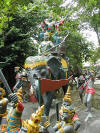
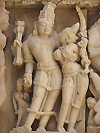
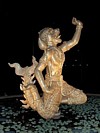
_small.jpg)
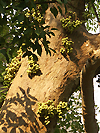



%20scarab%20beetle_small.jpg)
%20winged%20termites_small.jpg)

%20water%20scavenger%20beetle%20(Hydrophilidae)_small.jpg)



%20ma-fai%20(มะไฟ)_small.jpg)
_small.jpg)
_small.jpg)
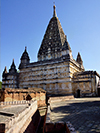

%202_small.jpg)

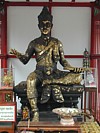
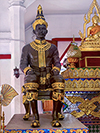
_small.jpg)
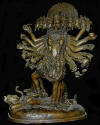
_small.jpg)
_small.jpg)
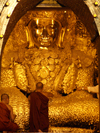
_small.jpg)

_small.jpg)
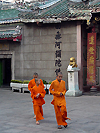
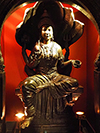
_small.jpg)

_small.jpg)
%201_small.jpg)
_small.jpg)
%202_small.jpg)
_small.jpg)
_small.jpg)
%20seahorse_small.jpg)
%20มะฮอกกานี%201_small.jpg)

_small.jpg)



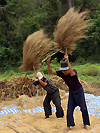

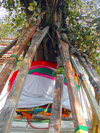
%20natural%20grass%20broom_small.jpg)
%20เลียงผา_small.jpg)


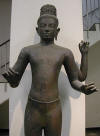
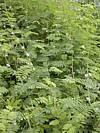
_small.jpg)

_small.jpg)
%20sugar%20coated%20tamarind%20candy_small.jpg)
%20tamarind%20candy_small.jpg)
%20tamarind%20candy_small.jpg)


_small.jpg)
_small.jpg)
_small.jpg)
_small.jpg)
_small.jpg)
%20มะเขือปู่_small.jpg)
%20crisp%20eggplant_small.jpg)
_small.jpg)
_small.jpg)
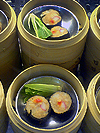
%20nariphon%20(นารีพล)%20woman%20fruit_small.jpg)
%20Thai%20plum_small.jpg)
%202_small.jpg)
_small.jpg)
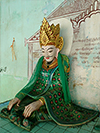

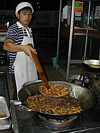
%20แมลงนูนหลวง%201_small.jpg)


_small.jpg)
_small.jpg)
%20แมลงวันหัวบุบ%201_small.jpg)
%20แมลงวันหัวเขียว_small.jpg)

%20แมลงหวี่%202_small.jpg)

_small.jpg)

%201_small.jpg)
%20งูกะปะ%202_small.jpg)
,%20Chiang%20Mai%20Zoo_small.jpg)
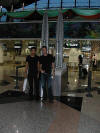
_small.jpg)
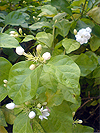
%20มะลิฝรั่ง_small.jpg)

,%20Nepal_small.jpg)
_small.jpg)
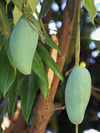

%201_small.jpg)
_small.jpg)


_small.jpg)
_small.jpg)

_small.jpg)
%20เป็ดเเมนดาริน_small.jpg)
_small.jpg)
_small.jpg)
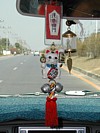
_small.jpg)

%20Sonneratia%20alba_small.jpg)
%20งูปล้องทอง_small.jpg)
%20งูพังกา_small.jpg)
%20เต่ากระอาน%202_small.jpg)


_small.jpg)
_small.jpg)
_small.jpg)
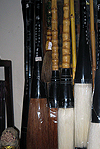
_small.jpg)
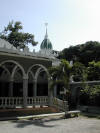
_small.jpg)
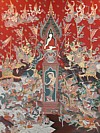
_small.jpg)


%20Moringa%20oleifera%201_small.jpg)
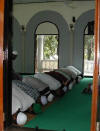
_small.jpg)

_small.jpg)

_small.jpg)
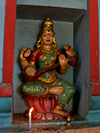
%20mudmee%20(ikat)%202_small.jpg)
_small.jpg)
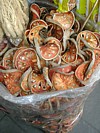
,%20Indra's%20charioteer_small.jpg)
_small.jpg)
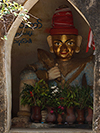
_small.jpg)
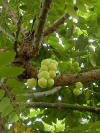
_small.jpg)
_small.jpg)
_small.jpg)
%20ren%20sheng%20guo_small.jpg)

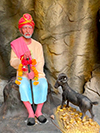
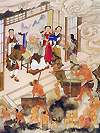
_small.jpg)
,%20Myanmar_small.jpg)
_small.jpg)



,%20Mingun%202_small.jpg)
%20crematorium%202_small.jpg)
%20Meru%20Brahmathat,%20Phimai_small.jpg)
_small.jpg)

_small.jpg)
_small.jpg)

_small.jpg)
_small.jpg)
,%20Happy%20or%20Chinese%20Smiling%20Buddha%202_small.jpg)
%20vu%20sua_small.jpg)
_small.jpg)
_small.jpg)
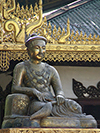
%202_small.jpg)

_small.jpg)
%202_small.jpg)

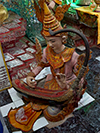
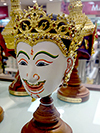
%20ethnic%20group%20from%20Vietnam_small.jpg)

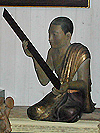
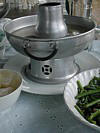
_small.jpg)
.jpg)
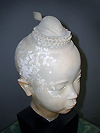
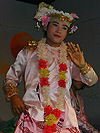
%201_small.jpg)
_small.jpg)



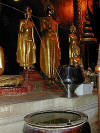
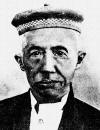
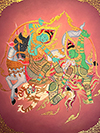
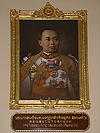
_small.jpg)

%20ตั๊กแตนหลังงอ_small.jpg)
_small.jpg)

_small.jpg)
_small.jpg)

_small.jpg)
_small.jpg)
%20fried%20pork%20with%20garlic_small.jpg)
%201_small.jpg)

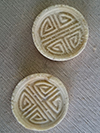
%202_small.jpg)
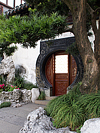



_small.jpg)
%20Thai%20snack%20of%20dry%20pork%20slices_small.jpg)
%20charcoal%20grilled%20pork_small.jpg)
%20Thai%20pork%20sausage_small.jpg)
_small.jpg)
,%20diamond-shaped%20floating%20leaf%20aquatic%20perennial%20%201_small.jpg)
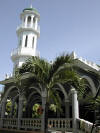
_small.jpg)

_small.jpg)
%20มอธเหยี่ยว%202_small.jpg)
%20นกกระทาป่าไผ่_small.jpg)
%20นกแว่นภูเขา_small.jpg)
%20กระรอกท้องแดง%201_small.jpg)
_small.jpg)

%20มวนมะเยา_small.jpg)
%20มวนมะเยา%202_small.jpg)
%201_small.jpg)
%202_small.jpg)
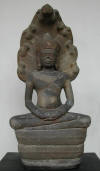


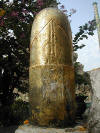

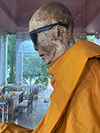
_small.jpg)
_small.jpg)
_small.jpg)



_small.jpg)
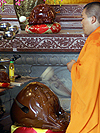
,%20cobra%20nats%20at%20Mandalay%20Hill%202_small.jpg)

